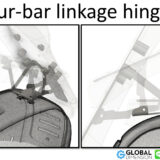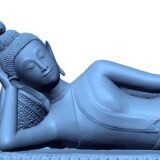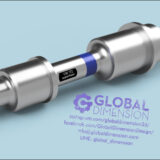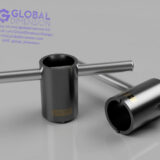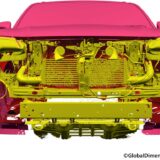Krabi Thailand: 3D laser scanning roots/rocks for art exhibition
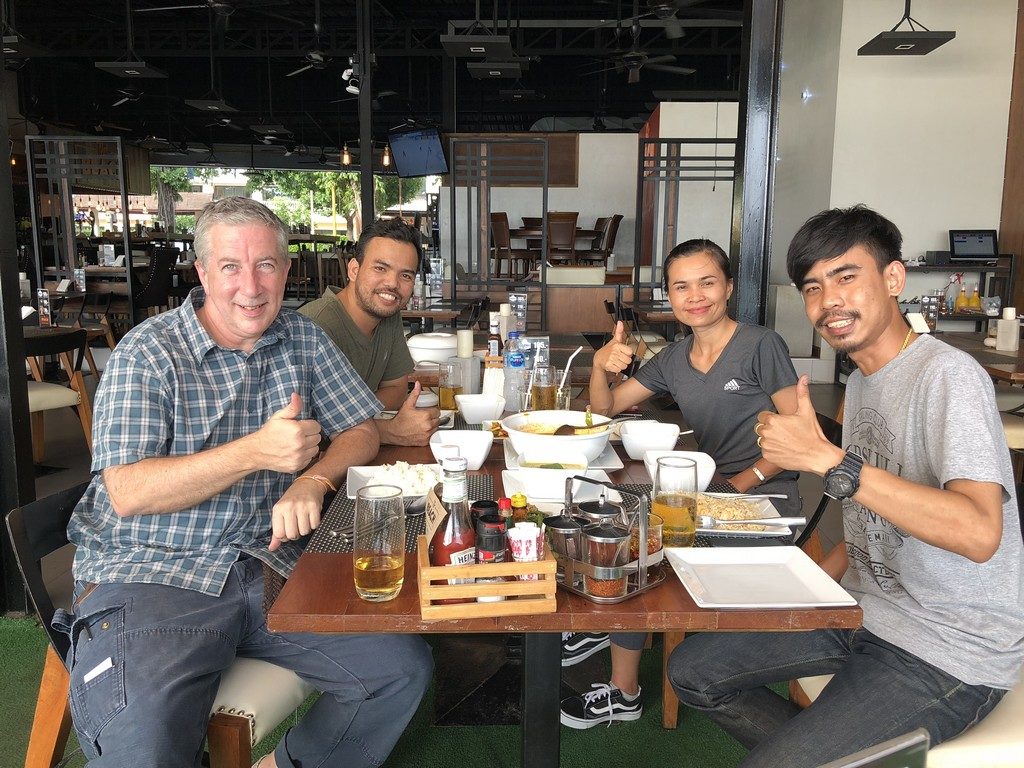
Day 1, early dinner. We are right on the beach and waves splash into the restaurant!
We had an exciting job in Krabi, Thailand. We 3D laser scanned tree roots, a 7-meter tall rock wall, and a 3200kg rock in Krabi, Thailand! Why? Thailand has a very large art festival every 2 years that exhibits art from over 80 international artists, and we were chosen to help 2 of the artists to support part of their creative process. We created computer-generated roots, vines, and rocks, that will be used as part of their creations. By using our 3D laser scanning tools, we are very proud to help with the promotion of Thailand and art.
If you want to see the final result, you will need to go to Krabi for the Thailand Biennale from November 2018 thru February 2019. The Office of Contemporary Art and Culture (OCAC) puts this show together. We worked with Khun Palin on this project, and she was wonderful and professional. More information about the event is located at this website http://thailandbiennale.org
Some may not know of Krabi, but it is one of Thailand’s most beautiful tourist destinations. We took some inspiring photos of the majestic Krabi beaches. We also ate at two spectacular restaurants, the Ruen Mai (https://www.facebook.com/ruenmaikrabirestuarant/) and The Grotto (http://www.rayavadee.com/en/) and we took plenty of photos for your enjoyment. You really do not want to miss the adventure we had on the last day, so stick with the story to the very end!!
The root/vines and one of the rock formations we scanned were at the Thanbok Khoranee National Park. What a wonderland of bridges and walkways meandering through the forest. We have included some photos of some of the views inside the park. We were busy, so we did not get a lot of time to get really great pictures, but I think you will get a good feeling for the sheer beauty of the work location.
The last object we needed to scan was a rather large rock. It was not in the park, but was close to Krabi town centre. We hired a crane to move the rock, as we needed to scan it completely, even the bottom.
All the logistics were handled perfectly by Khun Orn. She hired a crane! She also organised a scaffolding team, as many of the objects we scanned were 7+ meters in the air. The scaffold team also supplied tarps to drape over the scaffold, as our scanners do not like to scan in bright sunlight. We needed protection from the sun as our 3D laser scanning equipment did not like the very hot sun and 35C temperature. Us humans also suffered from the sun and high temperature, and you will see some sunburns on the last day photos.
Special thanks to:
- Thanbok Khoranee National Park team. Without them, none of this would be possible.
- The one and only Khun Palin from the Office of Contemporary Art and Culture (OCAC). Wonderful person and very patient.
- Khun Buranang and Khun Buranee rented us the Artec scanner. If you want to buy an Artec, please contact us and we will put you in touch with Khun Buranang and Khun Buranee
- Khun Sakasem Faibun was the leader of the scaffold and crane team. They were AWESOME.
Day 1:
The Global Dimension team drove 12 hours from Bangkok to Krabi, so they were very tired. We met with Khun Tan and Khun Noona from the Office of Contemporary Art and Culture (OCAC). They showed us around the different roots and rocks, and made sure we had electricity and full access to everything we need. We called it an early day and went to the beach for dinner.
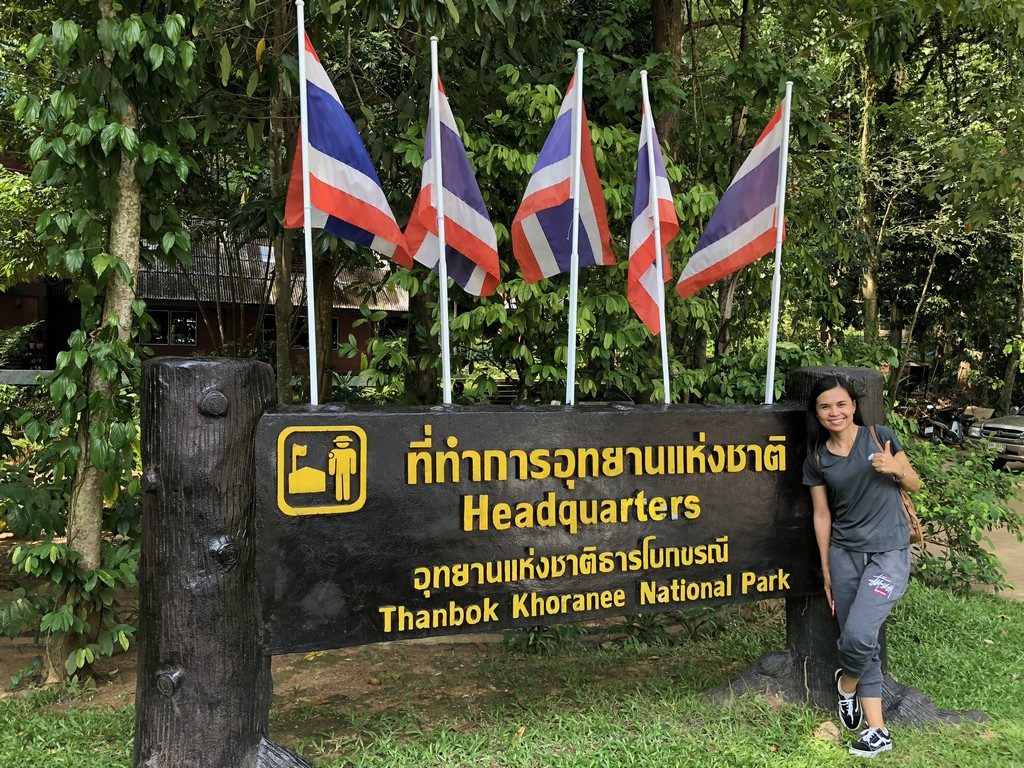
Orn will always pose with a sign! This is the park with the roots we are scanning.
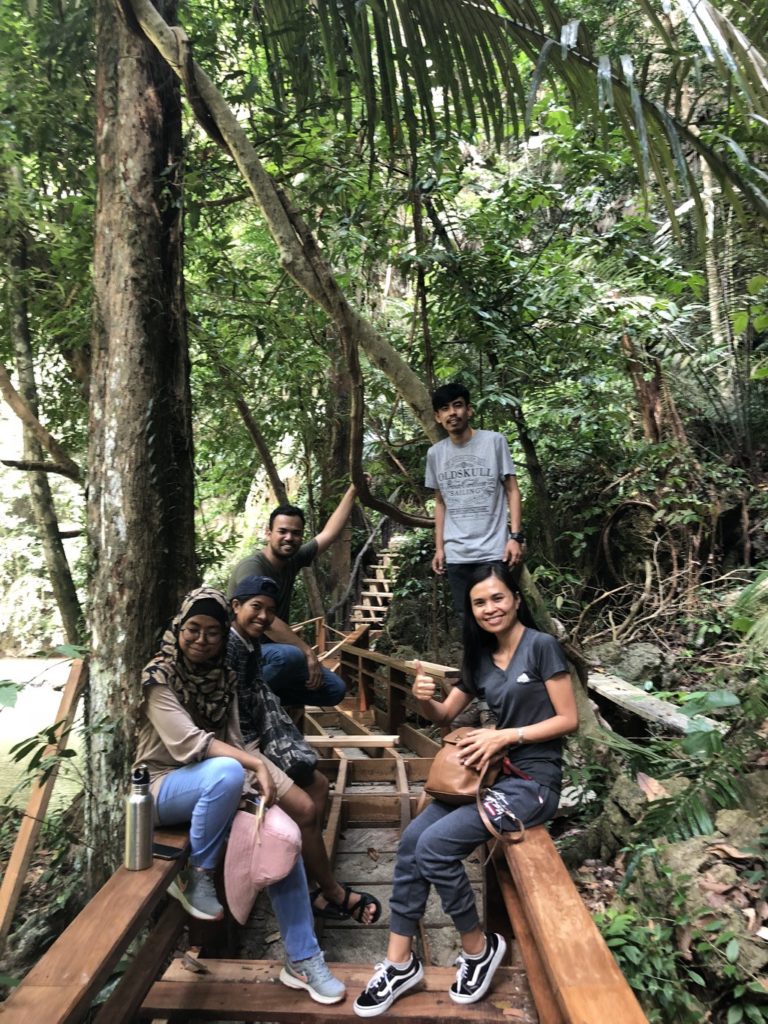
Meeting with Khun Tan and Khun Noona from the Office of Contemporary Art and Culture (OCAC). Lovely location and people.
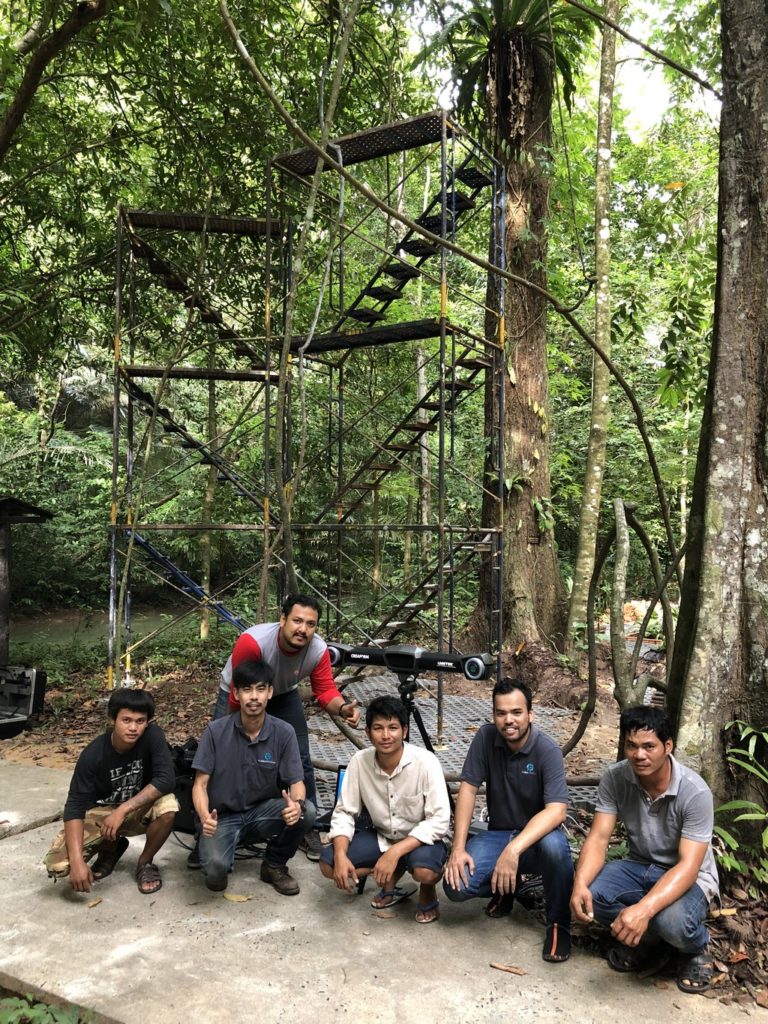
For the next 3 days, the Global Dimension team and the scaffold team work as one team.
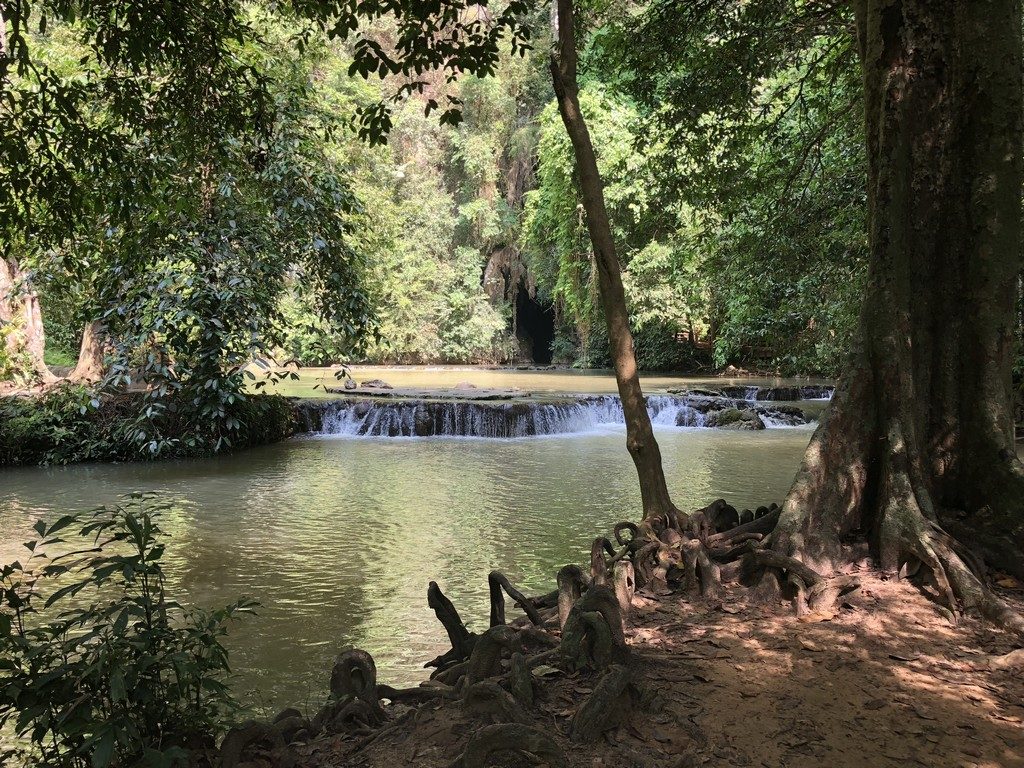
Next to our scanning location, at Thanbok Khoranee National Park.

Day 1, early dinner. We are right on the beach and waves splash into the restaurant!
Day 2:
We got up early and met with the scaffolding team. 2 locations were setup at the same time, so we could move from one to another as the sun moved or wind picked up and made a location unscannable. We cannot scan dangling roots with the wind, as we need our objects to be very still. Our 3D laser scanners do not like bright sunlight, so we need to move our location and sun-blocking tarps from time to time. We scanned the “curly roots” first, then the wind picked up and moved to the “roots at the bridge” location, and later that day we moved back to the “curly roots”.
We were in the park still scanning after sunset. It was a long day. We packed up all our Creaform Metra and Artec Eva 3D laser scanners and headed to the hotel.
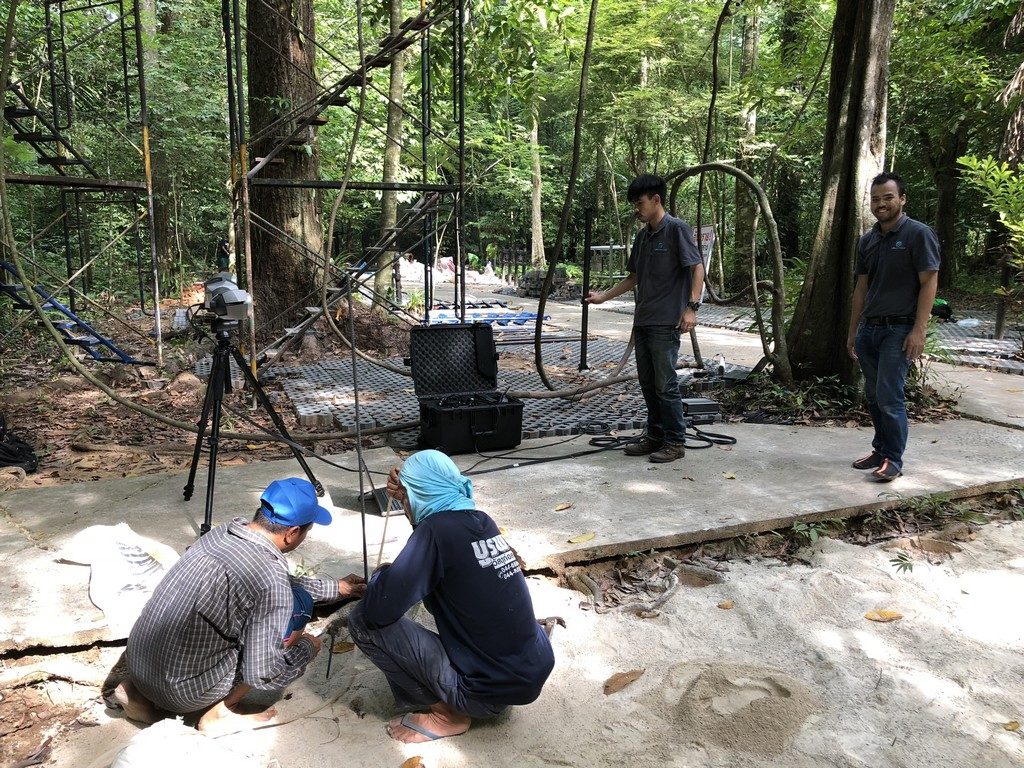
Calibrating the Creaform Metra scanner. We need to make sure it is accurate, even for roots.
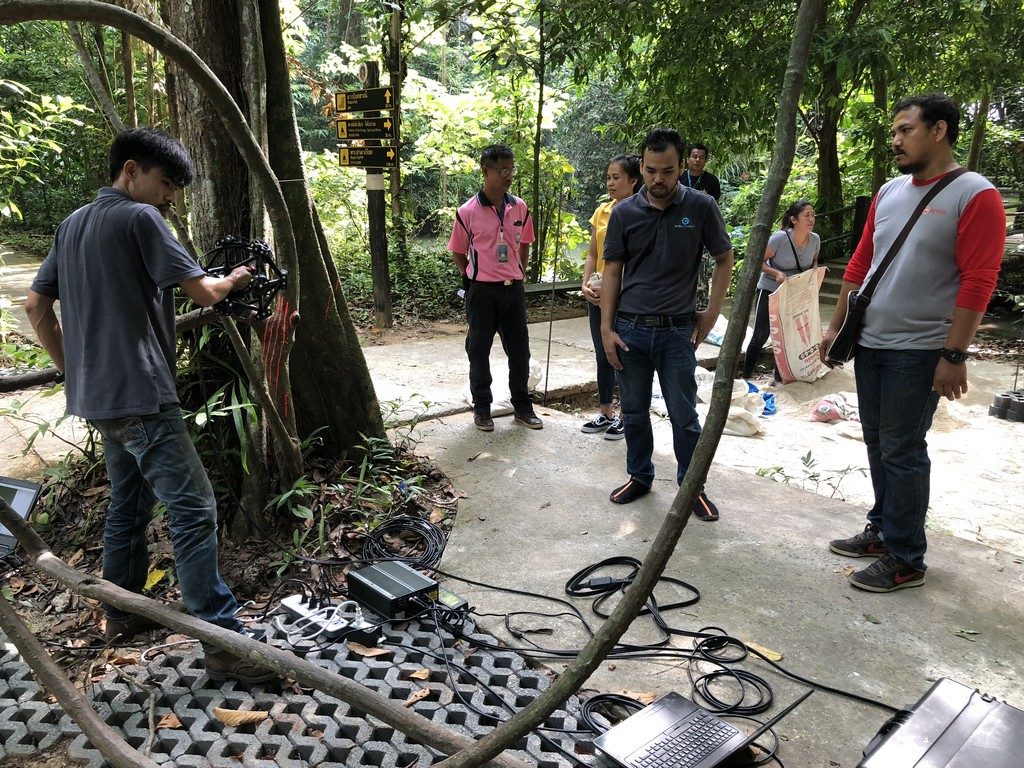
Getting started. We get the lower roots first.
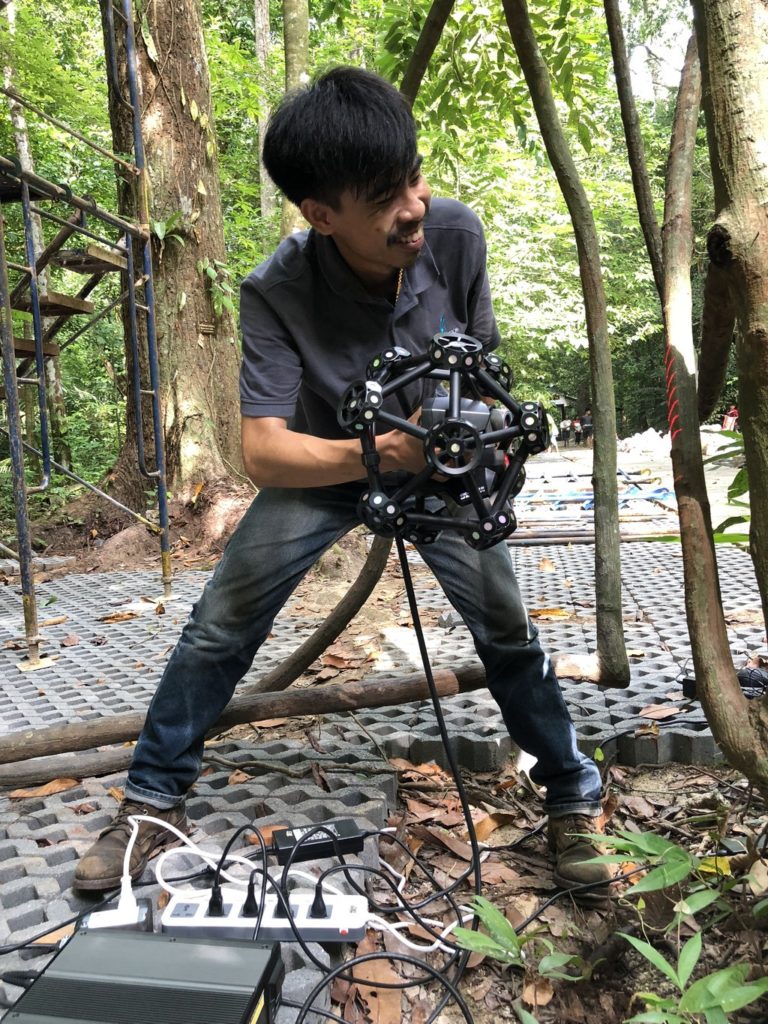
Scanning with style (and a smile).
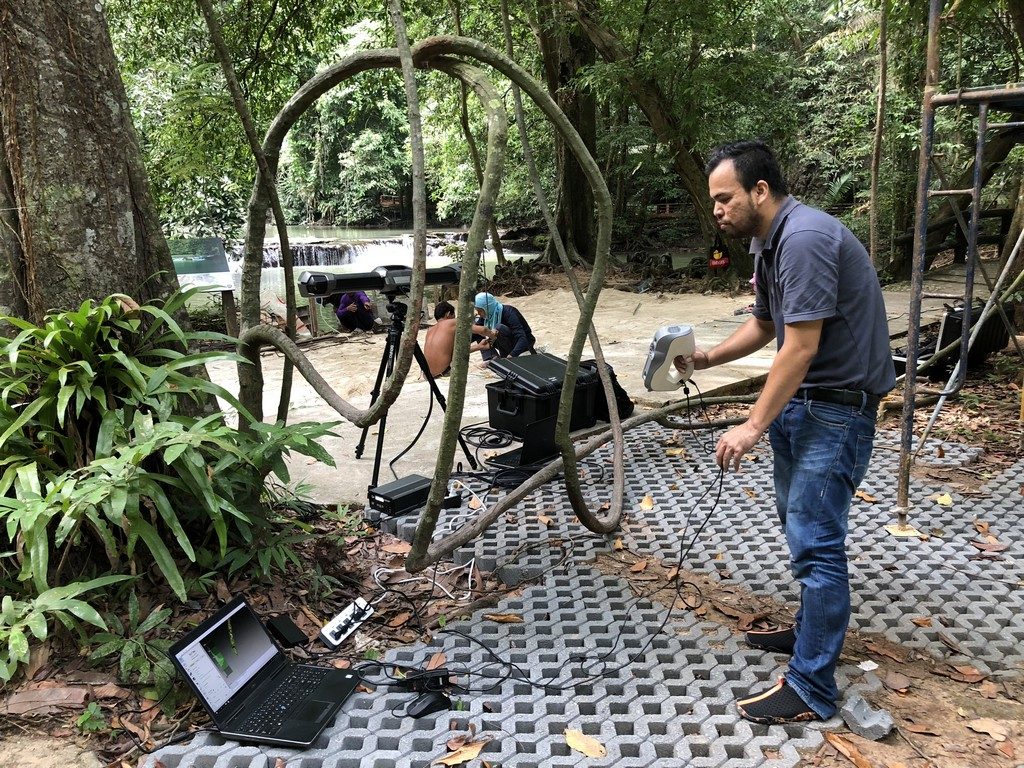
Ek uses the Artec scanner. Fast and very easy to use.

Next to our scanning location, at Thanbok Khoranee National Park.
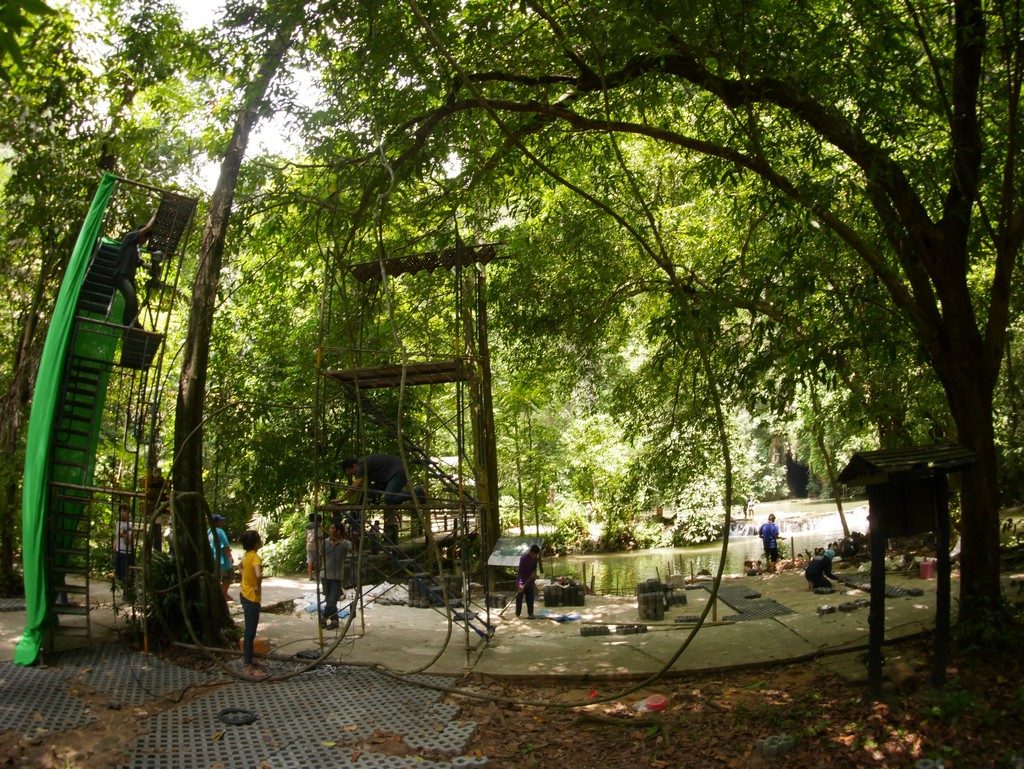
Scanning next to idyllic waterfalls.
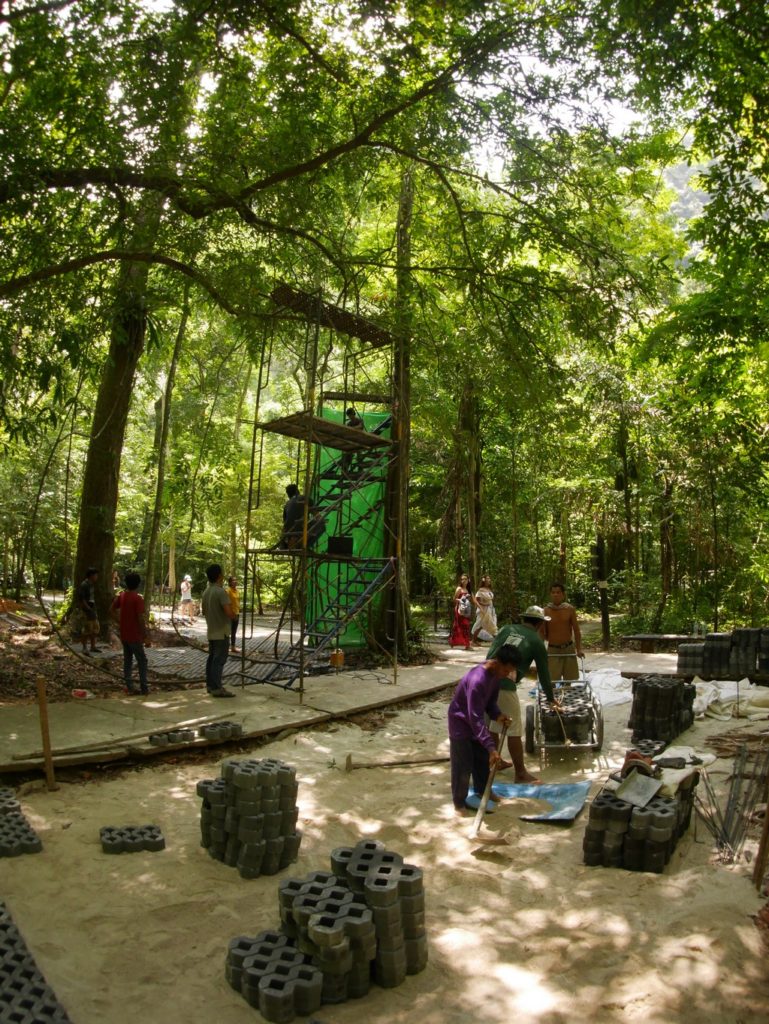
Next to us, they were building new sidewalks.
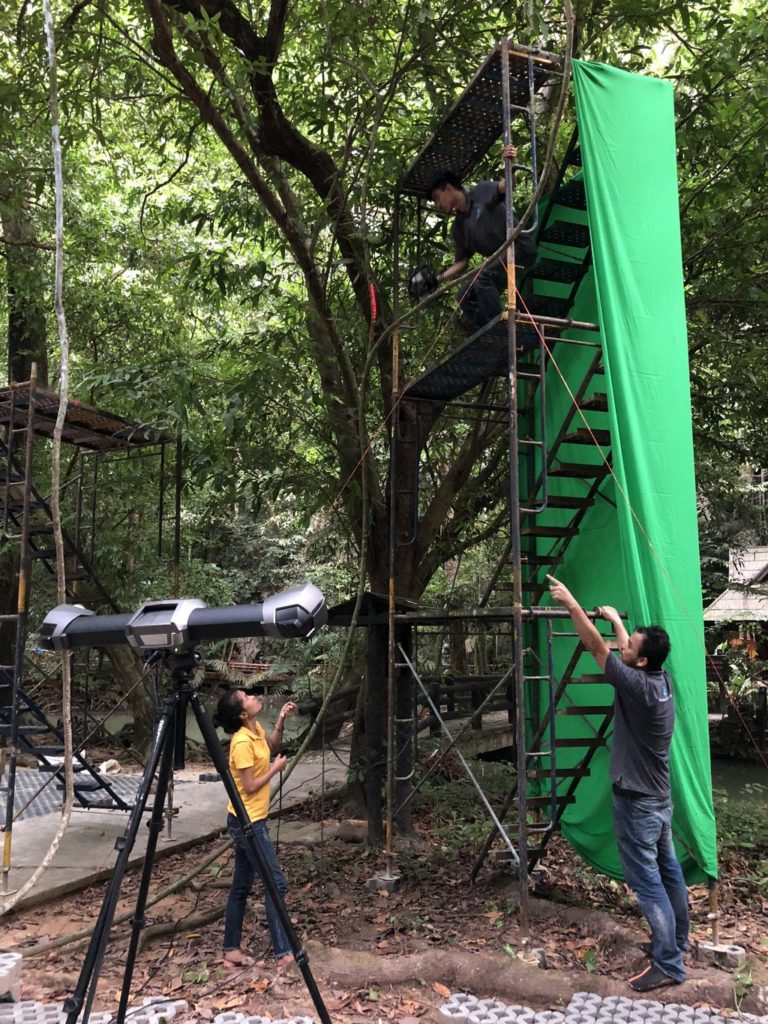
Fluke being told to lean out more!!!
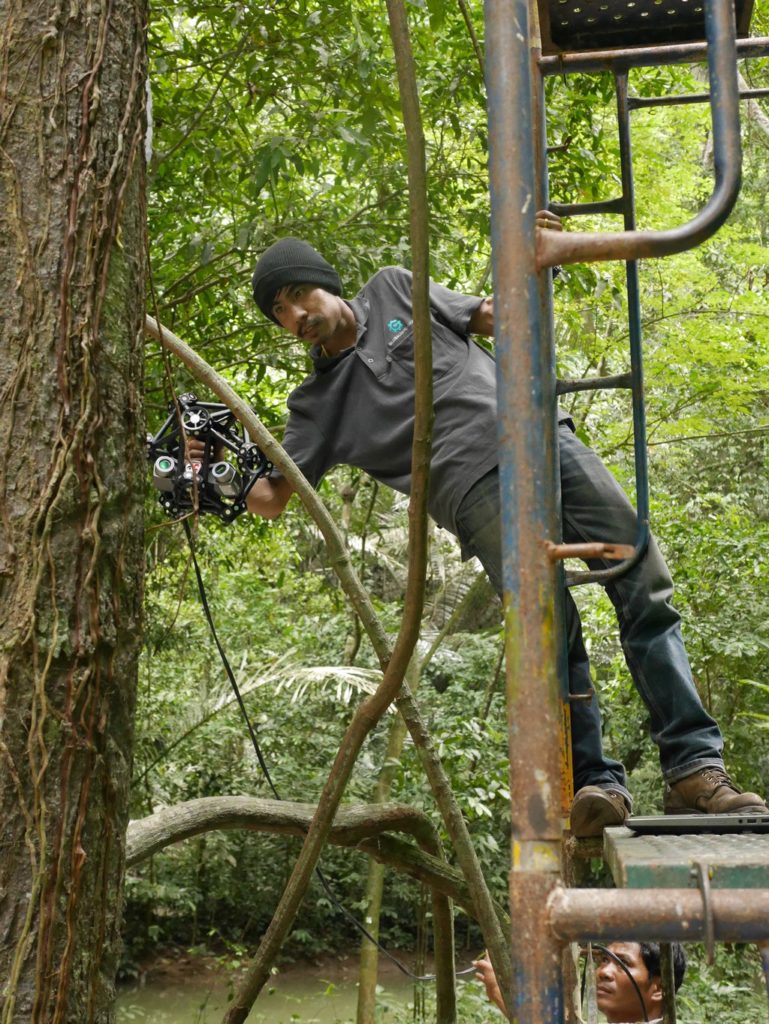
Fluke leans out for a very long root.
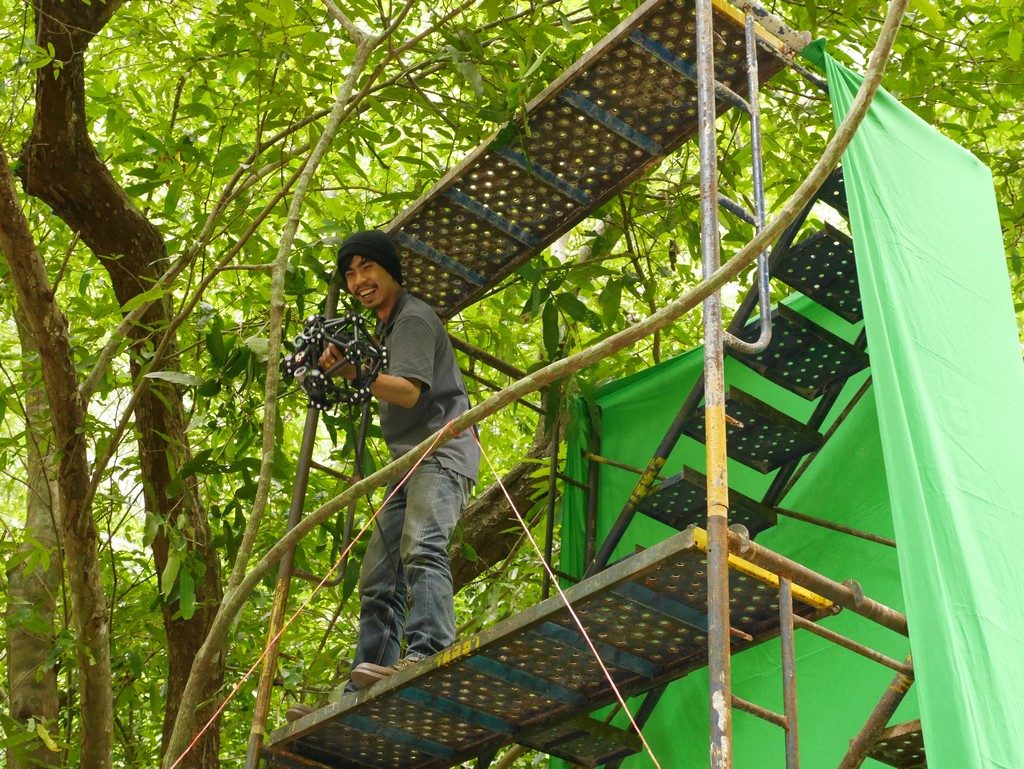
Still early in the day and full of smiles.
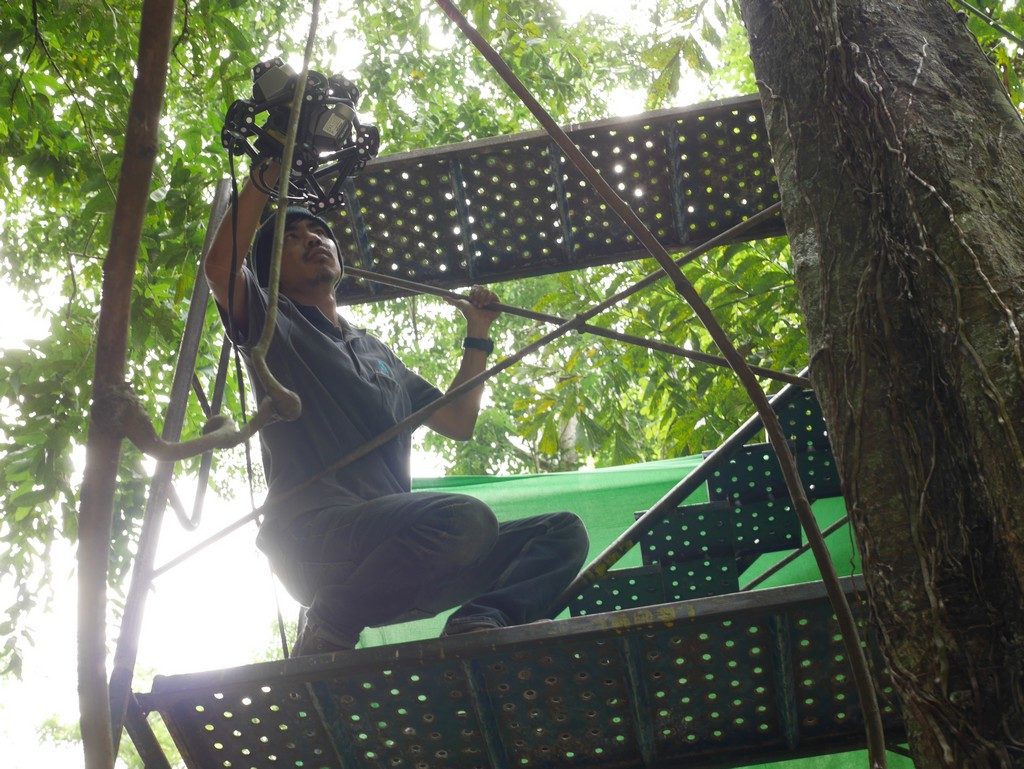
Concentration.
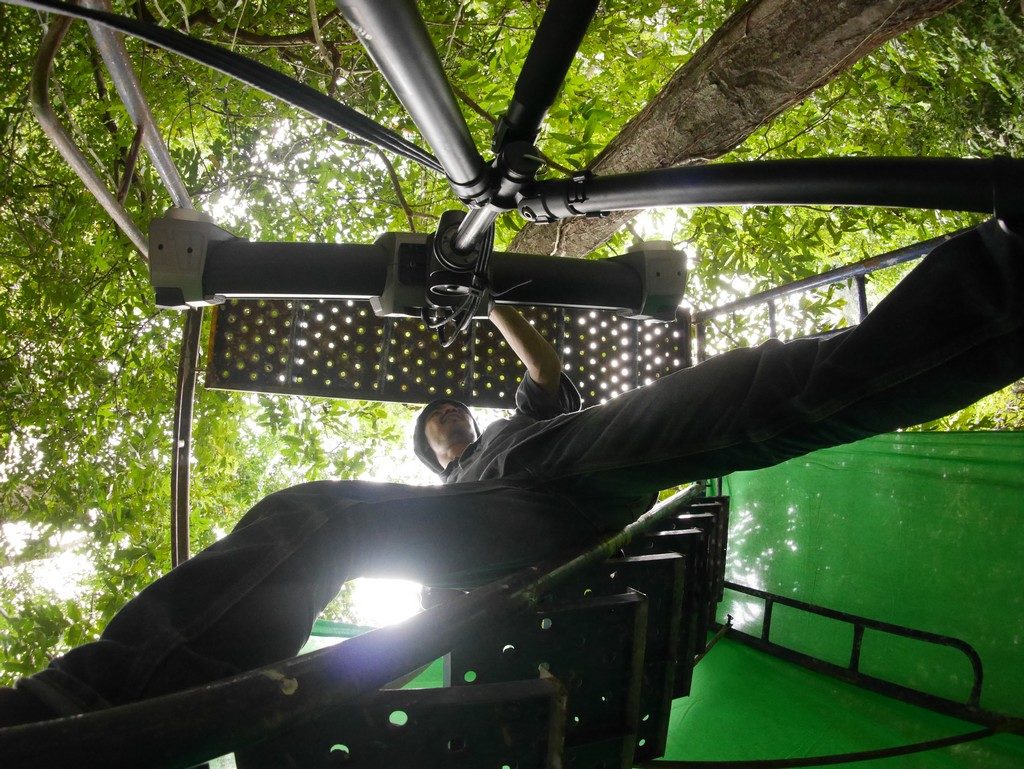
Crotch shot. Fluke’s turn with the Creaform C-track.
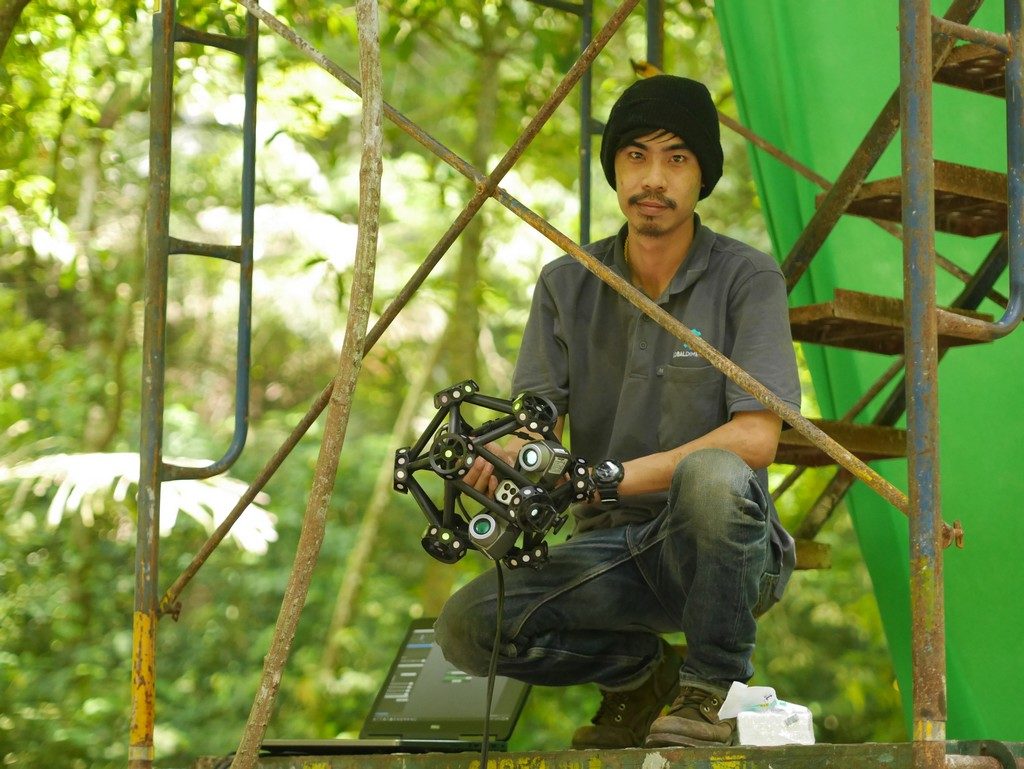
Looking like a model.
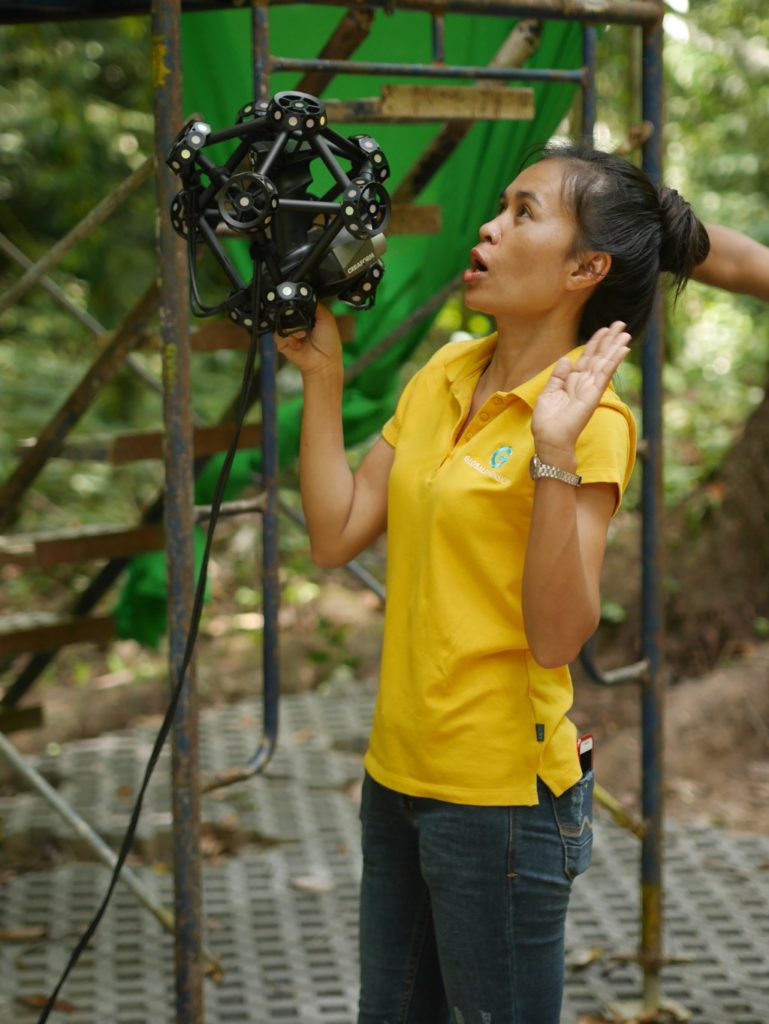
Khun Orn always helping.
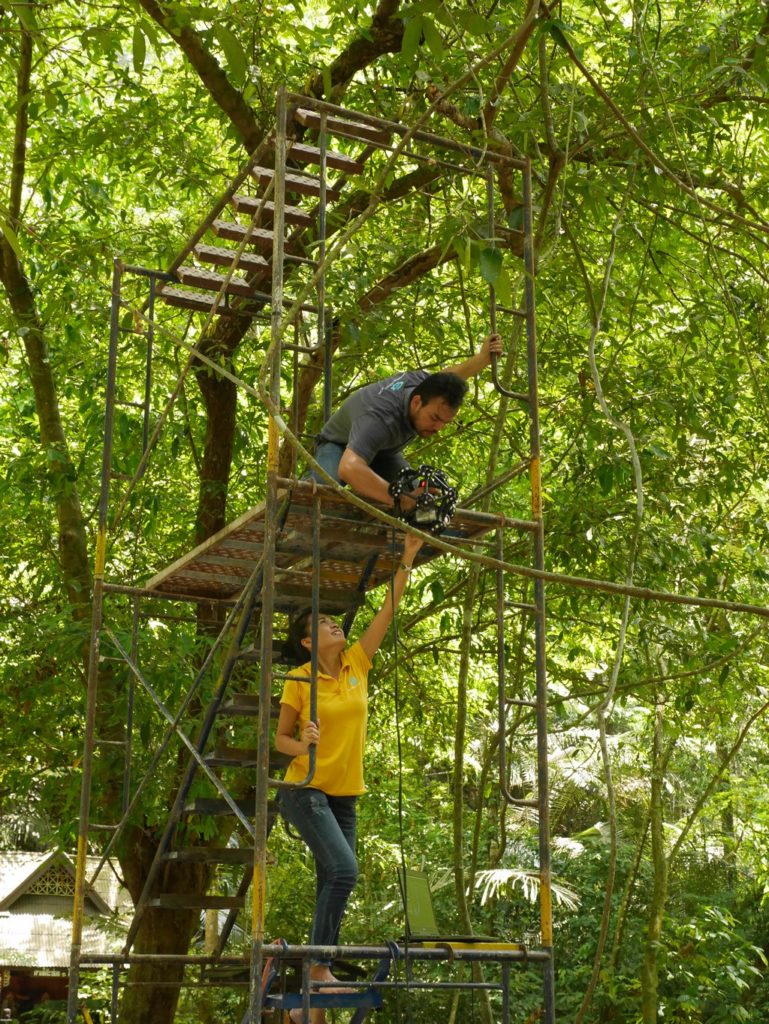
Orn is the Office Manager. She hands the scanner to Ek.
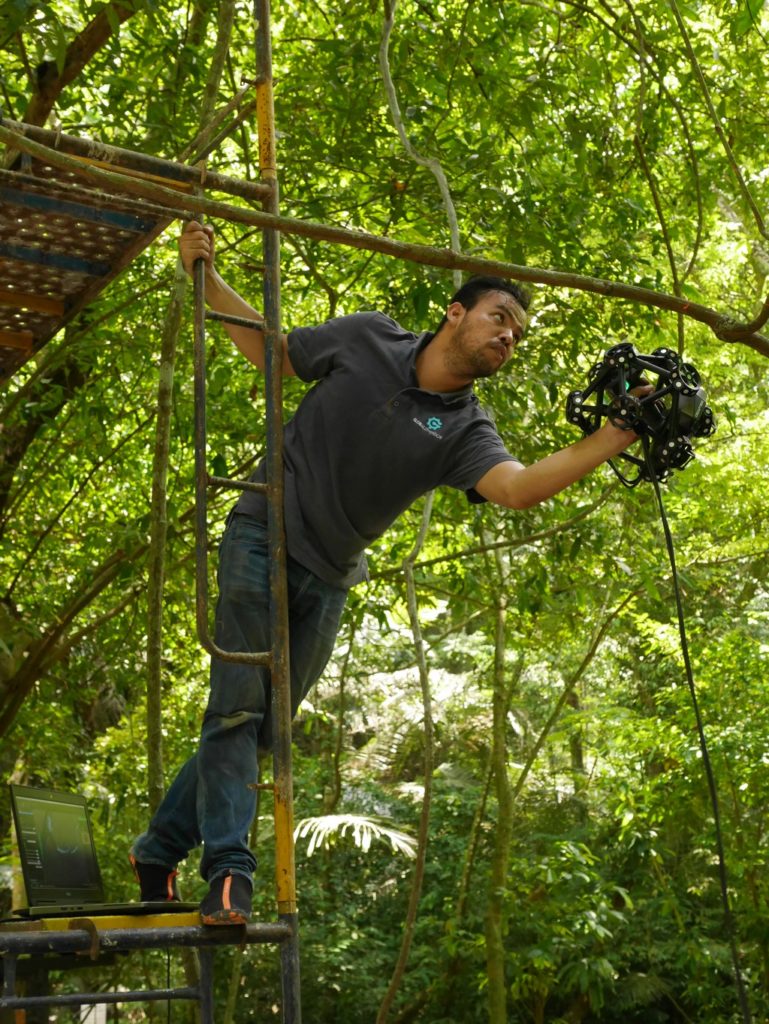
Fluid. Graceful.
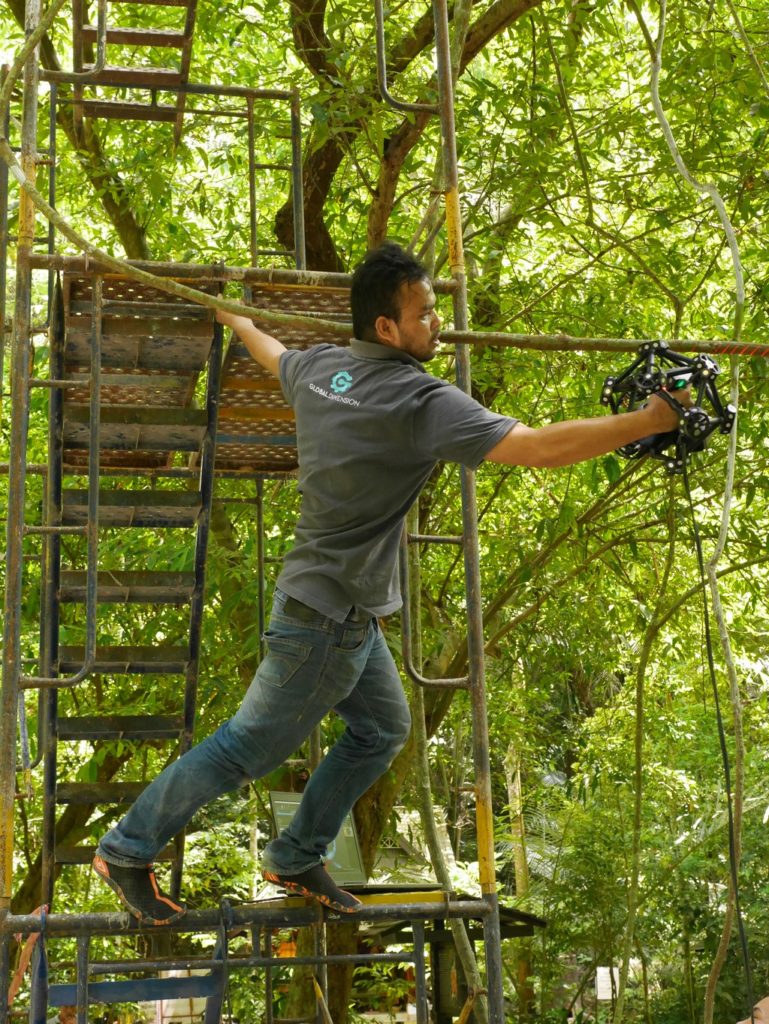
Scanning ballet. Art in motion.
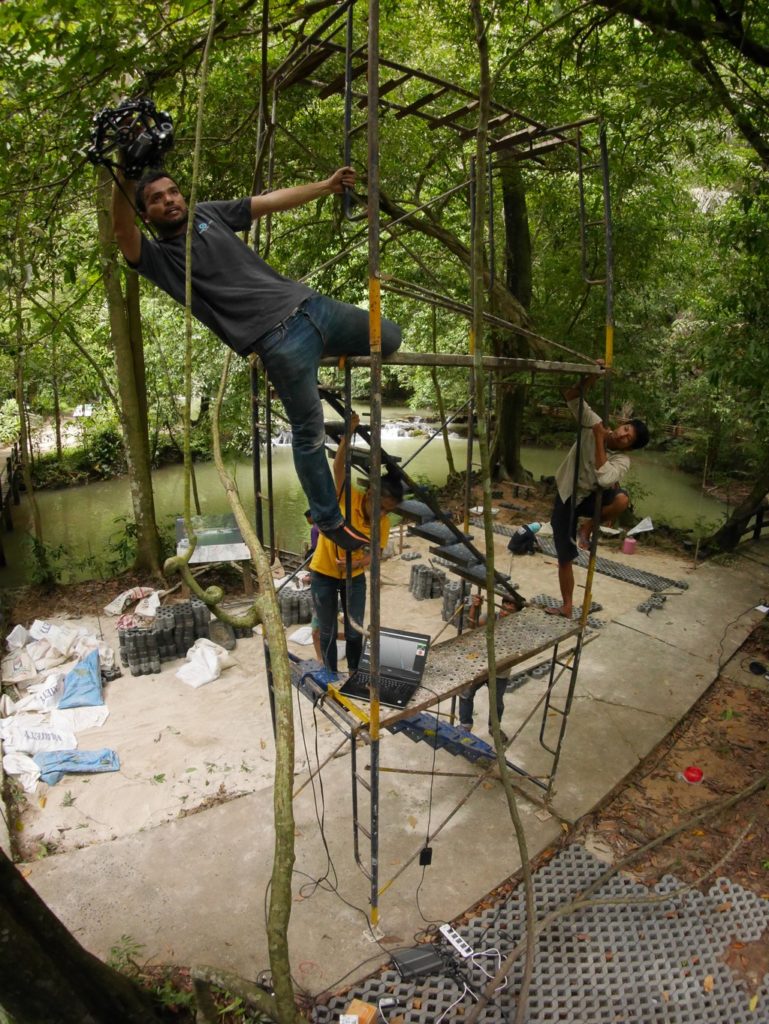
Mom, don’t look.
Roots on the bridge:
We moved to the roots at the bridge. These roots and vines were easier to scan as they were nice and thick. But the location was challenging as the walkway was under construction, and our scaffolding was in the mud next to the water. They assured us it was stable!
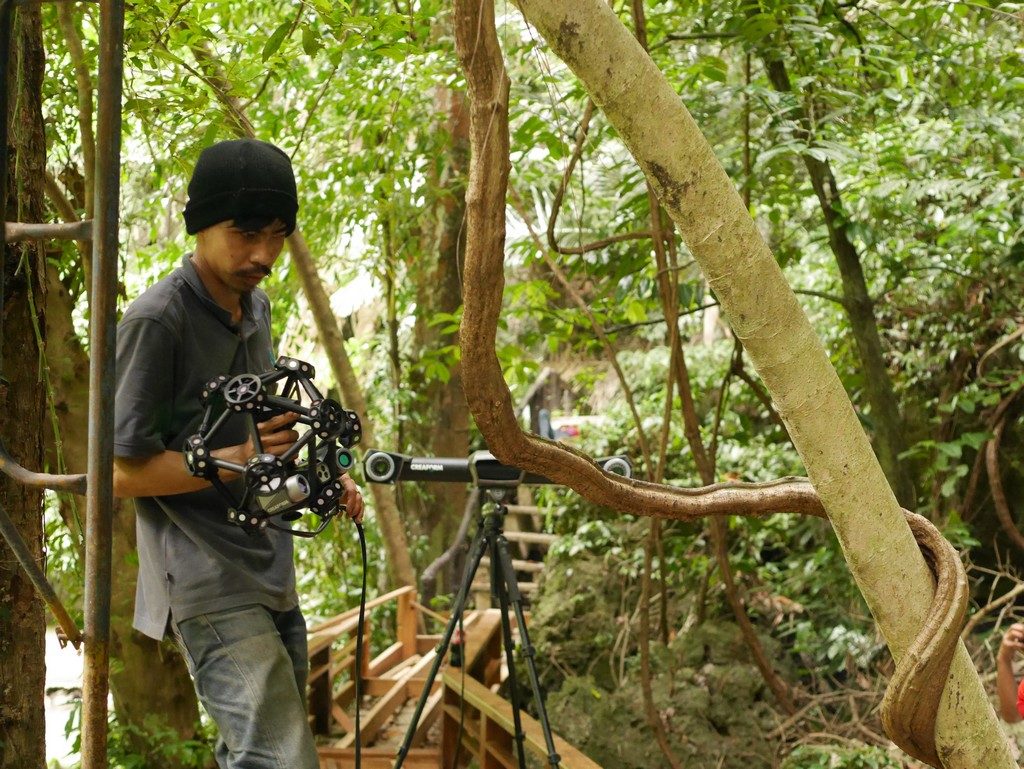
Hey Fluke it is 35C (95F) and 99% humidity. Is your head cold?
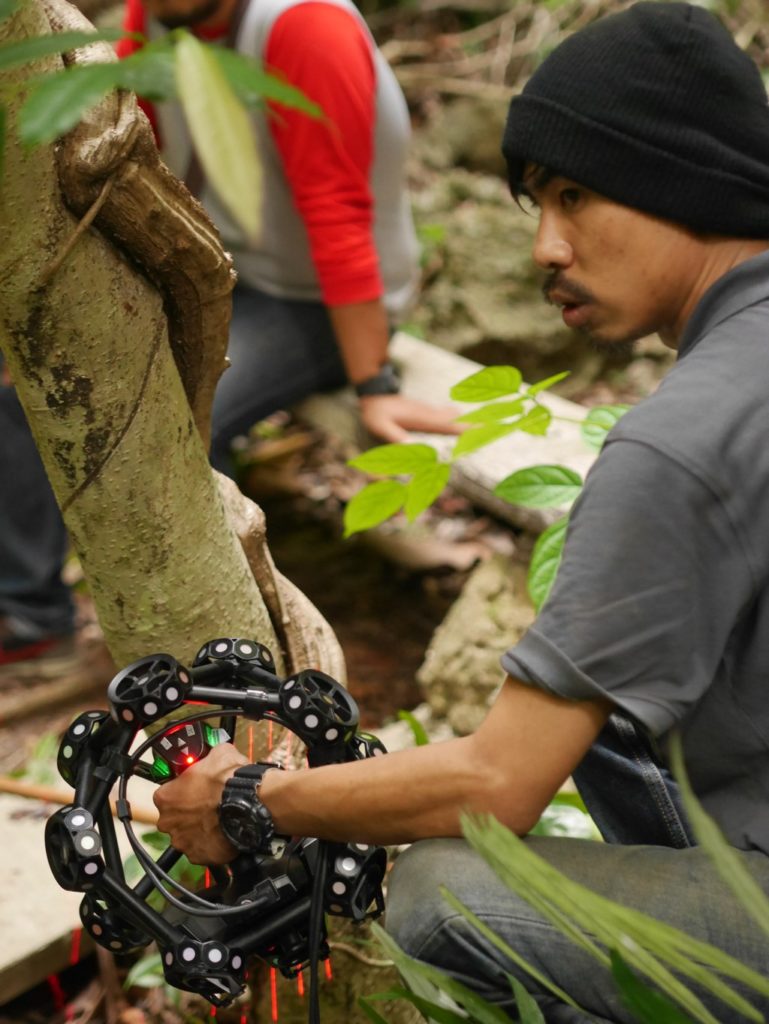
If I saw this guy in a jungle, I would run!
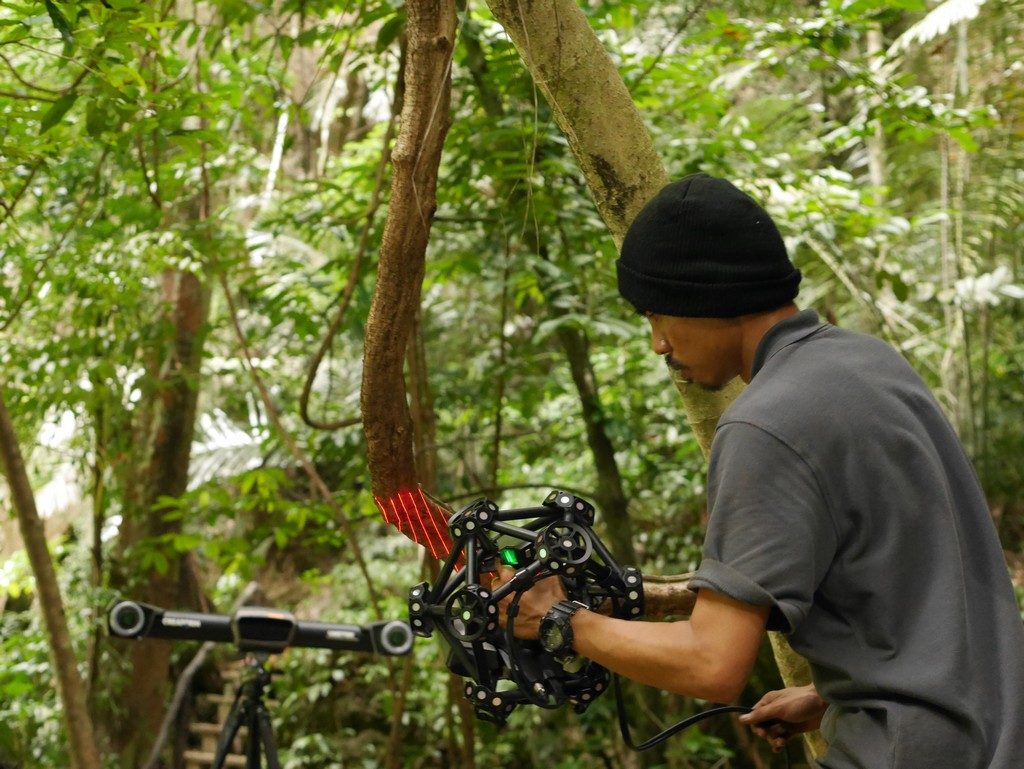
Creaform C-Track and Metra, in action.
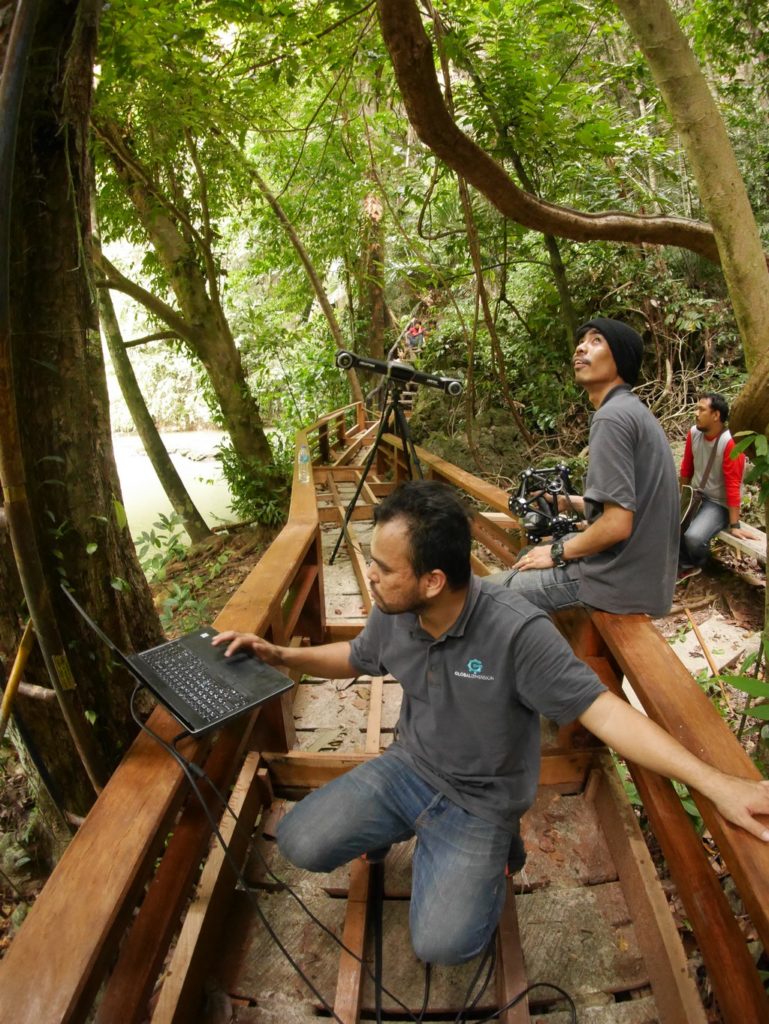
“I have to go up there?”
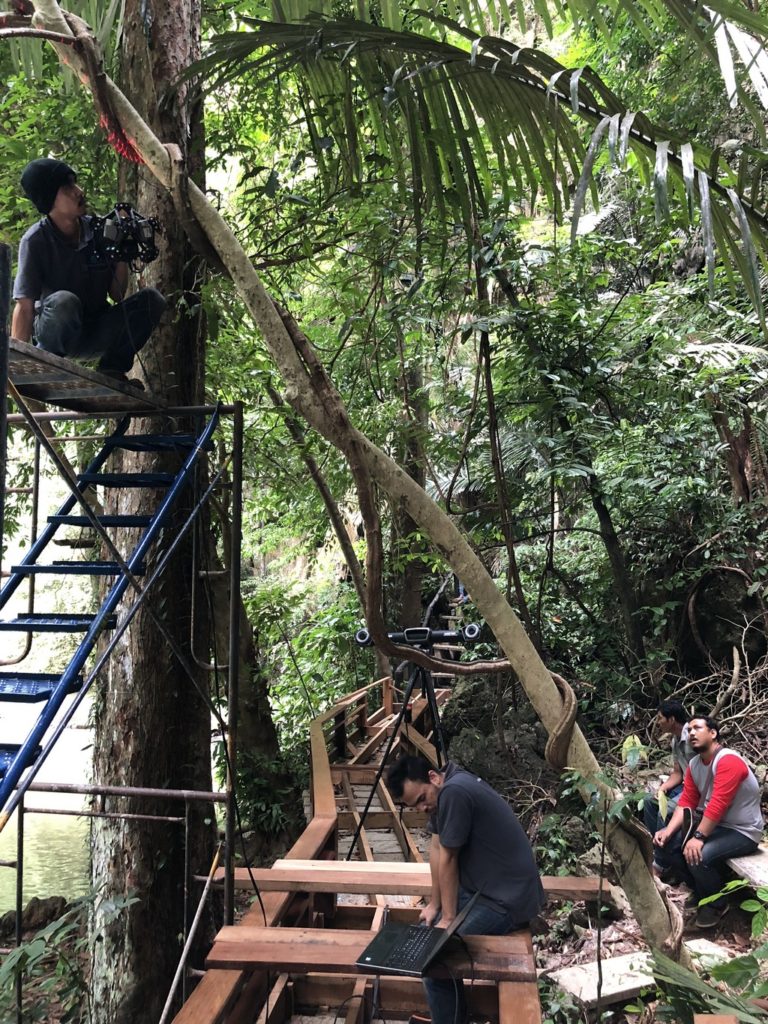
Is that a snake! Just kidding.
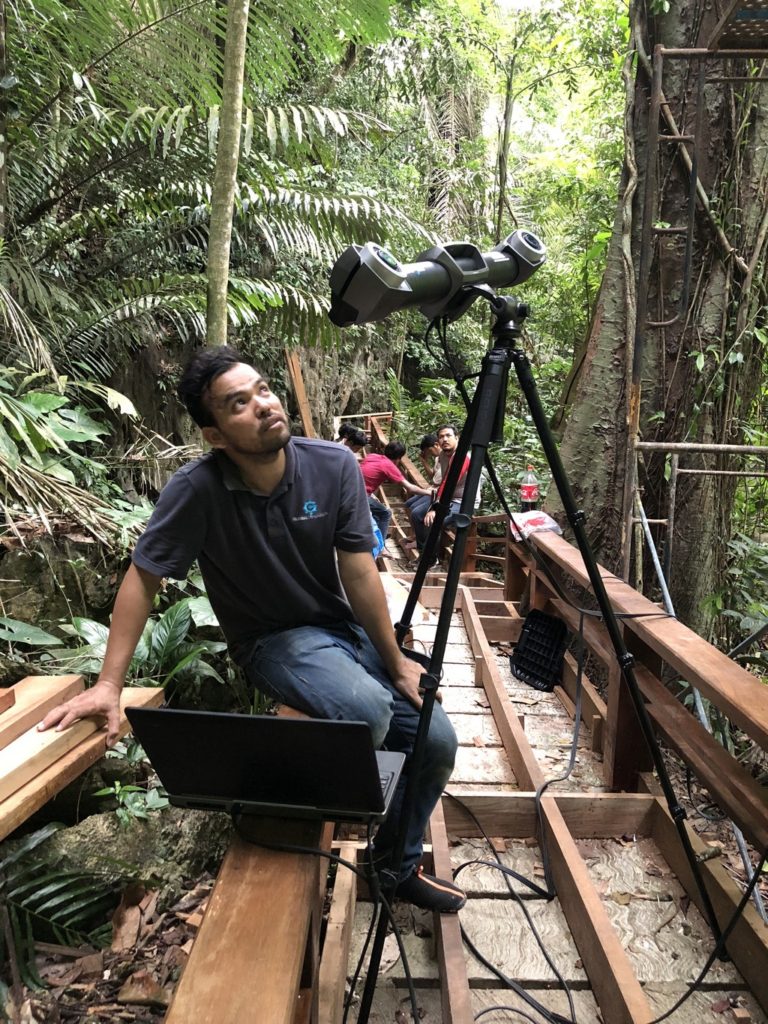
Fluke is the youngest, so he goes to the top.
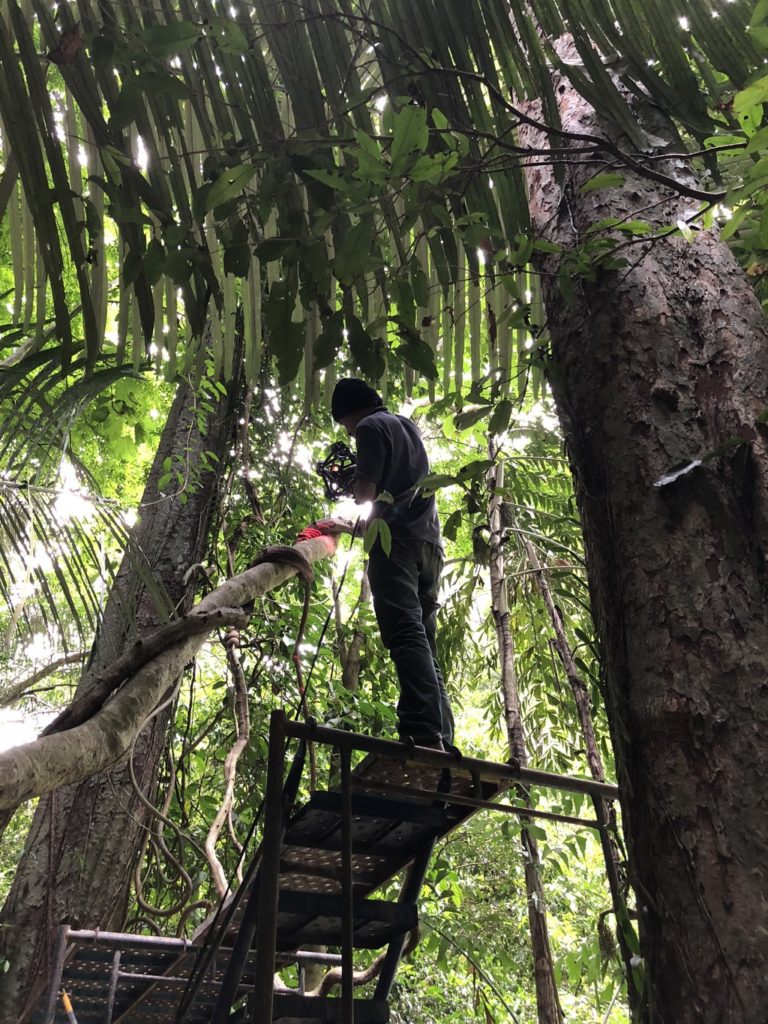
Pretty high up that tree. Thank you Fluke.
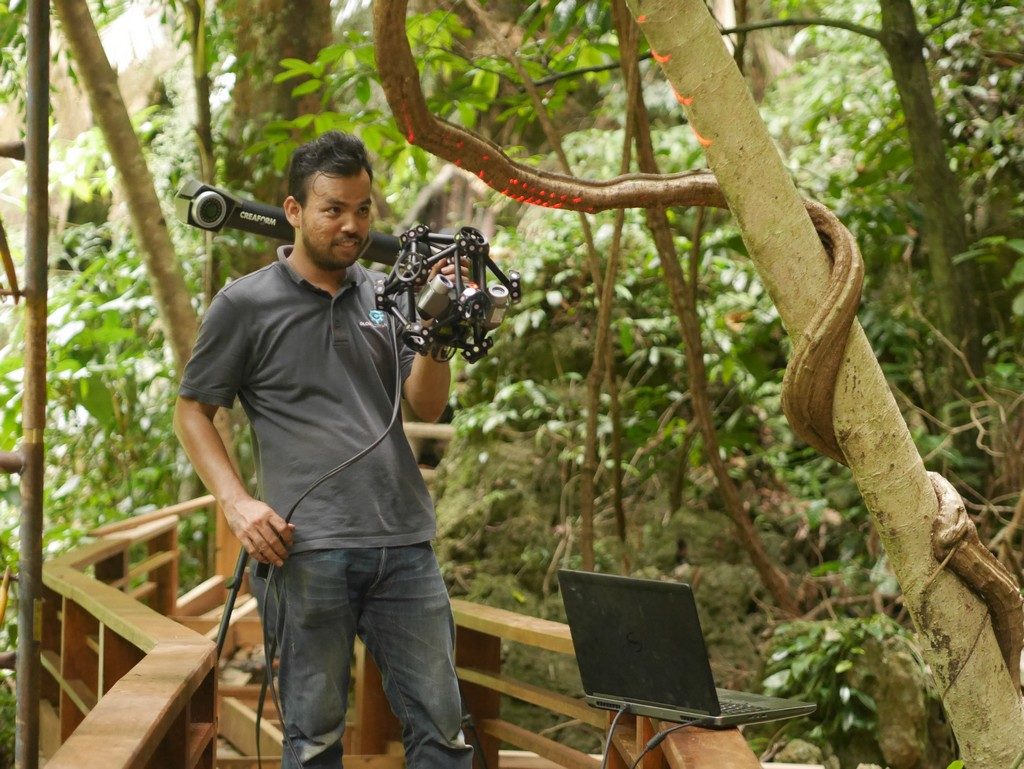
Ek takes over. It is tiring to scan for 12 hours.
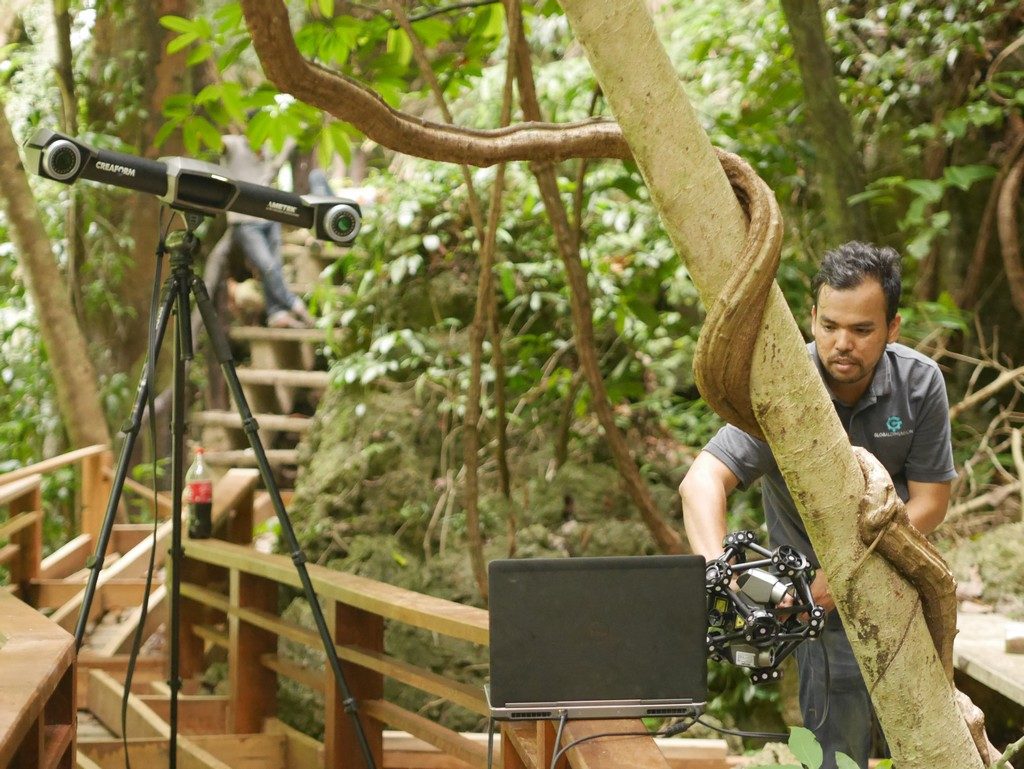
On and on it goes, when it ends nobody knows.
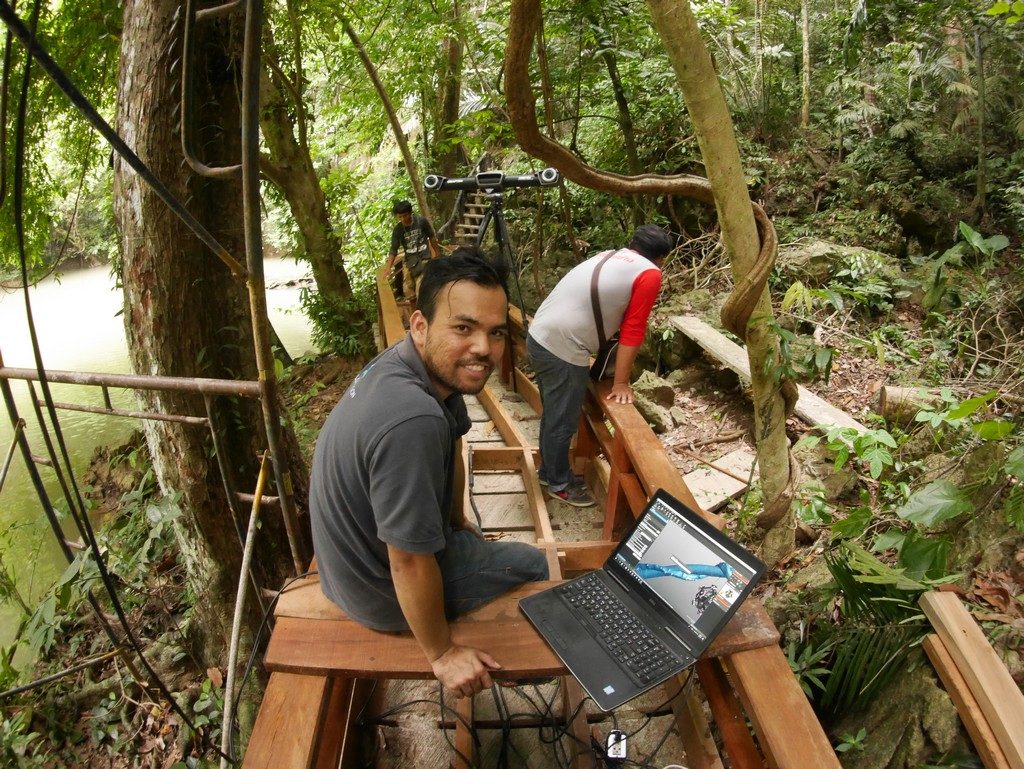
Checking progress.
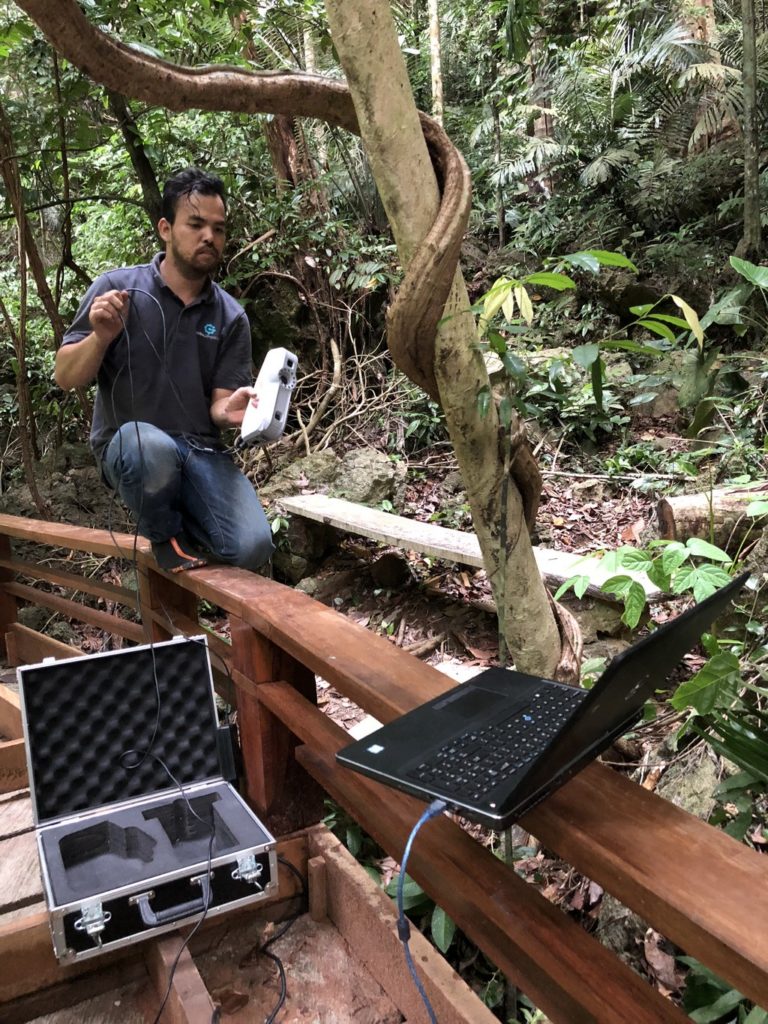
Ek strikes a pose, balancing with the Artec Eva 3D scanner.
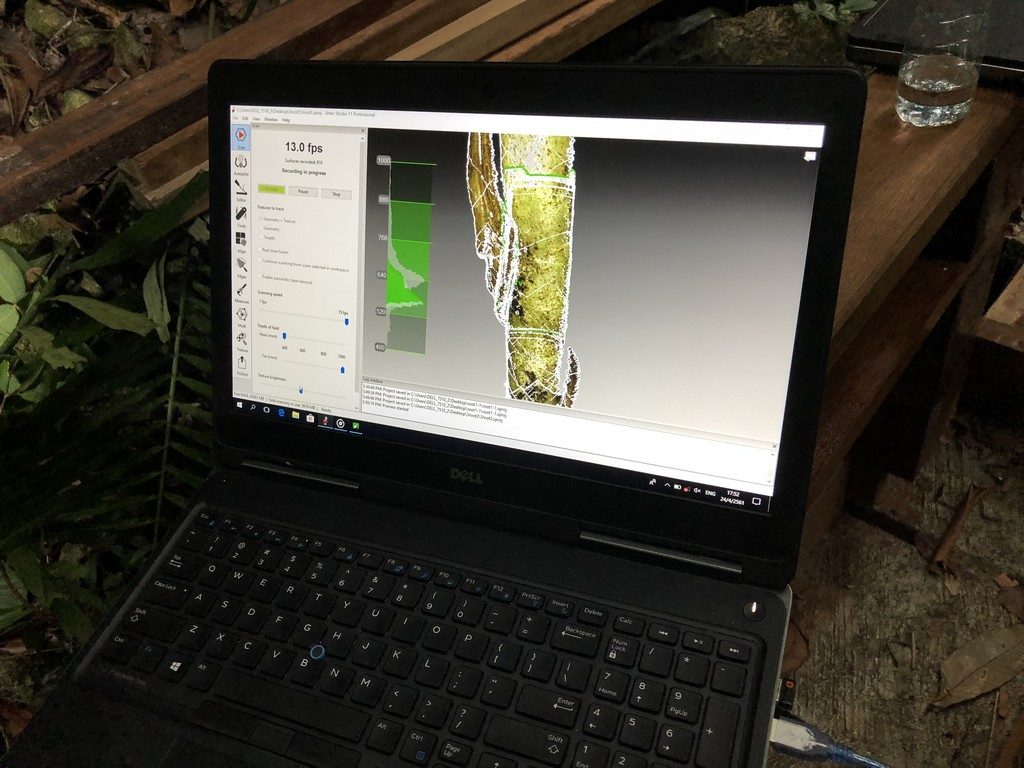
The Artec 3D scanner software gives great real-time feedback.
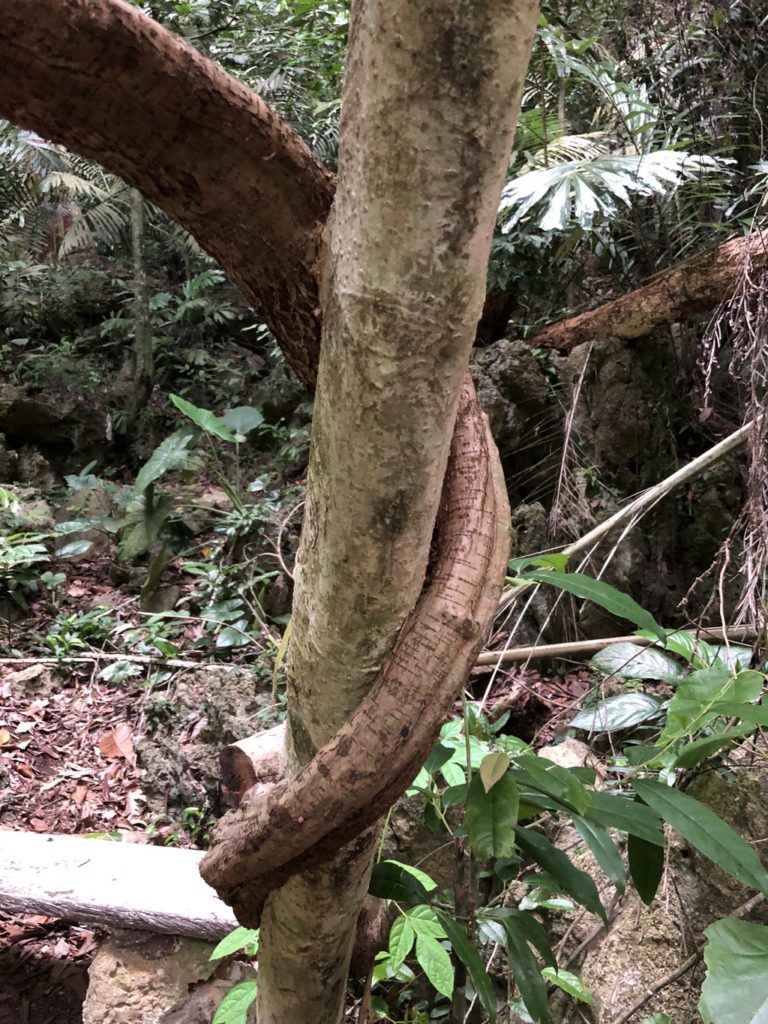
I think these trees are in love. Or they are strangling each other. You decide.
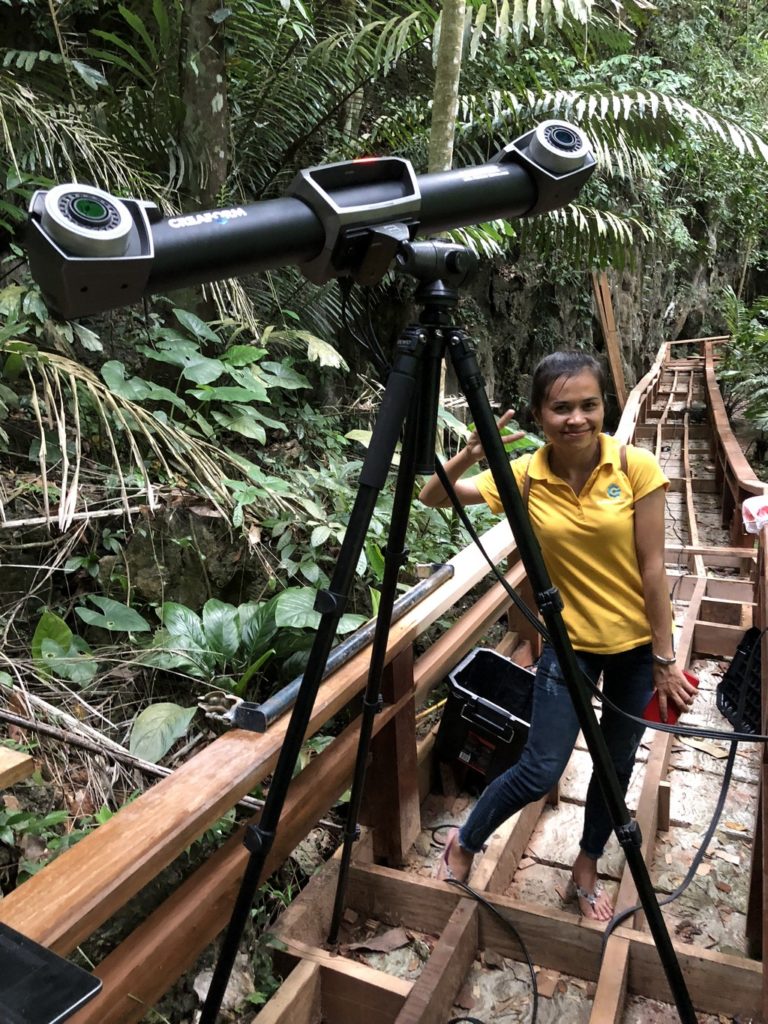
Point a camera at Orn, and instant pose. So cool. The Creaform Metra and C-Track 3D laser scanner.
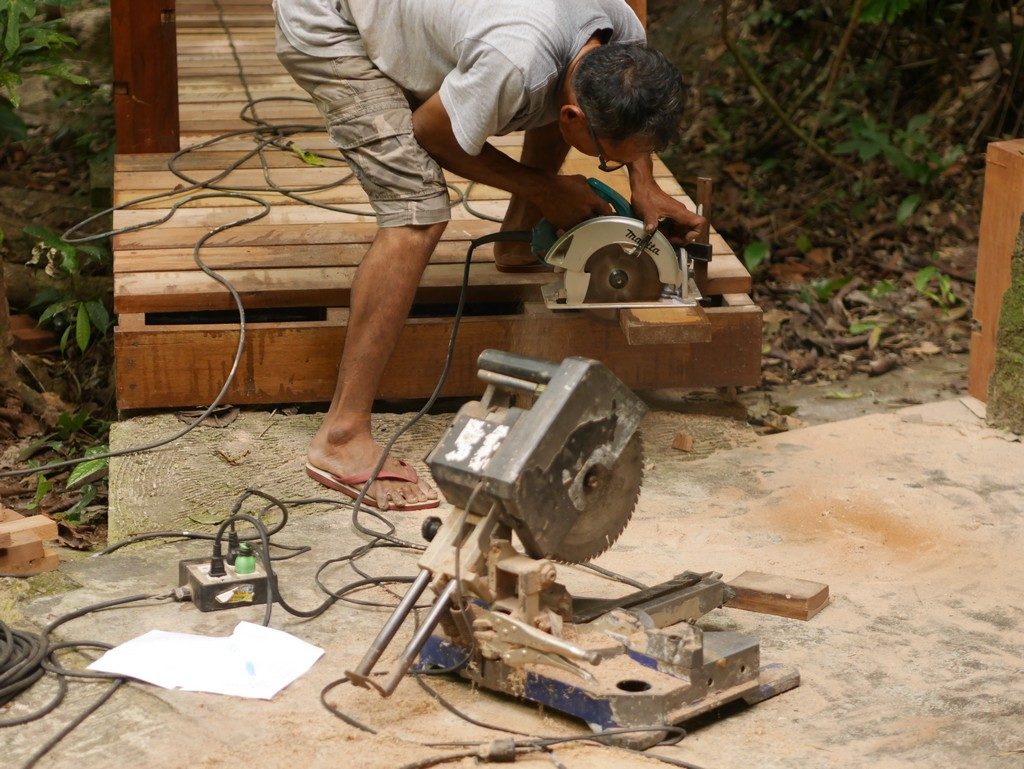
See the green plug? That is our plug. Electricity was shared with us and a local construction crew.
The Shrine:
There was a very lovely shrine located on the path to our 3D laser scanning location.
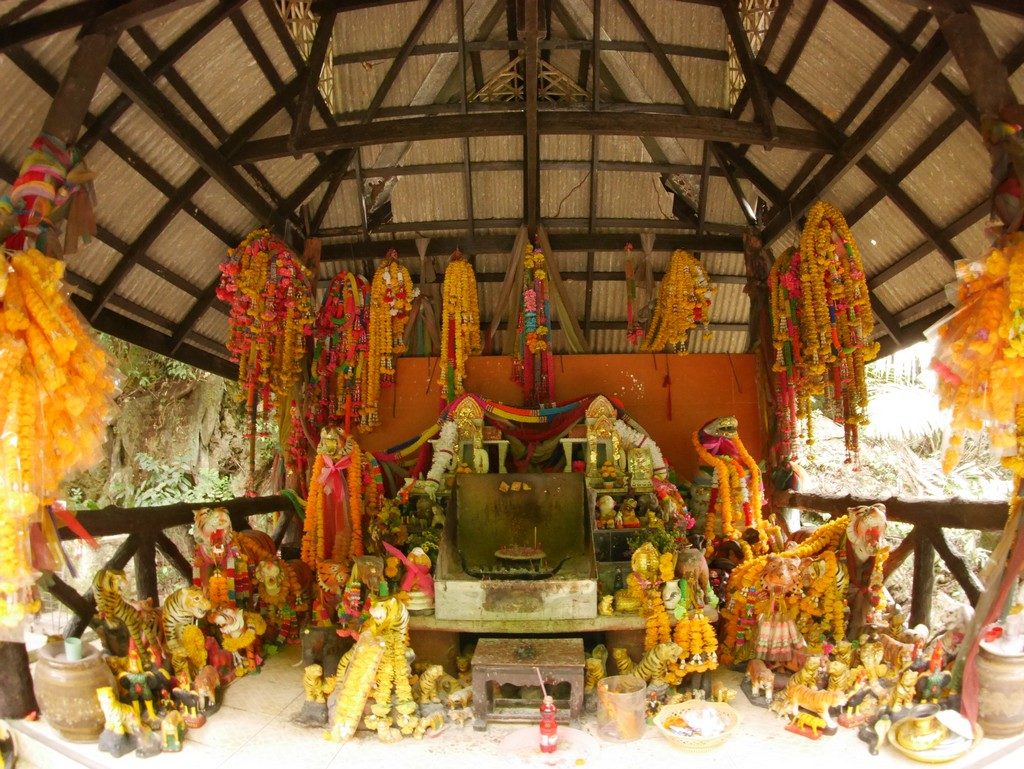
A small shrine next to where we scanned at Thanbok Khoranee National Park.
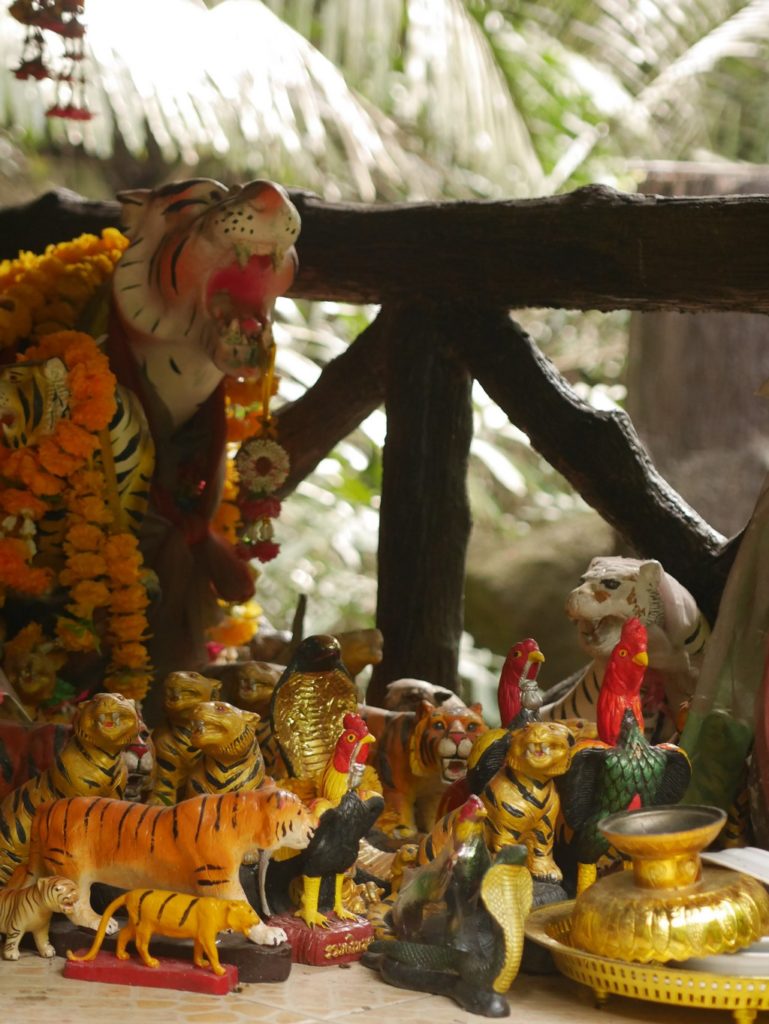
Lovely gifts left at the shrine in Thanbok Khoranee National Park.
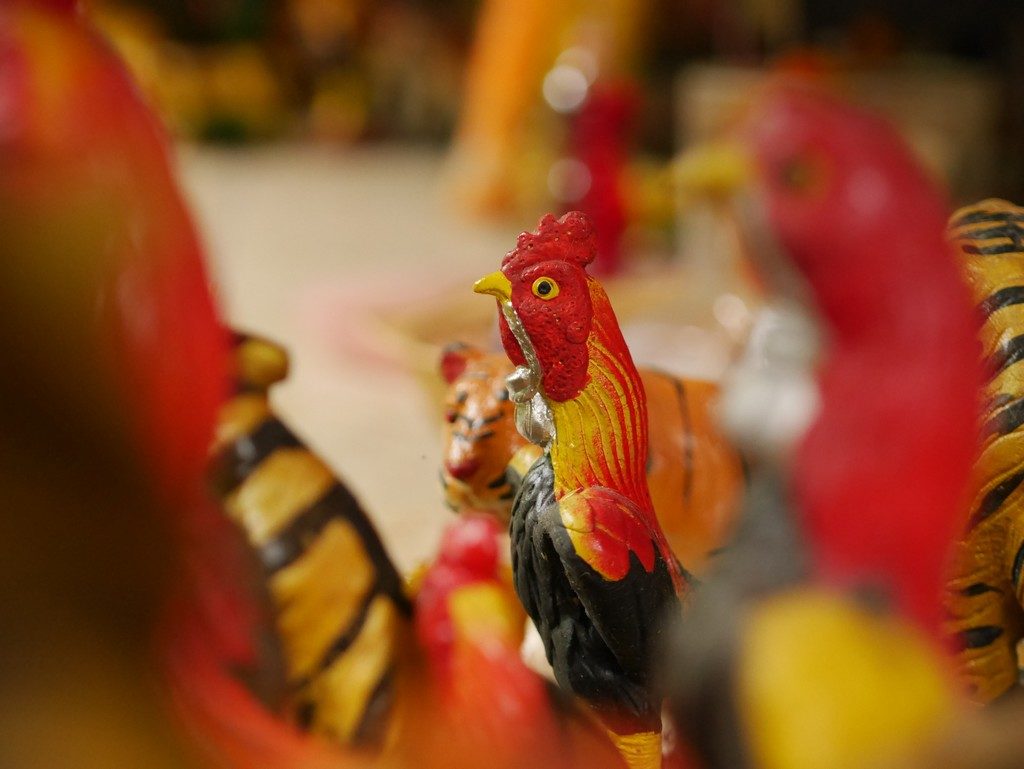
American “cock a doodle doo” or French “cocorico”?
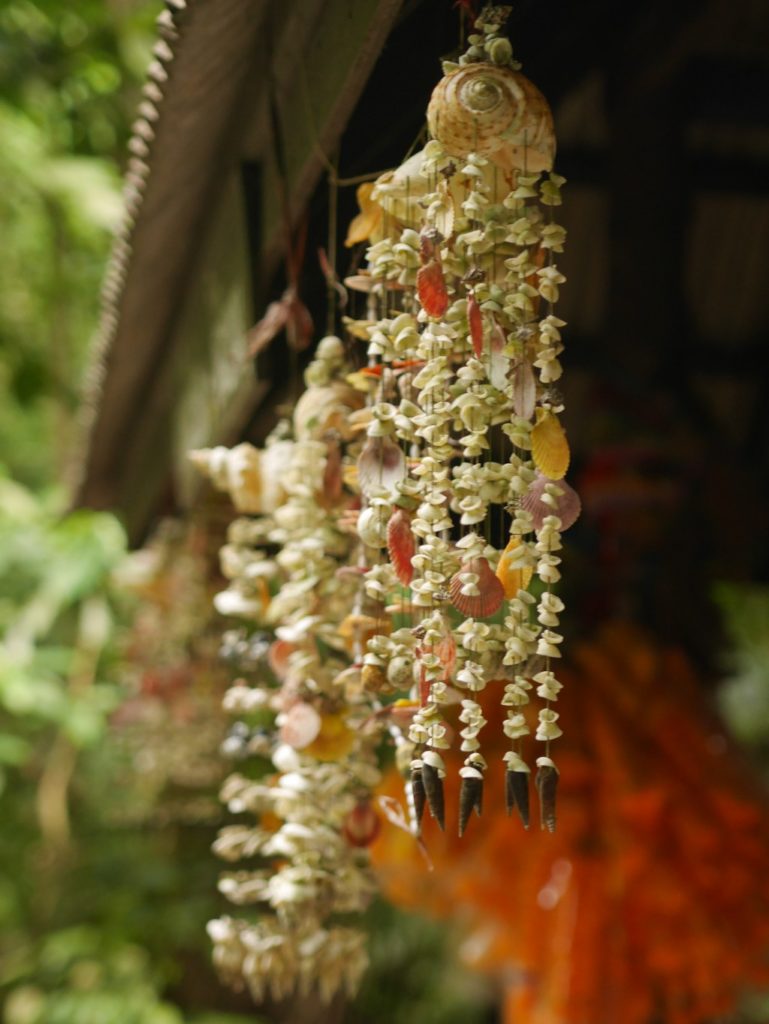
Hanging from the shrine’s roof at Thanbok Khoranee National Park.
Day 3:
We had a new set of challenges scanning the 7-meter tall “calcium/lime deposit” as it was just a lot of surface area to scan. Lovely location, and easier to scan as the rock simply does not move! Also, the rock face we nearly vertical, so we did not need to hang too far off the scaffolding.
It started to rain that afternoon. Luckily we started early and worked fast and finished just as it was starting to rain.
That evening we treated ourselves to a great meal and went to the AMAZING Ruen Mai restaurant (https://www.facebook.com/ruenmaikrabirestuarant/). WOW.
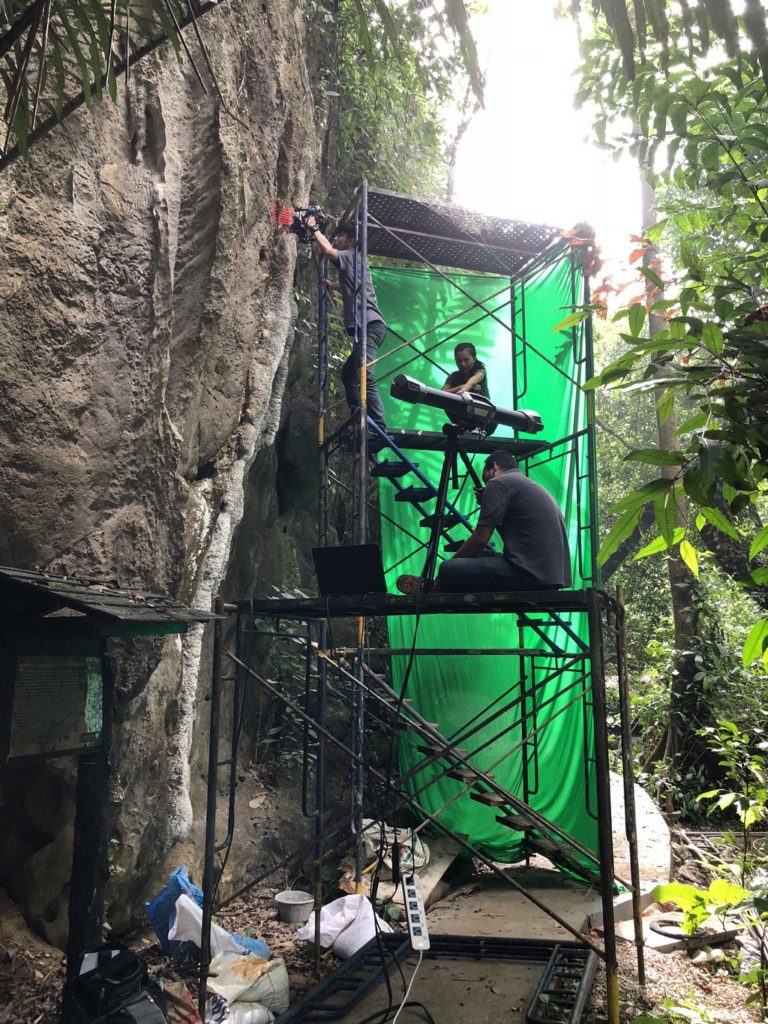
Tough job today.
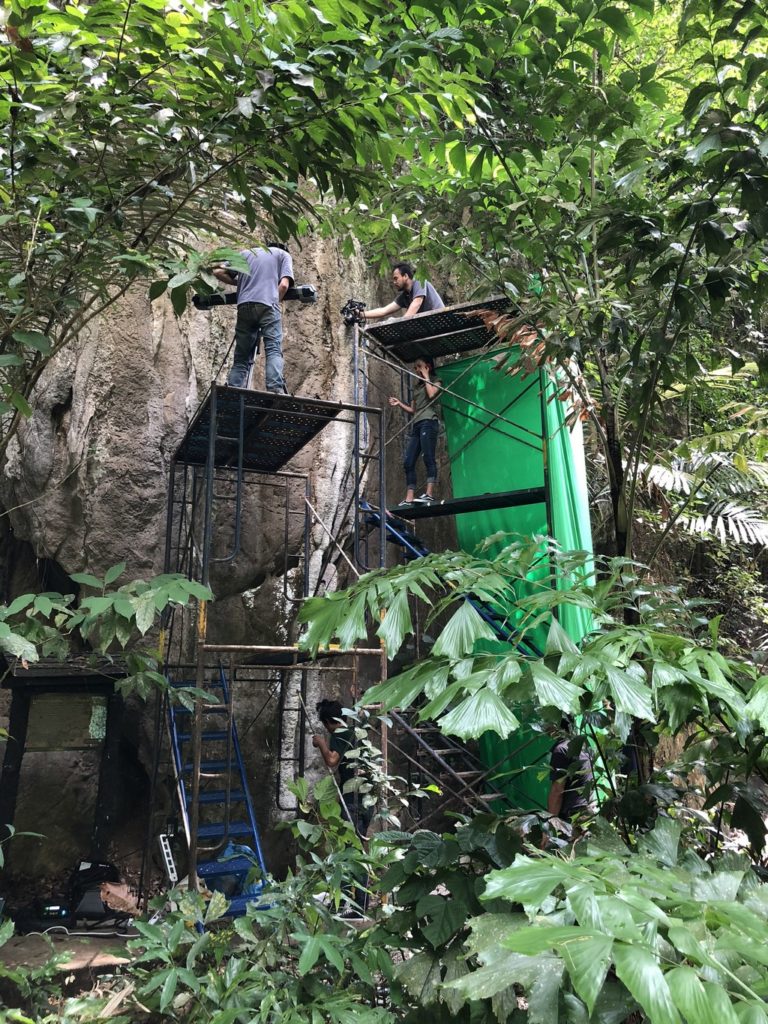
The calcium/lime deposit it about 7 meters tall and 1.5 meters wide.
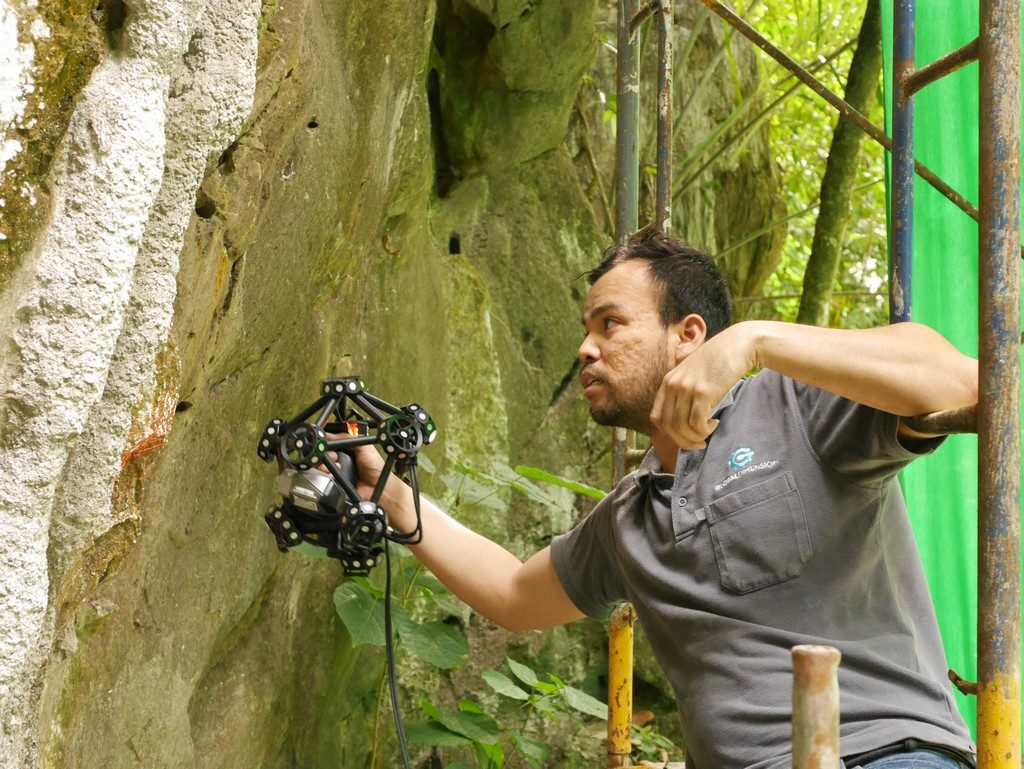
A little acrobatics. Easier to lean over than to re-positioning 3 floors of scaffolding.
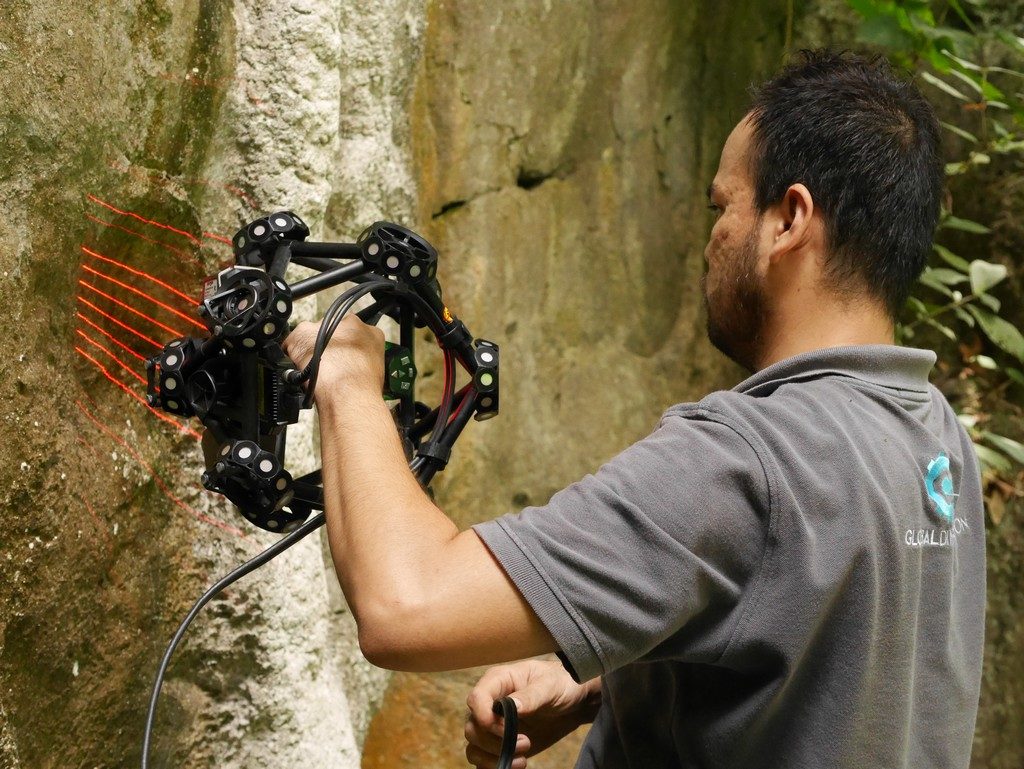
Scanning and scanning and scanning. Will it ever end?
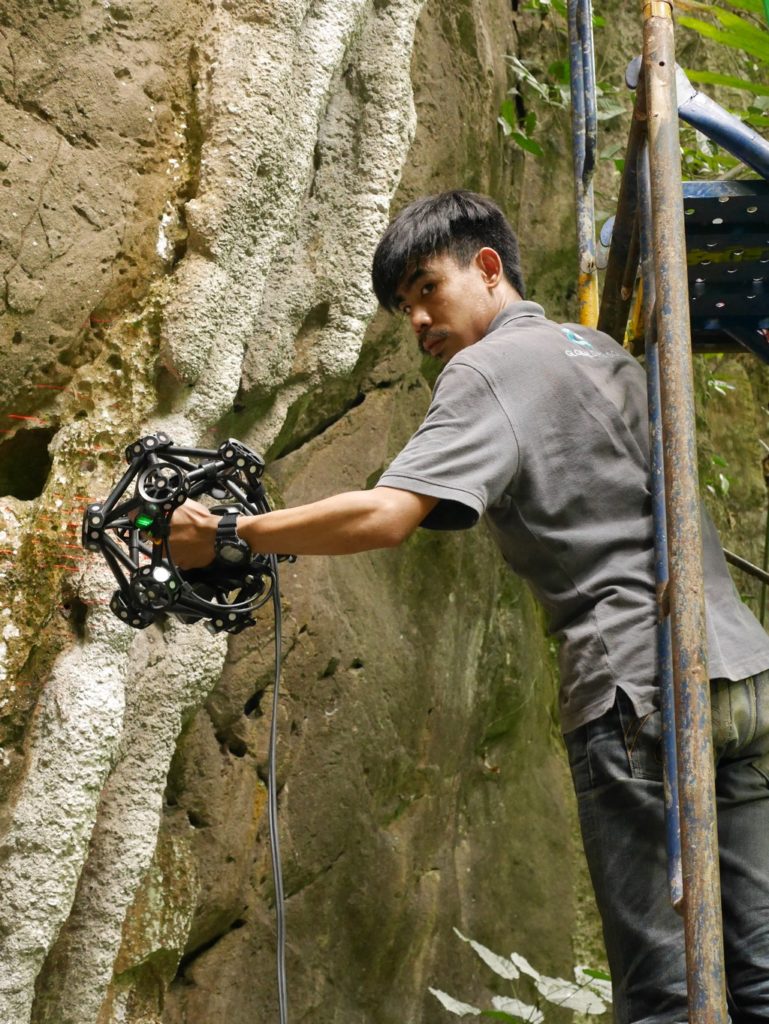
Come on boss, not another photo!
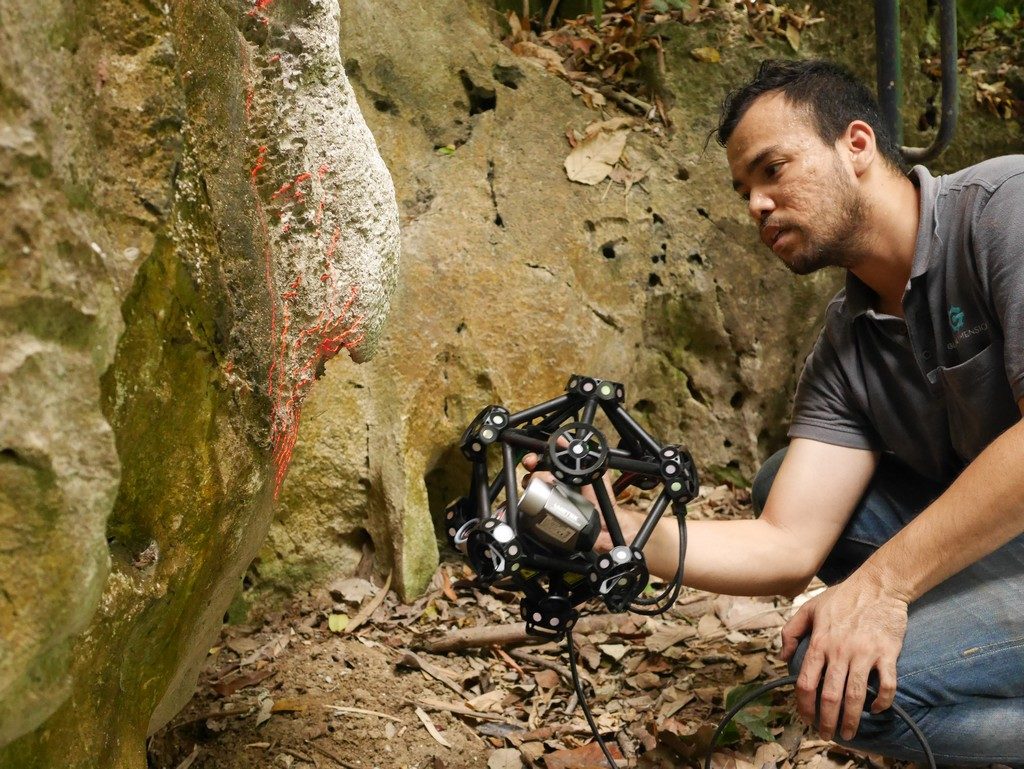
Metra scanner and Ek, act as one.

We do some additional scanning with the Artec scanner.
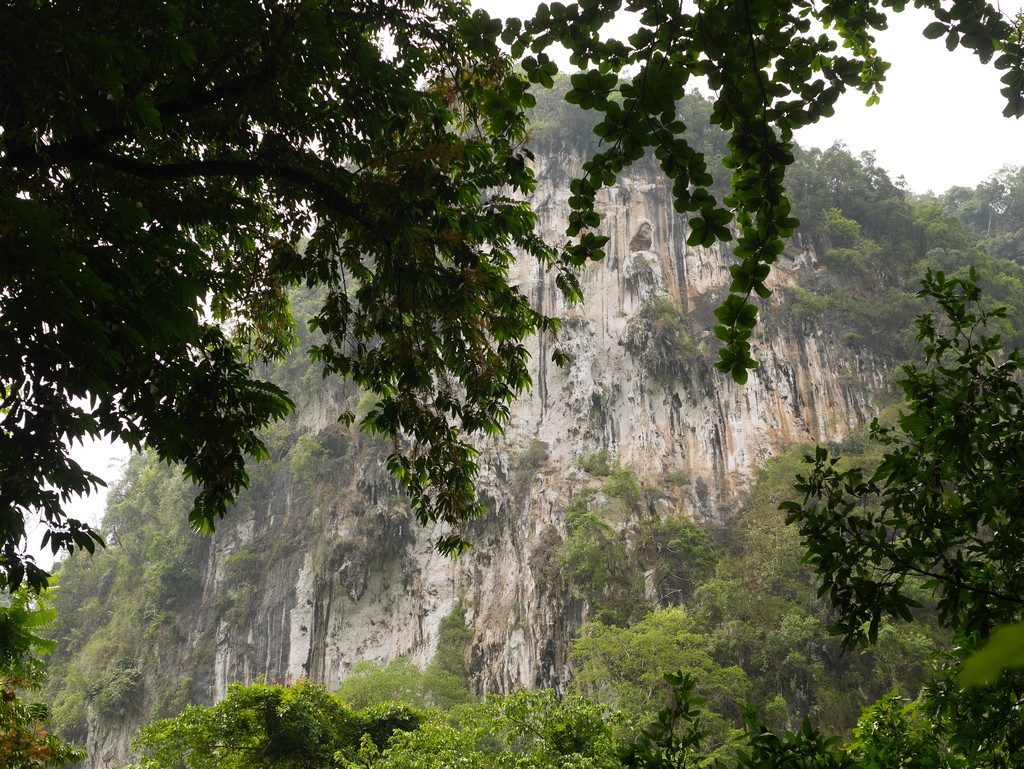
This is the view from our scaffolding. not a bad place to work!
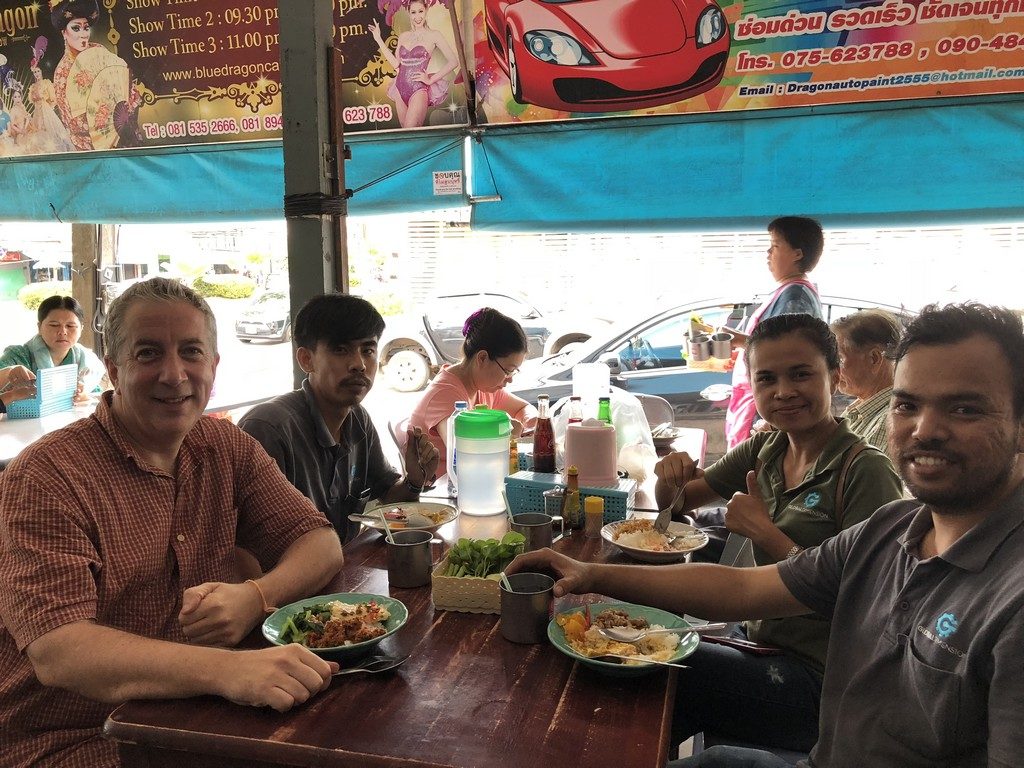
Local lunch. Super yummy.
I want to take a minute and just share some of the beauty around the areas of our 3D laser scanning project.
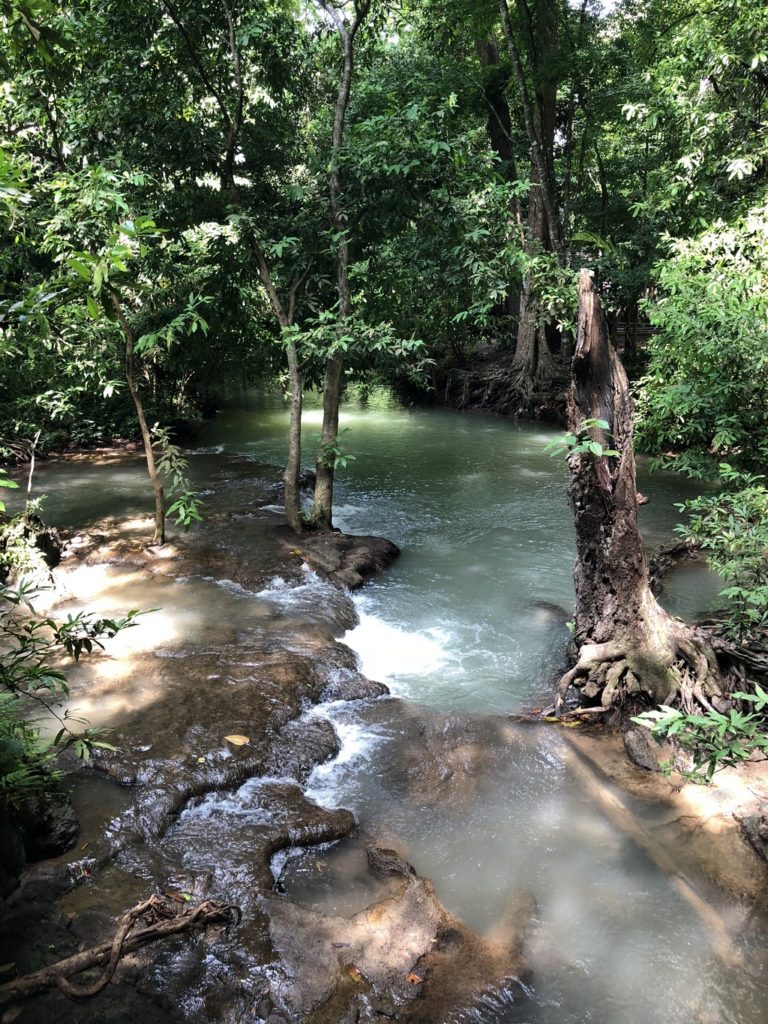
Typical view at Thanbok Khoranee National Park.
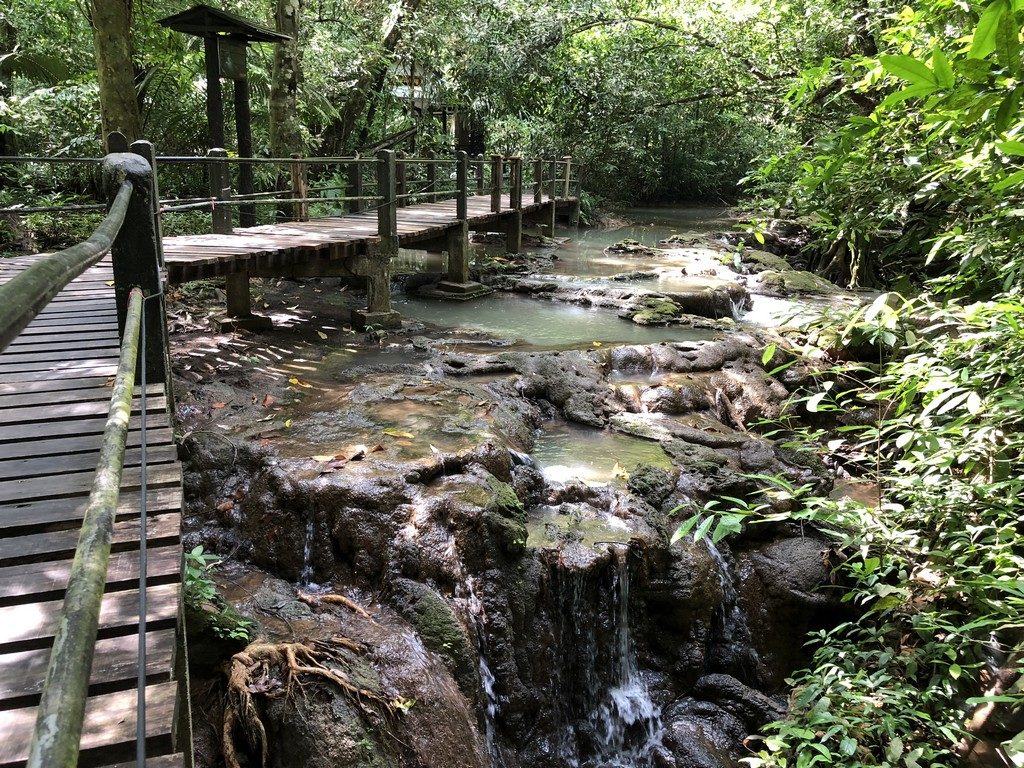
Typical view at Thanbok Khoranee National Park.
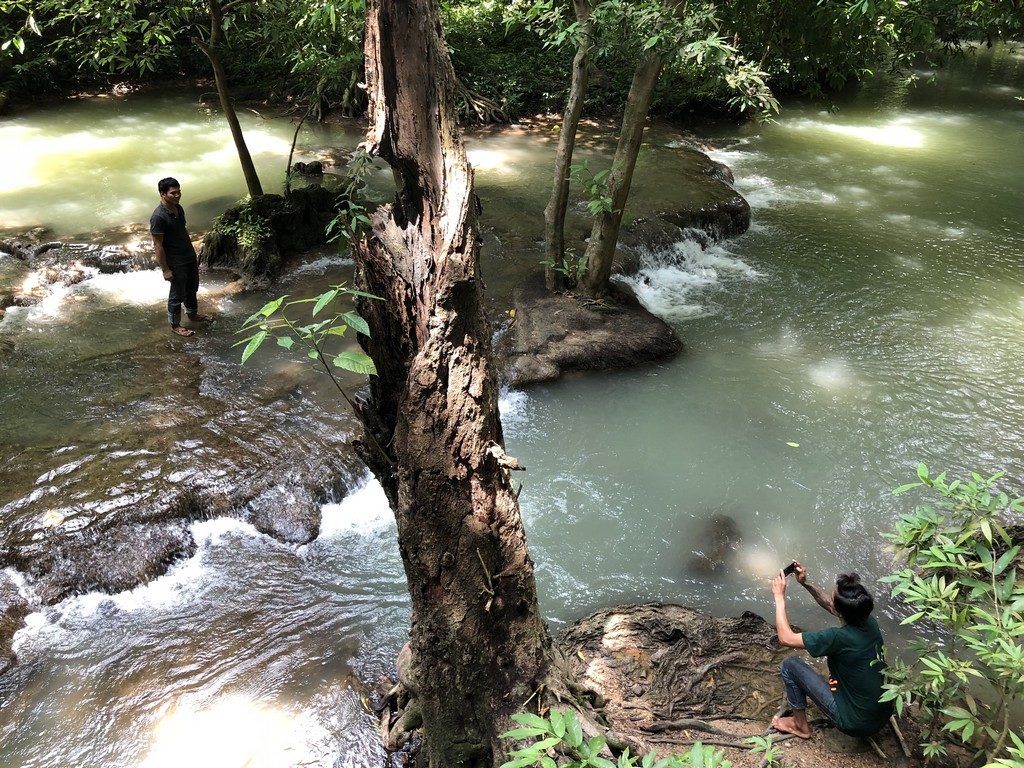
This is our scaffolding team, taking a wll deserved break.
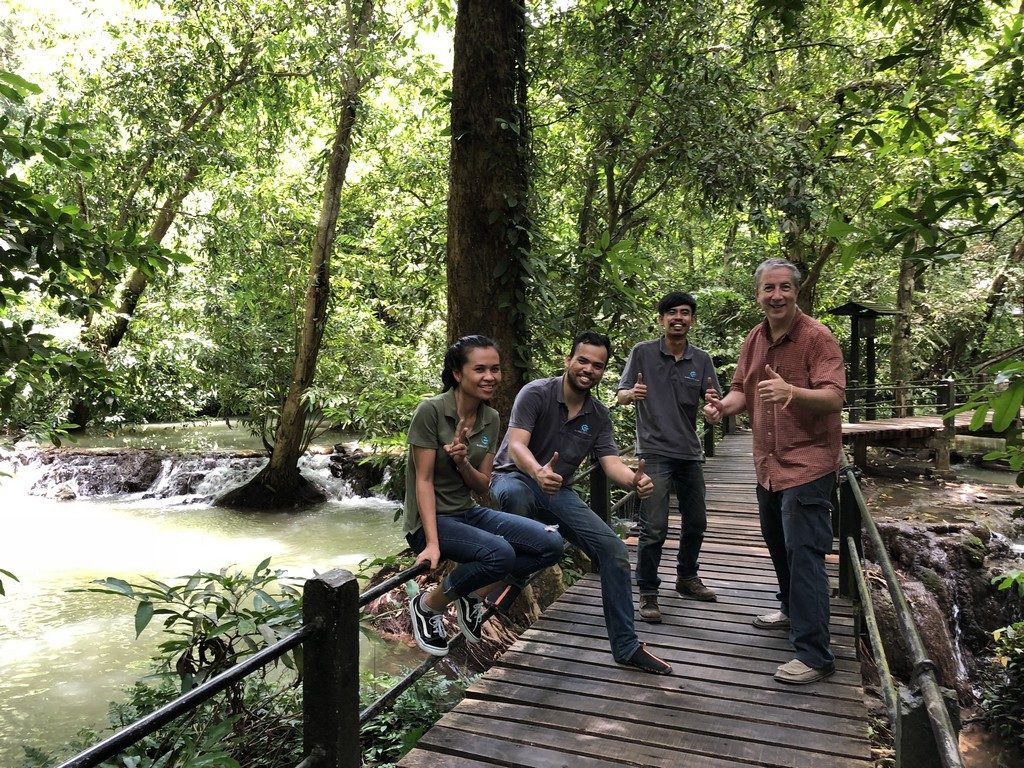
Just finished scanning in the park!
Ruen Mai Restaurant:
Now we packed up and went back to the hotel to clean up and get ready for dinner. Remember, today we ate dinner at the Ruen Mai (https://www.facebook.com/ruenmaikrabirestuarant/) . This appears to be Krabi’s #1 restaurant, and thanks to Khun Ek for doing the research.
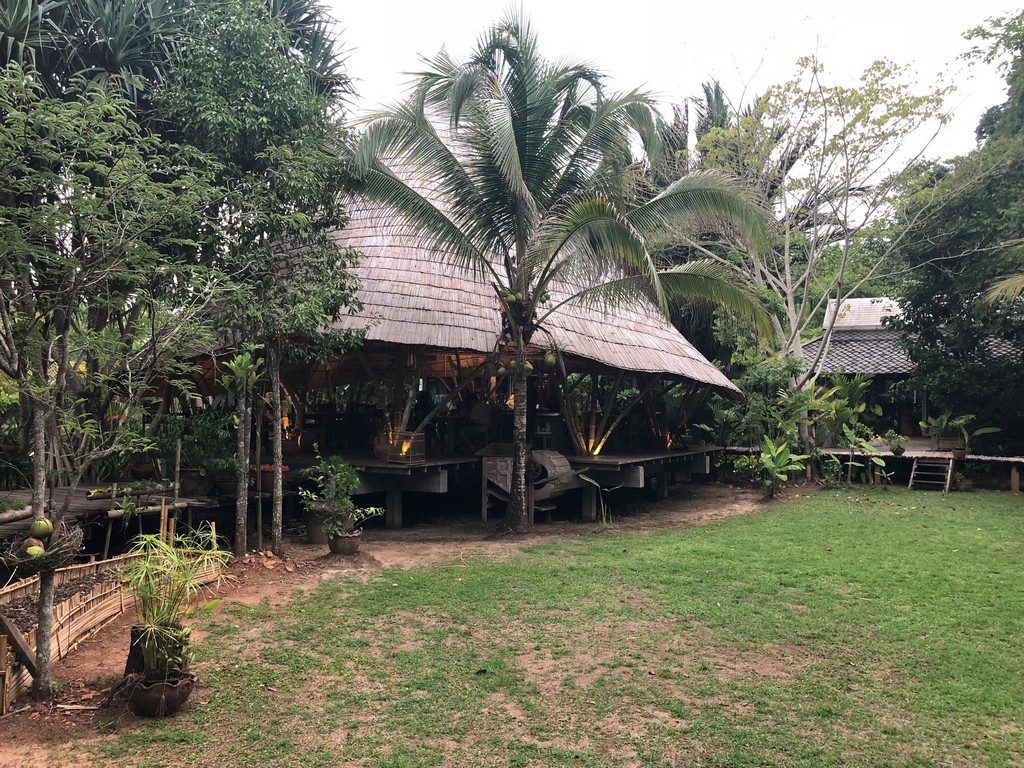
It is designed to look like a fish trap. Phone camera does not do it justice.
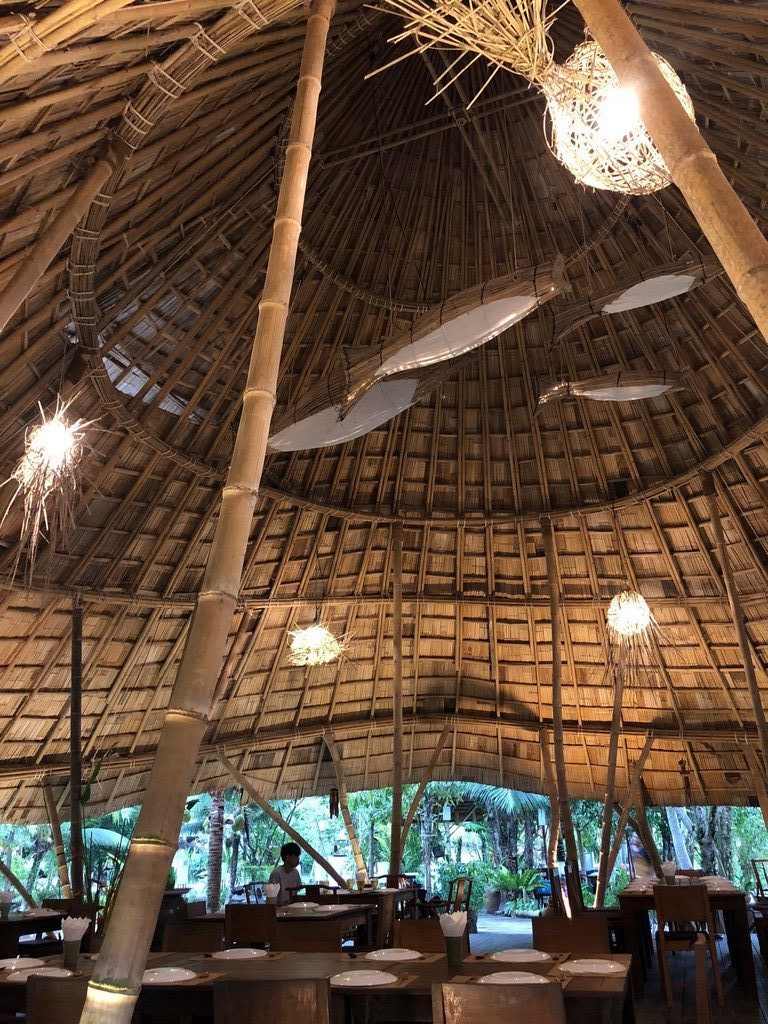
Fluke sitting by himself in the Ruen Mai restaurant. Designed to look like a fish trap.
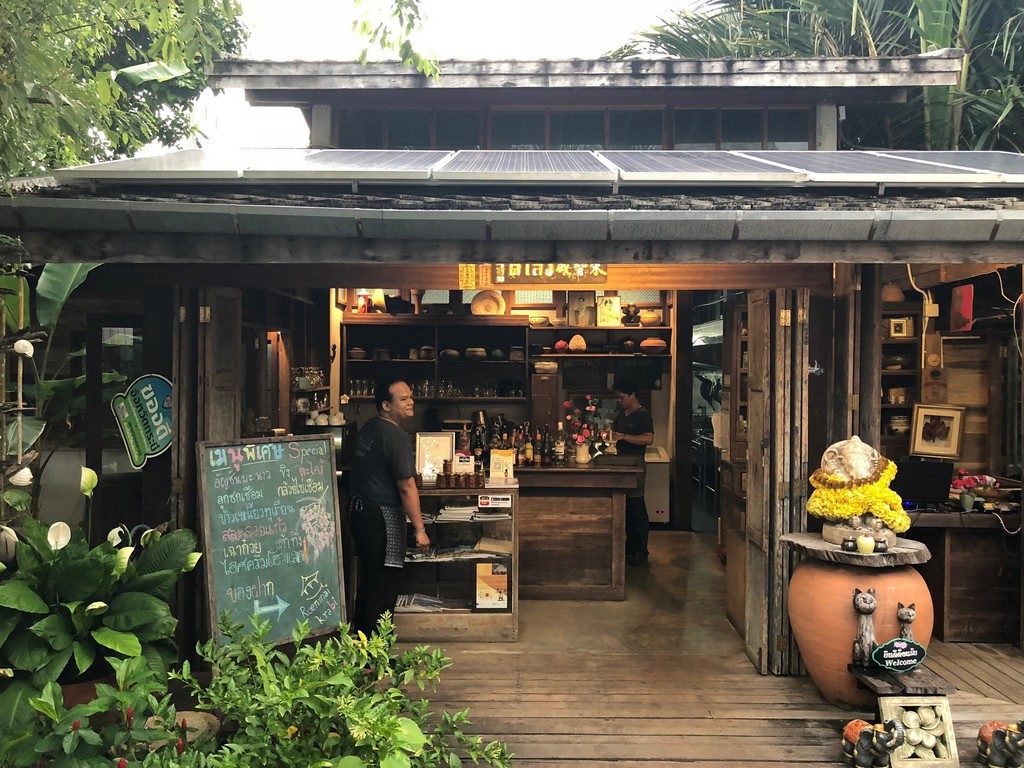
This is the Ruen Mai kitchen. Yes, it is the kitchen. Everything is beautiful here.
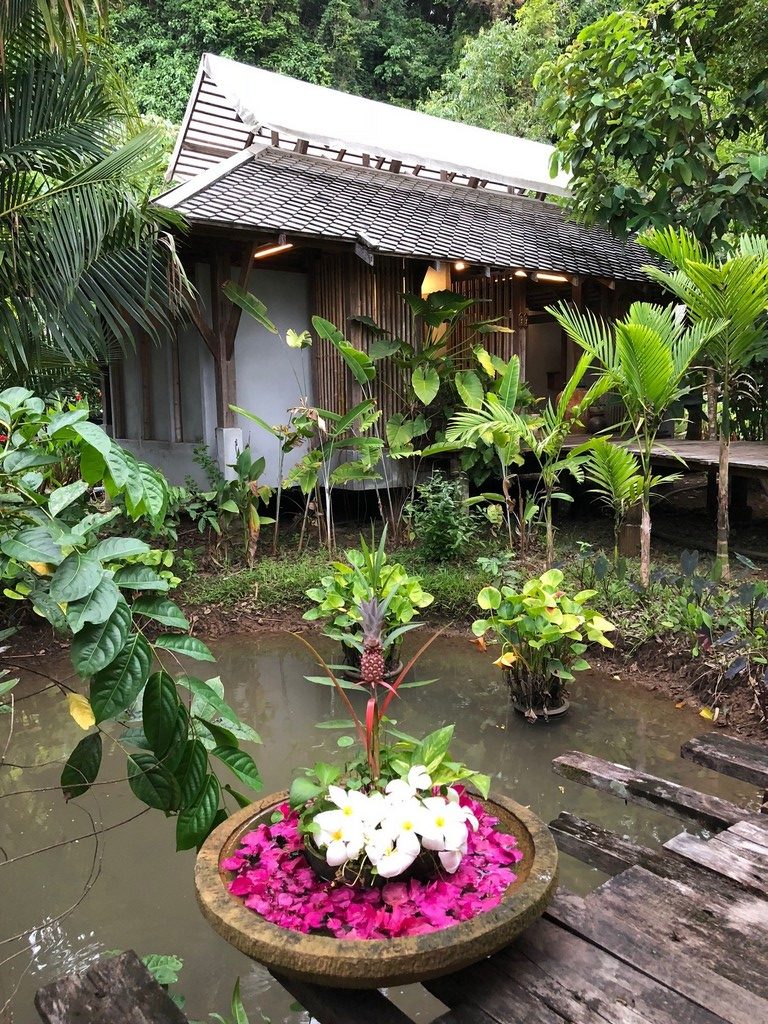
The bathroom at the Ruen Mai restaurant. Nice place for a dump.
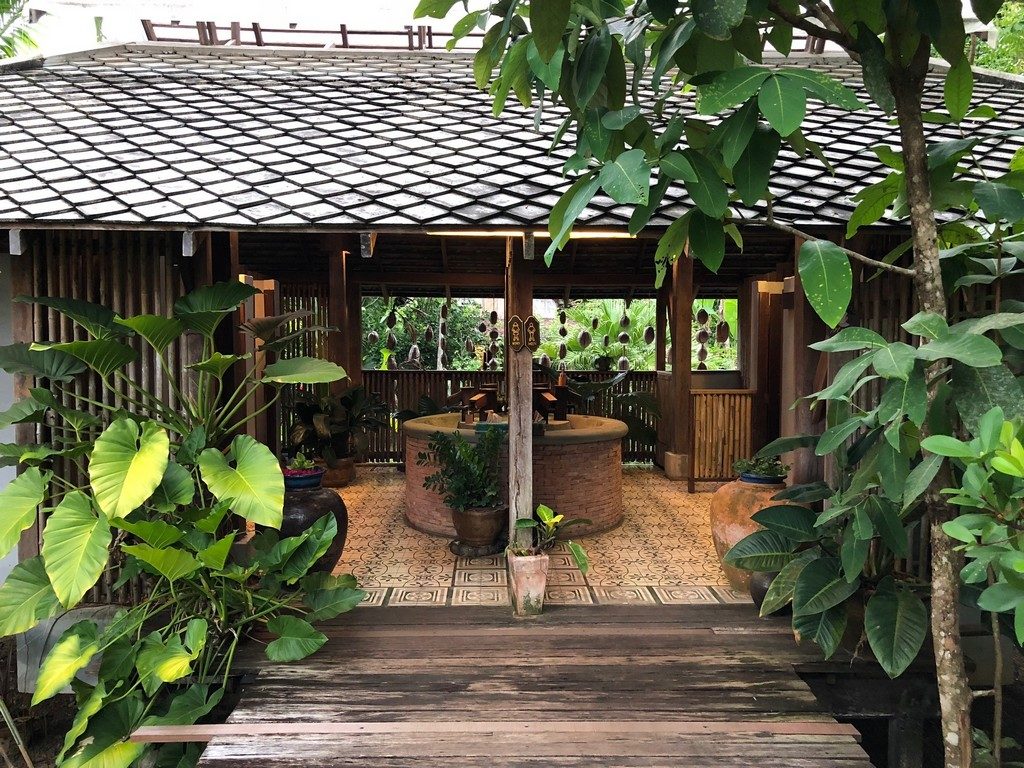
Beautiful bog (toilets).
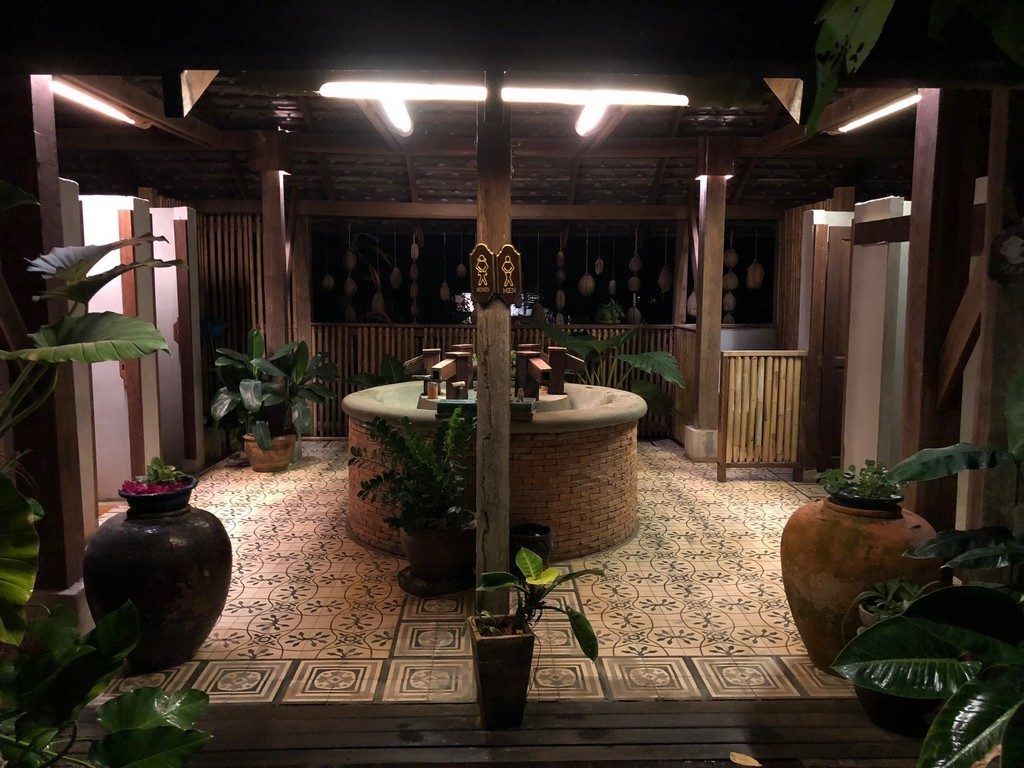
Bathroom obsessed – the night view. So lovely.
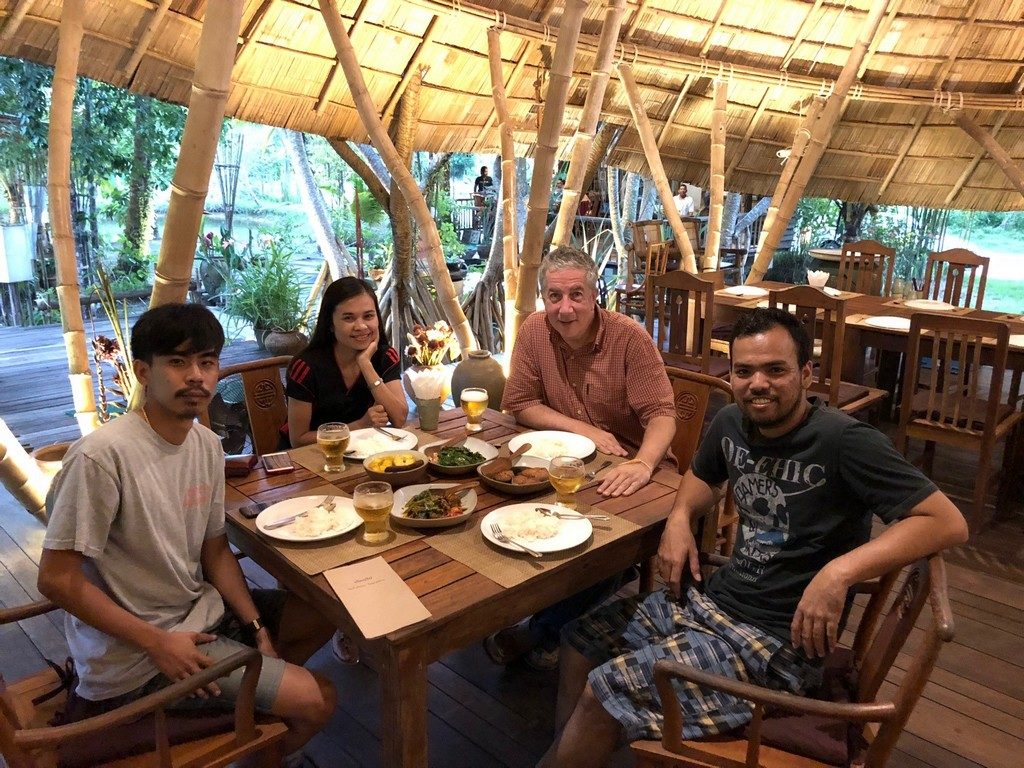
One last photo before we devour the food at Ruen Mai restaurant.
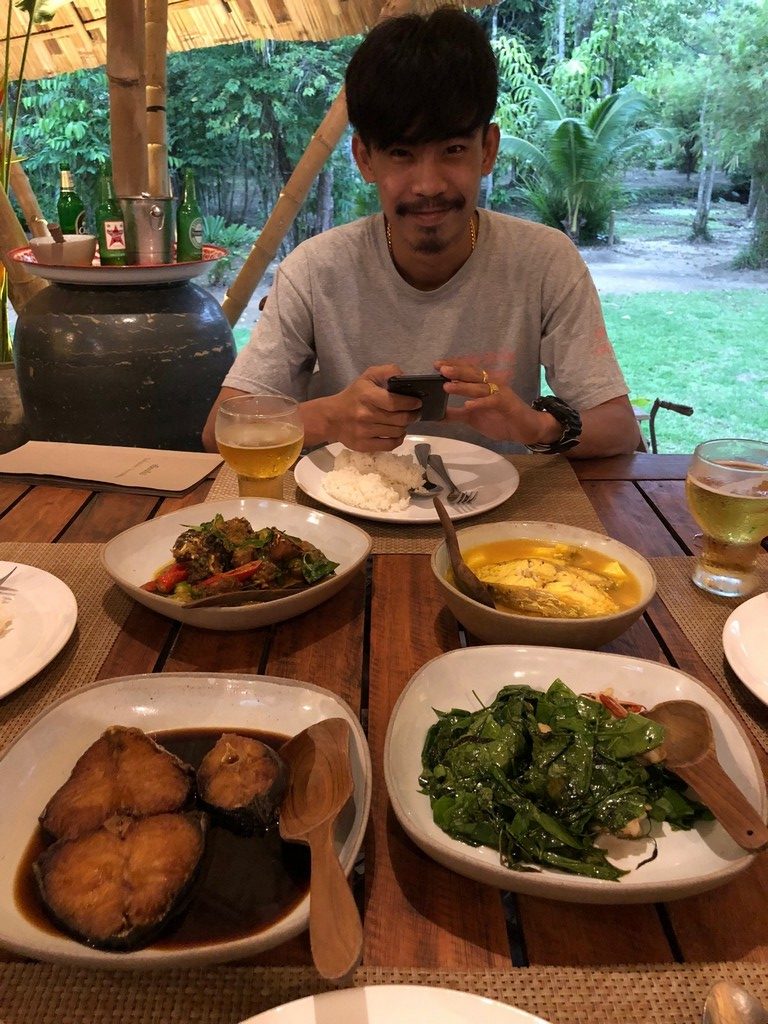
Fluke taking pictures of food. Food was fantastic at the Ruen Mai restaurant.
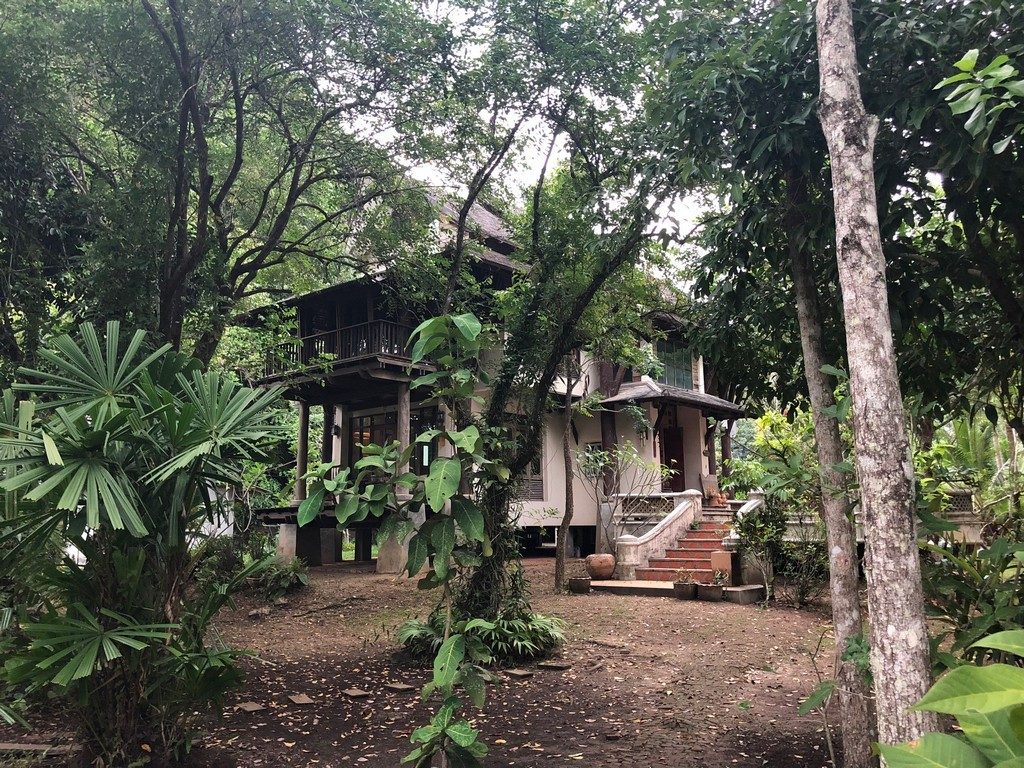
Beautiful and mysterious house at the Ruen Mai restaurant.
Day 4:
The rock. This was a large rock that weight 3200KG (over 7000 lbs). We had to scan top, all the sides and the bottom!! For us to 3D laser scan the bottom, we needed to turn the rock over. At 3200kg, we needed a crane to take on that task. Khun Orn organised this and like magic, a crane showed up about 11 am and moved the rock.
The rock was out in the open, so that meant direct sunlight and heat. This is far from the best environment for 3D laser scanning. The Creaform Metra and C-Track both like to operate at stable temperatures, so that meant being in the shade and working fast before the day gets too hot. We had our scaffolding team drape tarps over the scaffold and that worked well.
We started early that day to beat the heat. That also meant we could finish early. So what did we do with the afternoon? We went to Railay Beach!! The only access to the beach is by local boats. At Railay beach, we ate at the Grotto restaurant (http://www.rayavadee.com/en/), a real once-in-a-lifetime experience. Please, enjoy the pictures.
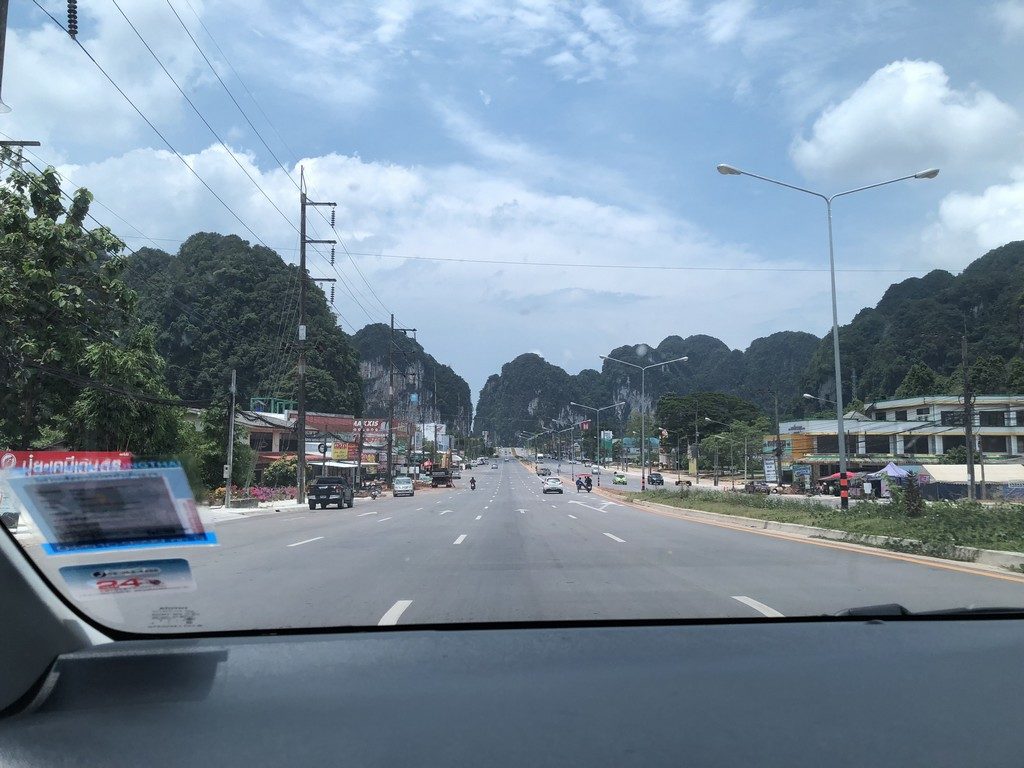
Typical scene on a road in Krabi. Stunning mountain formations are everywhere.
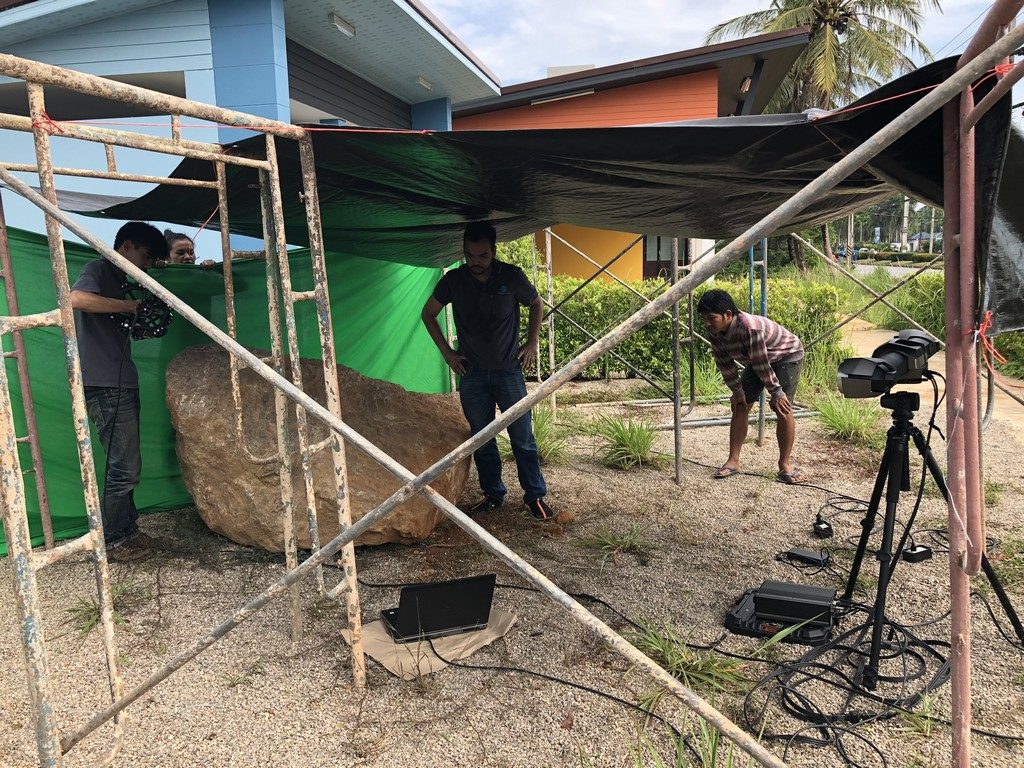
Our tarp tent. Hot, hot, hot. But we need the shade for the scanner to work correctly.
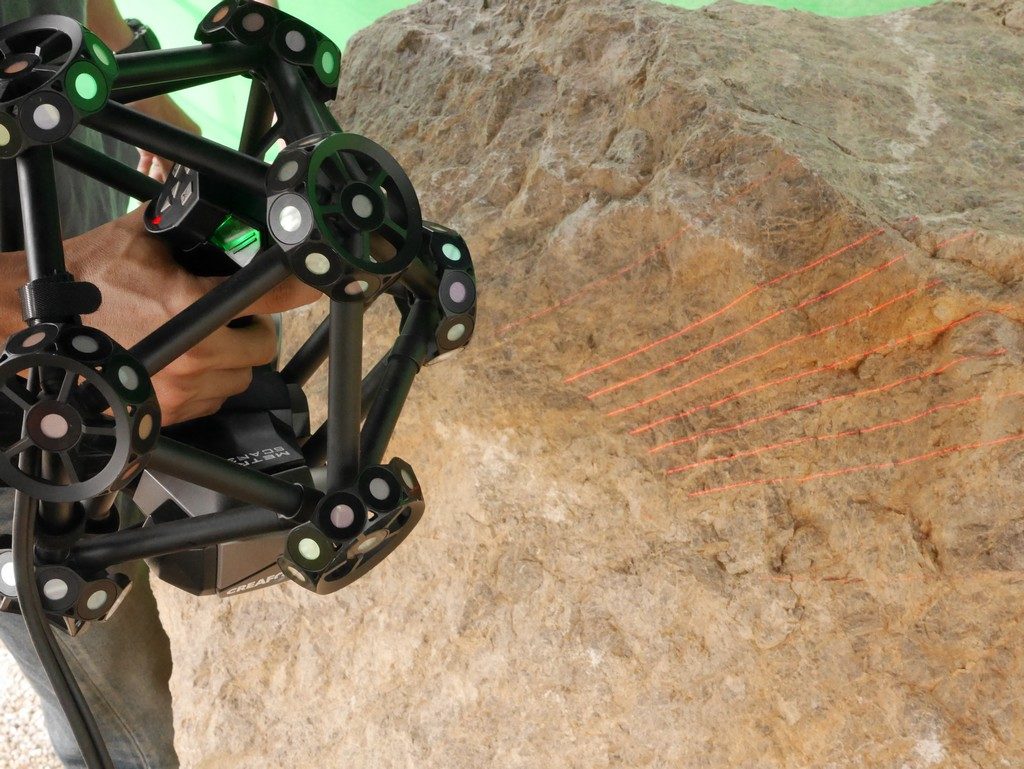
Never thought I would grow up and laser scan a rock.
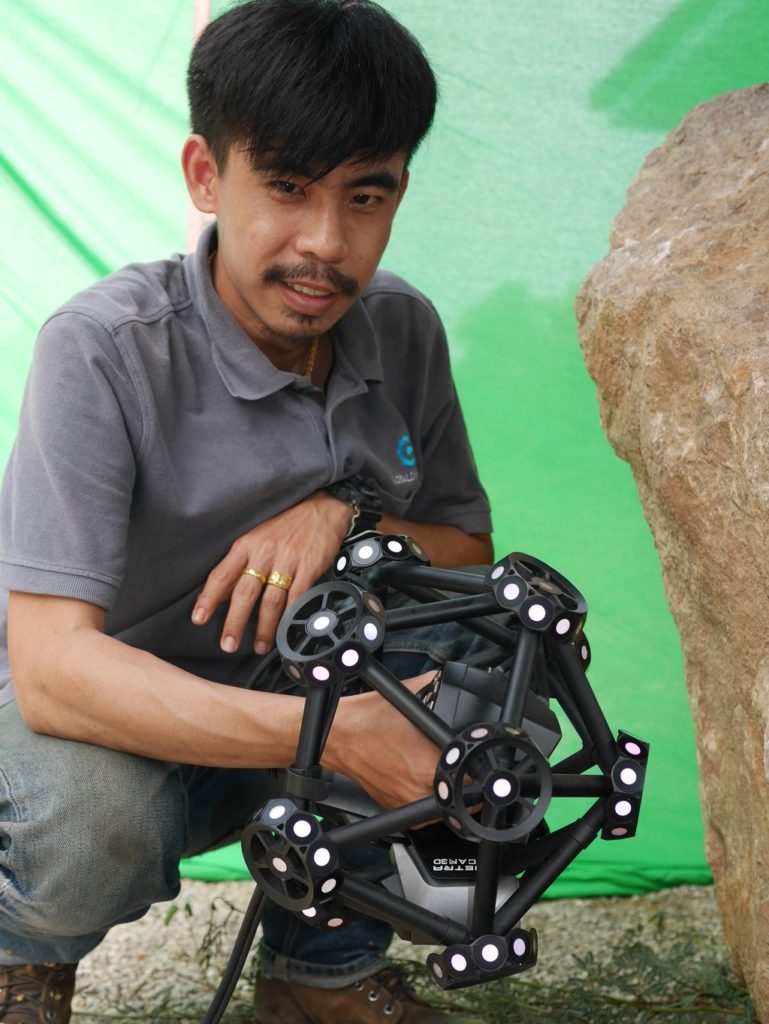
Hey girls, watch out.
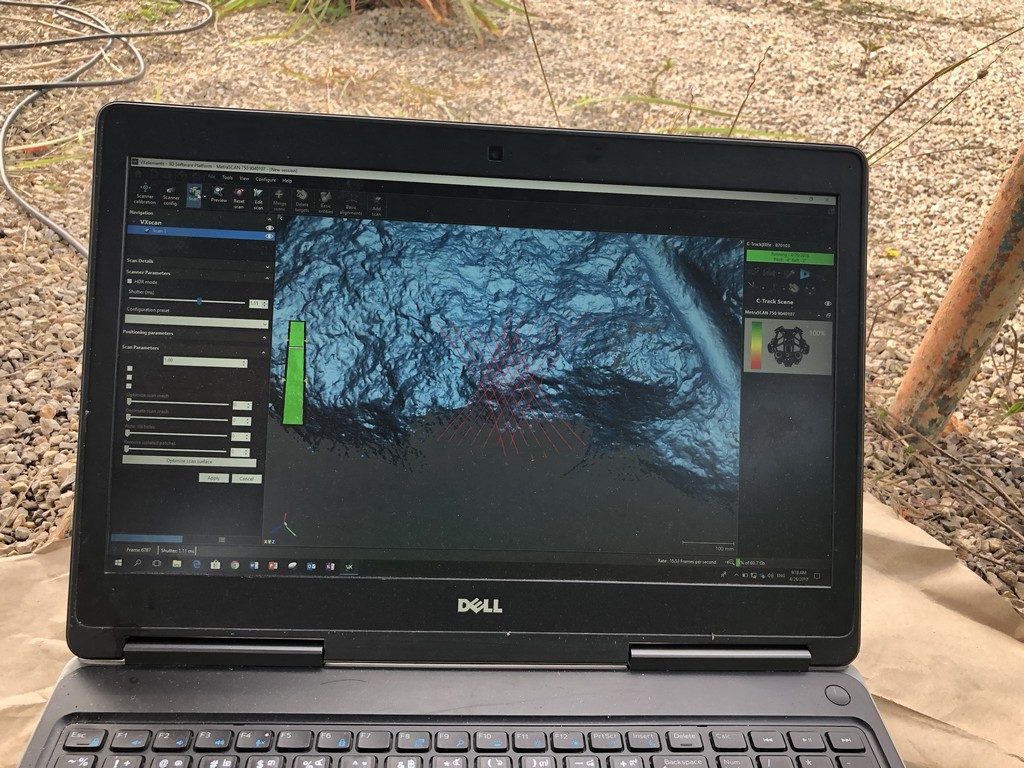
The rock slowly transforms into computer data.
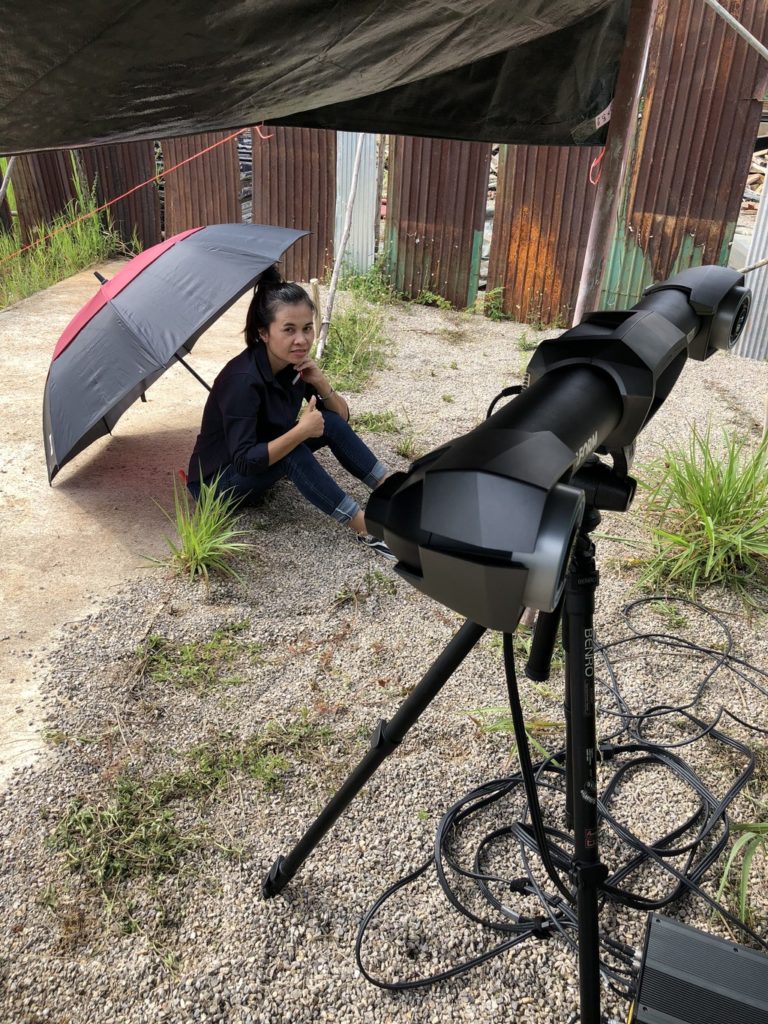
Orn in the shade and always on the phone organising things.
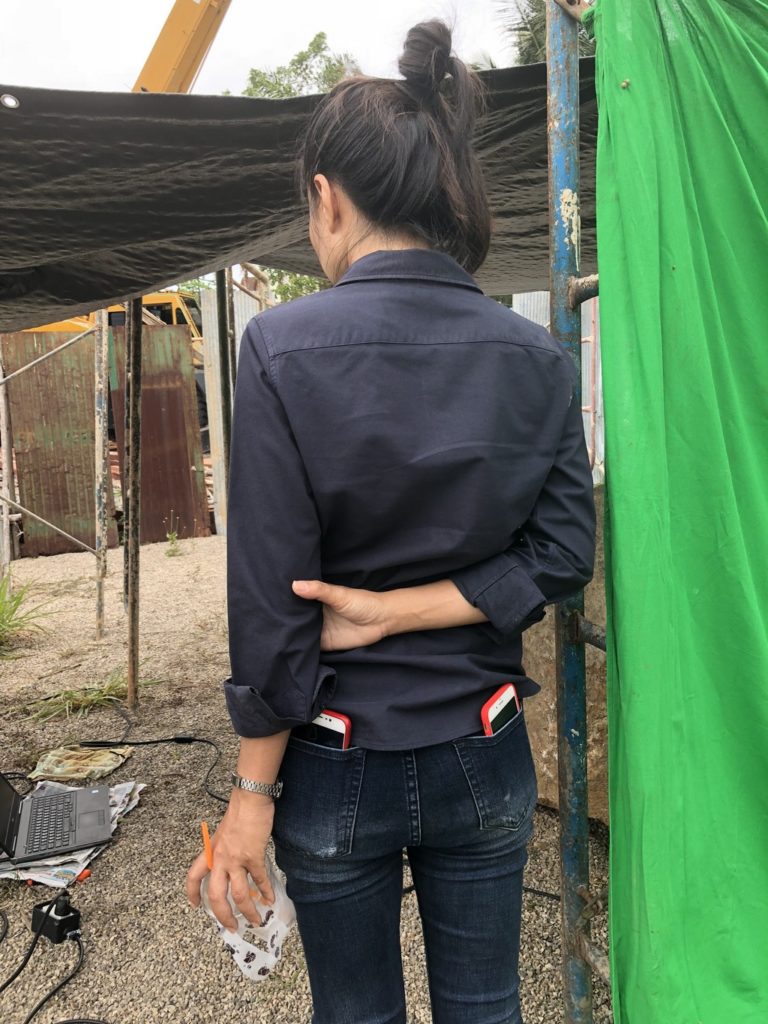
You can tell who is important. Lady with 2 phones.
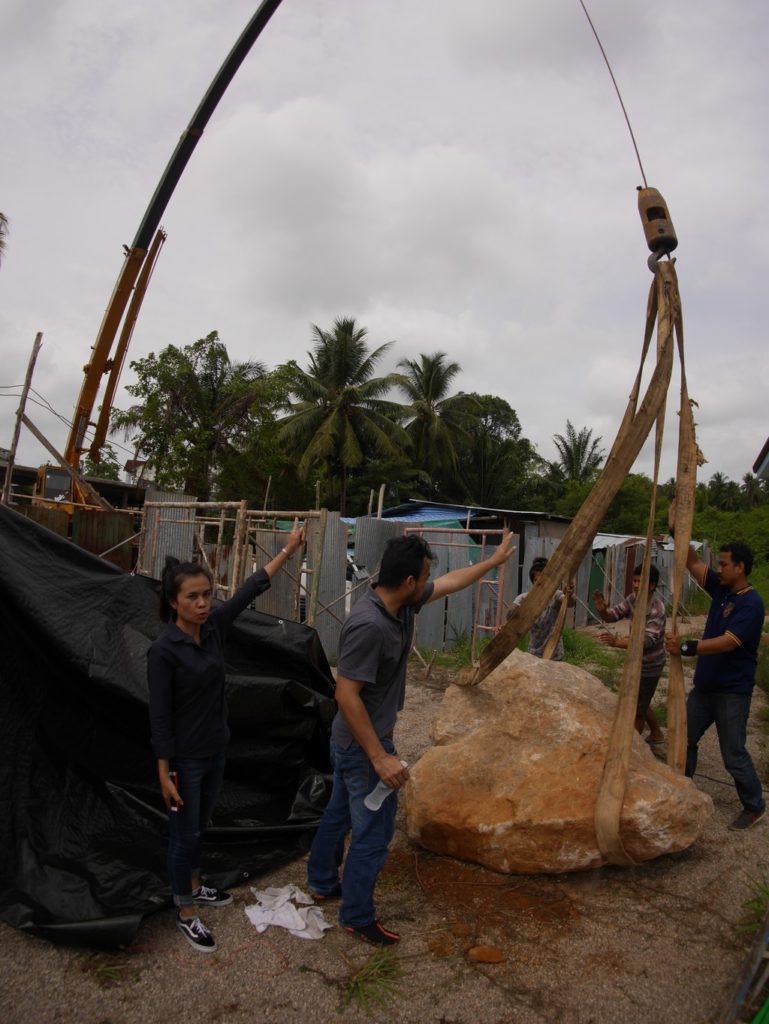
Orn giving instructions to lift the rock. Yes ma’am.
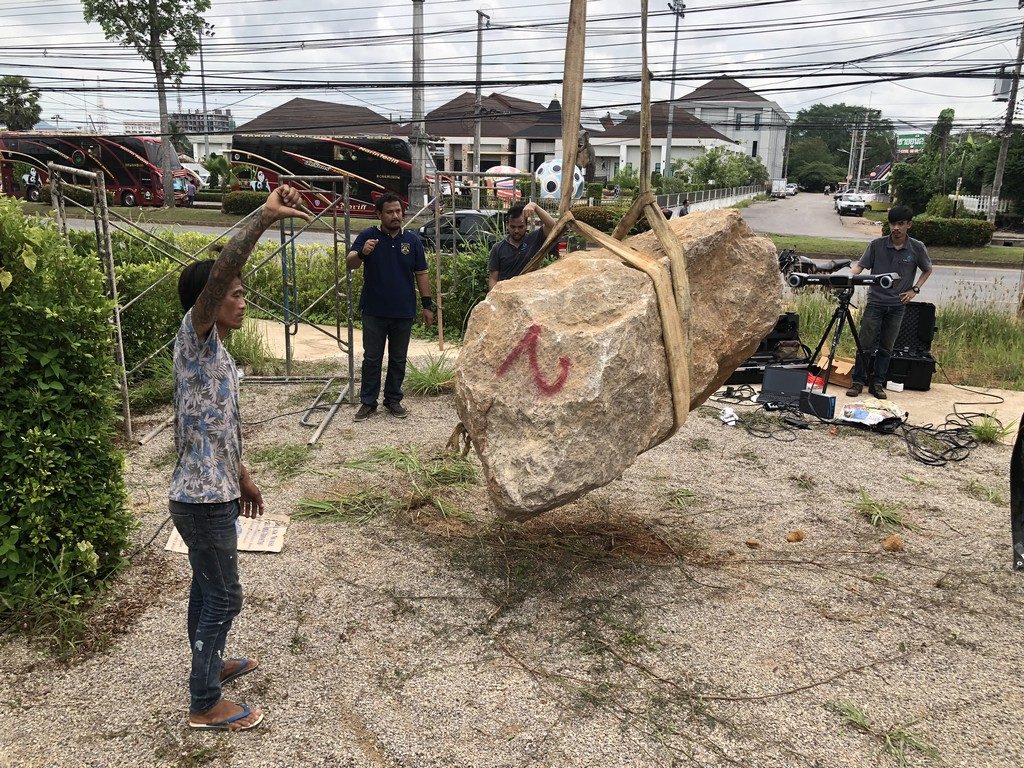
Put her down gently. We needed to scan the bottom too! That is 3200KG (7040lbs) of art, be careful.
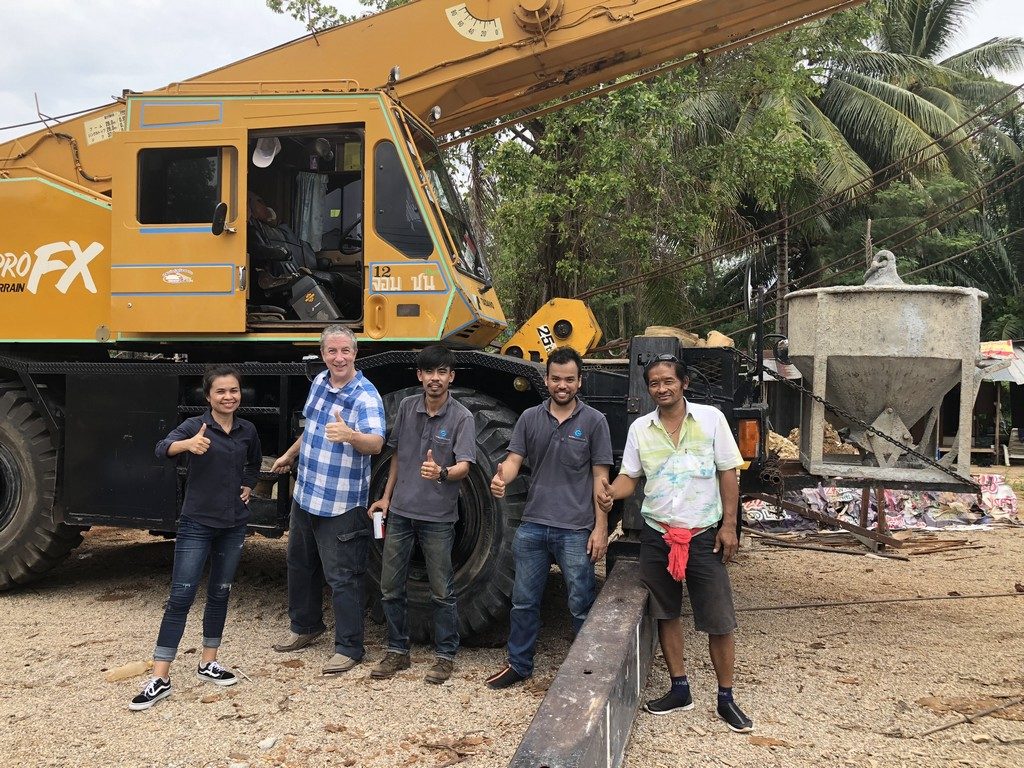
The crane operator was super cool. Thank you!
Let’s have some fun:
We finished a little early, so we ran and speed to the world famous Railay Beach! This beach is only accessible by boat. The Grotto restaurant was our destination.
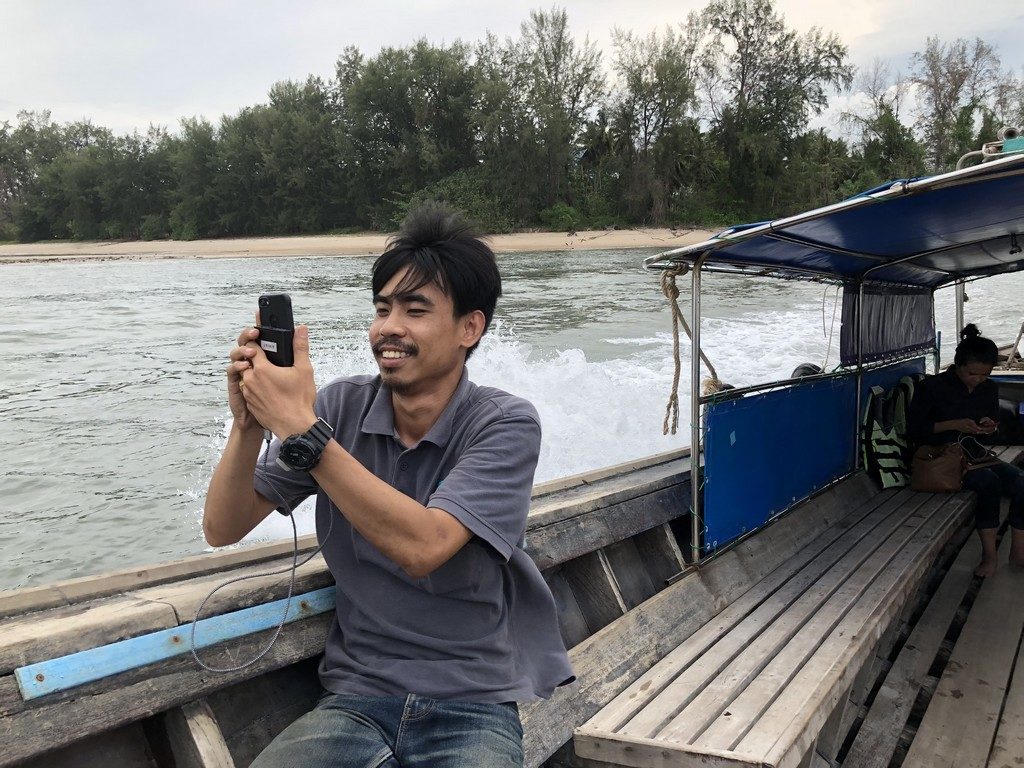
Departing for Railay Beach and the Grotto Restaurant. Fluke is excited!
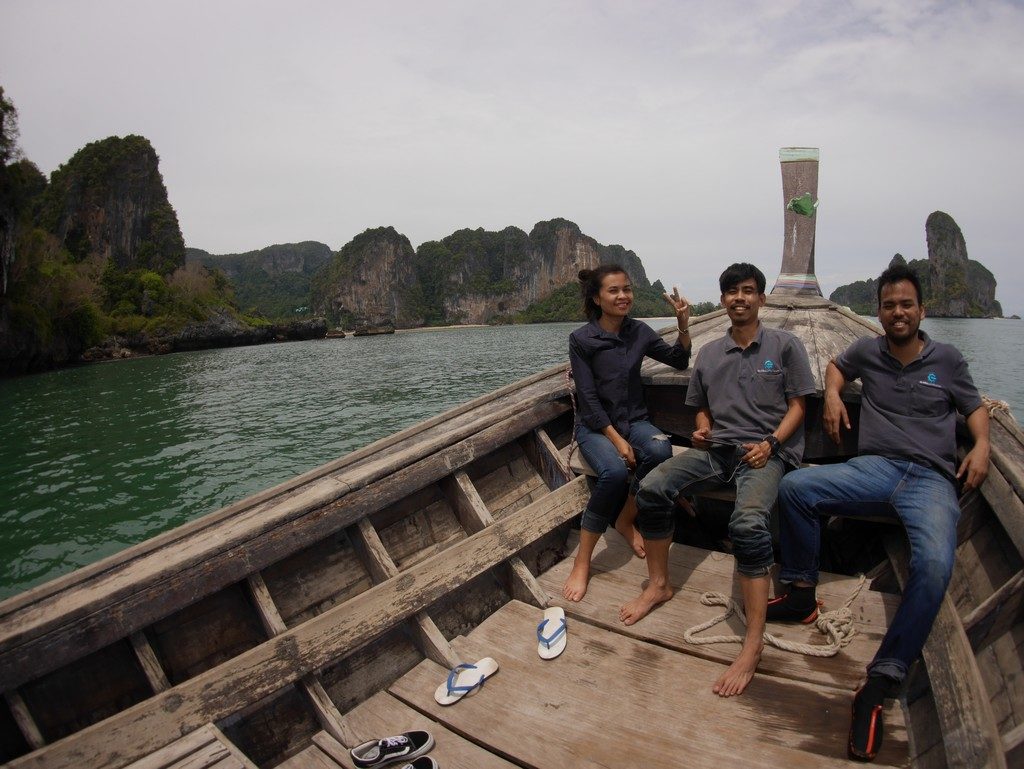
On the way to Railay Beach!!! Straight from work, as the boss needs to catch a flight in 4 hours!
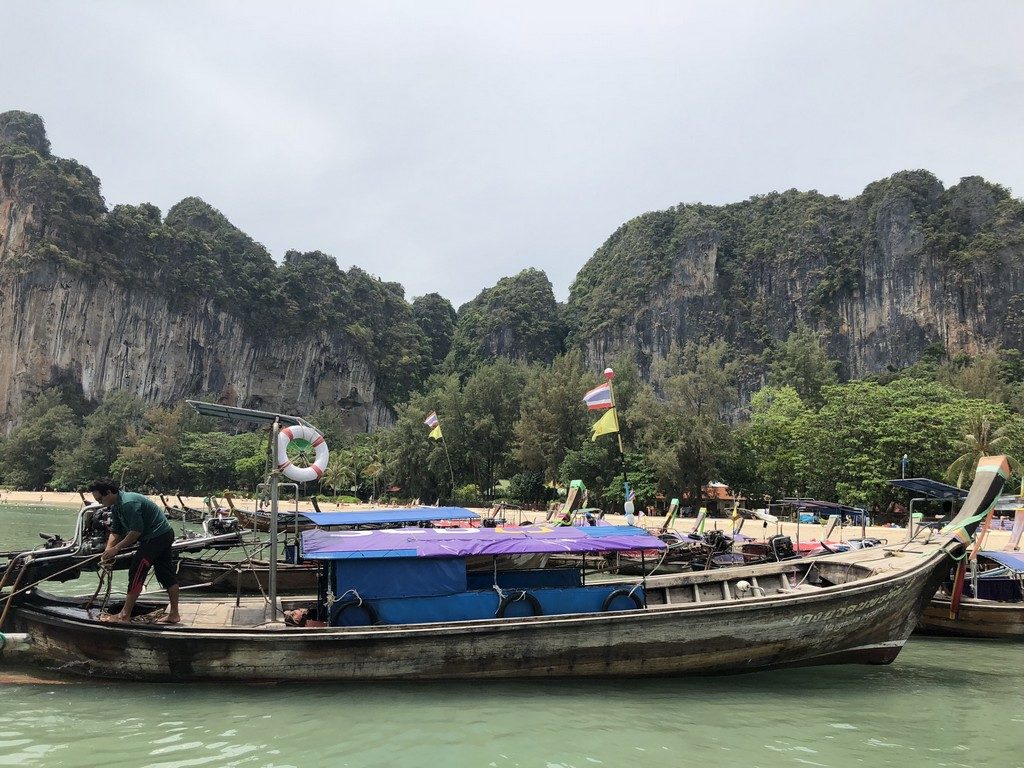
Typical boat at Railay Beach.
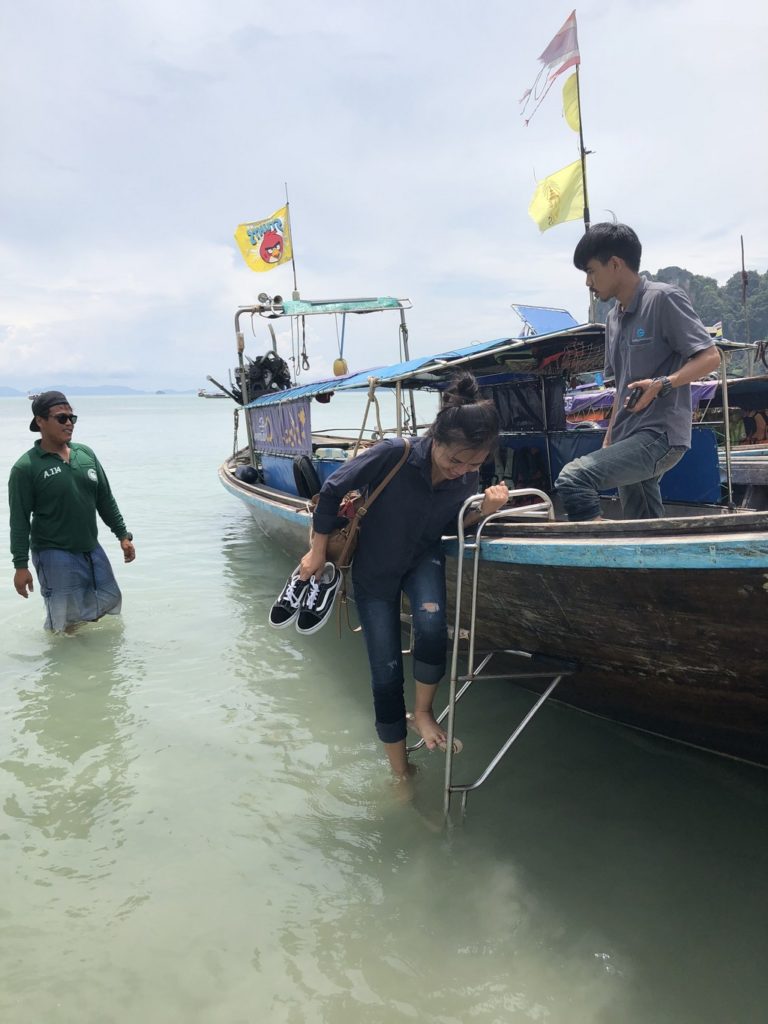
Arriving at Railay Beach. We are the only ones wearing trousers.
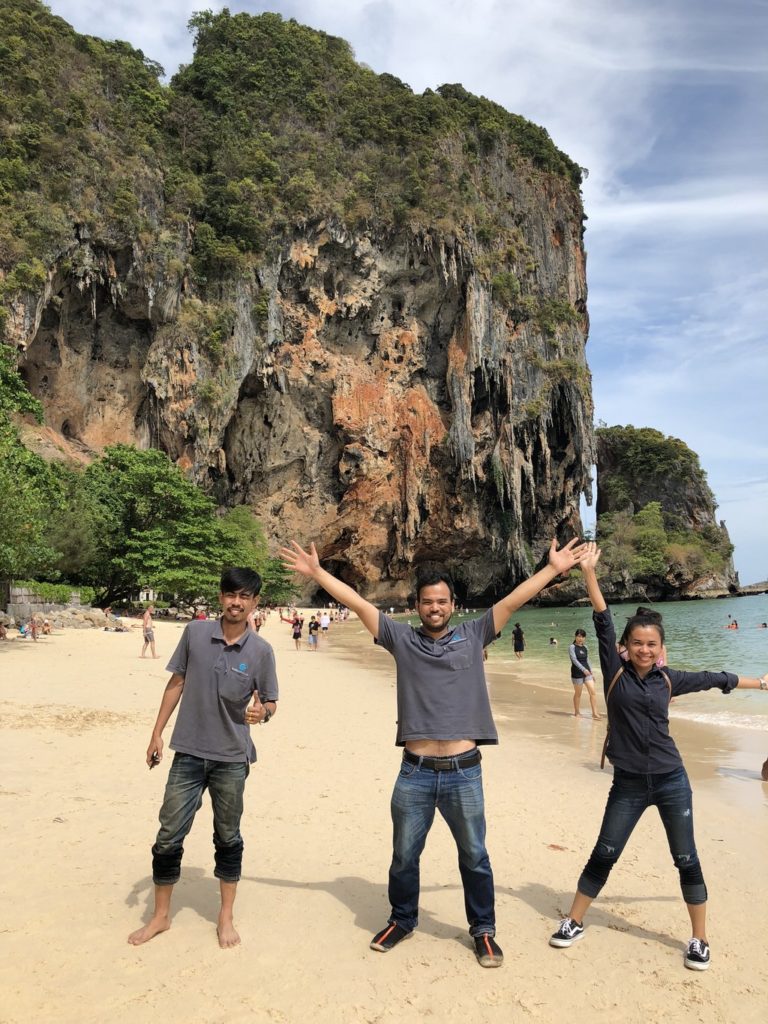
Stretch!
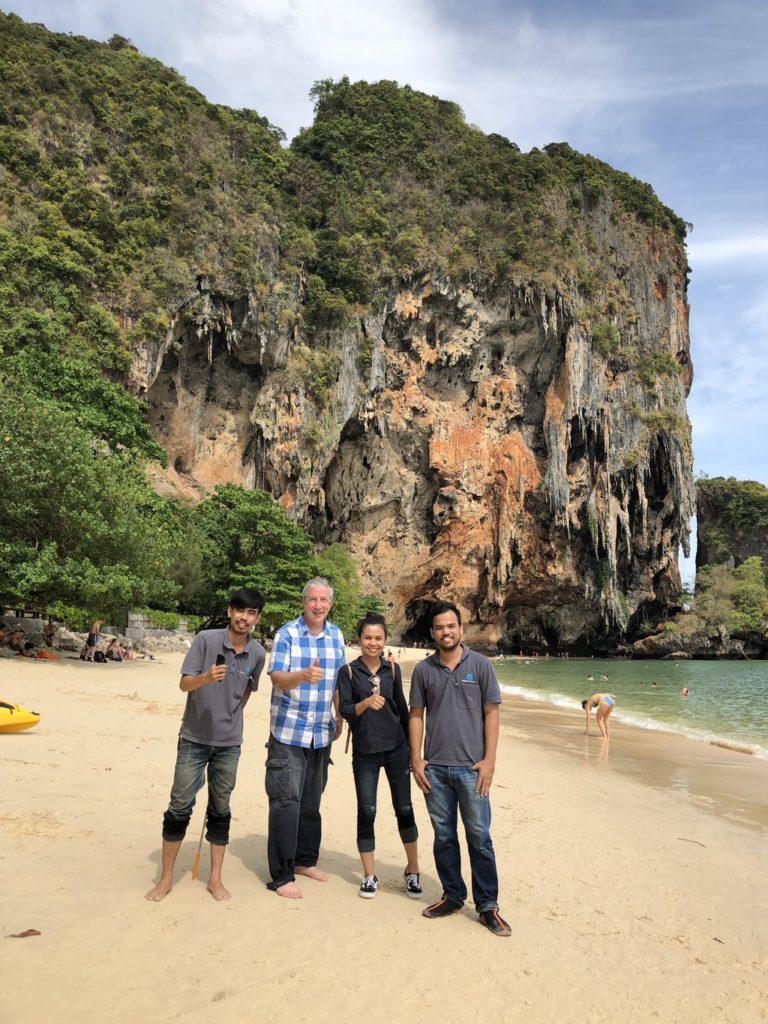
Another beautiful view of Railay Beach.
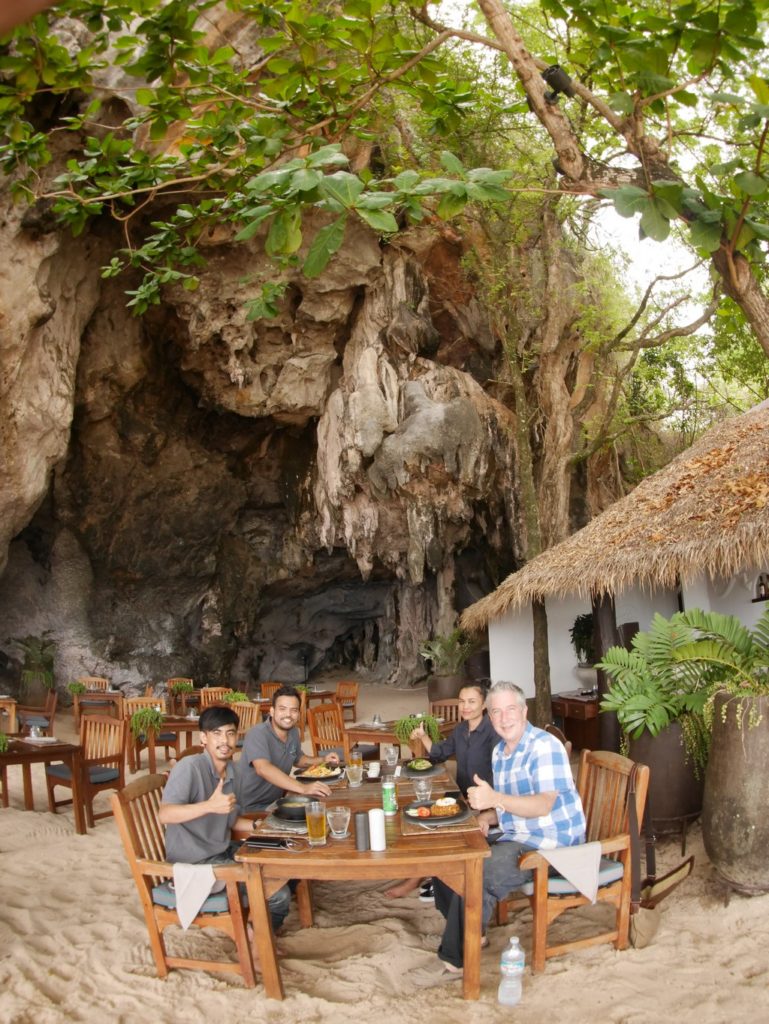
The Grotto Restaurant at Railay Beach is a natural cave. What a treat!
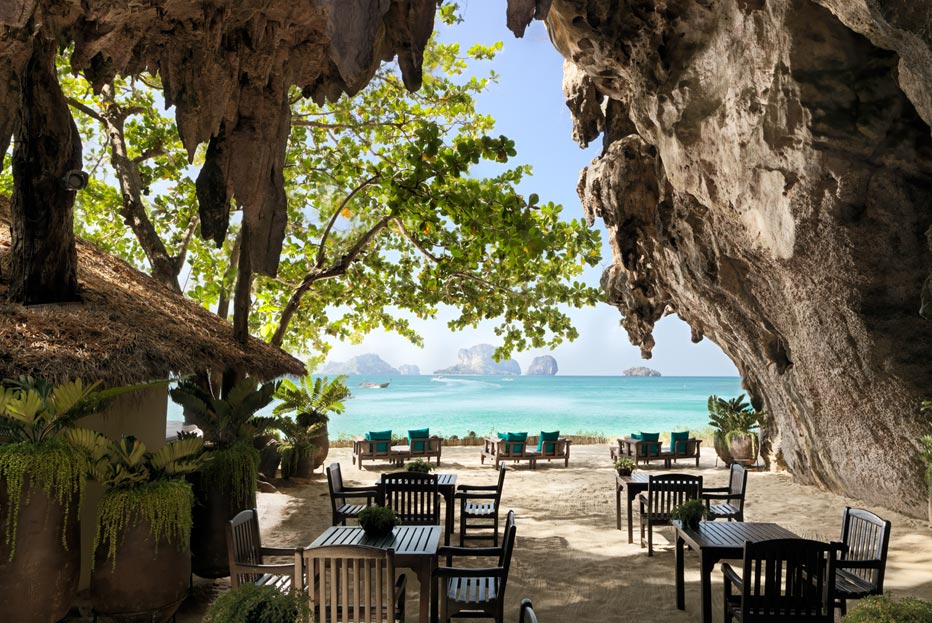
The Grotto view (photo from their website http://www.rayavadee.com/en/)
Departure preparation:
After lunch, we took some photos on the beach in front of the Grotto. We only had a little time, as one of us had to catch a flight in 2 hours.
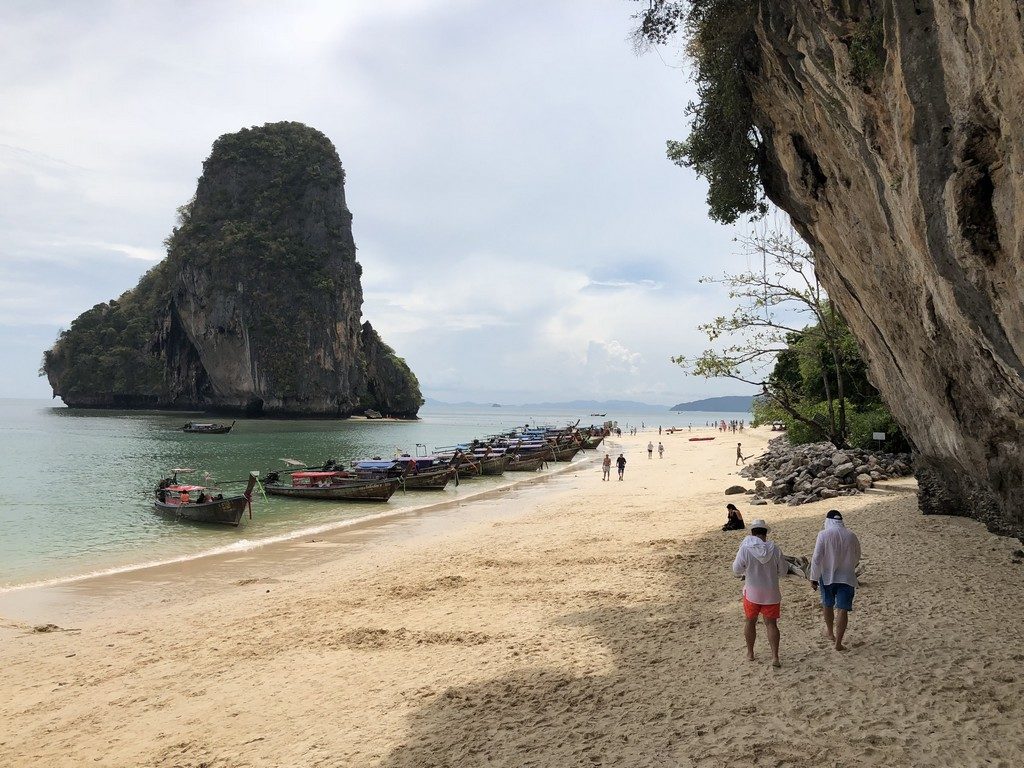
This is the view from The Grotto restaurant. I have to pinch myself to make sure I am not dreaming.
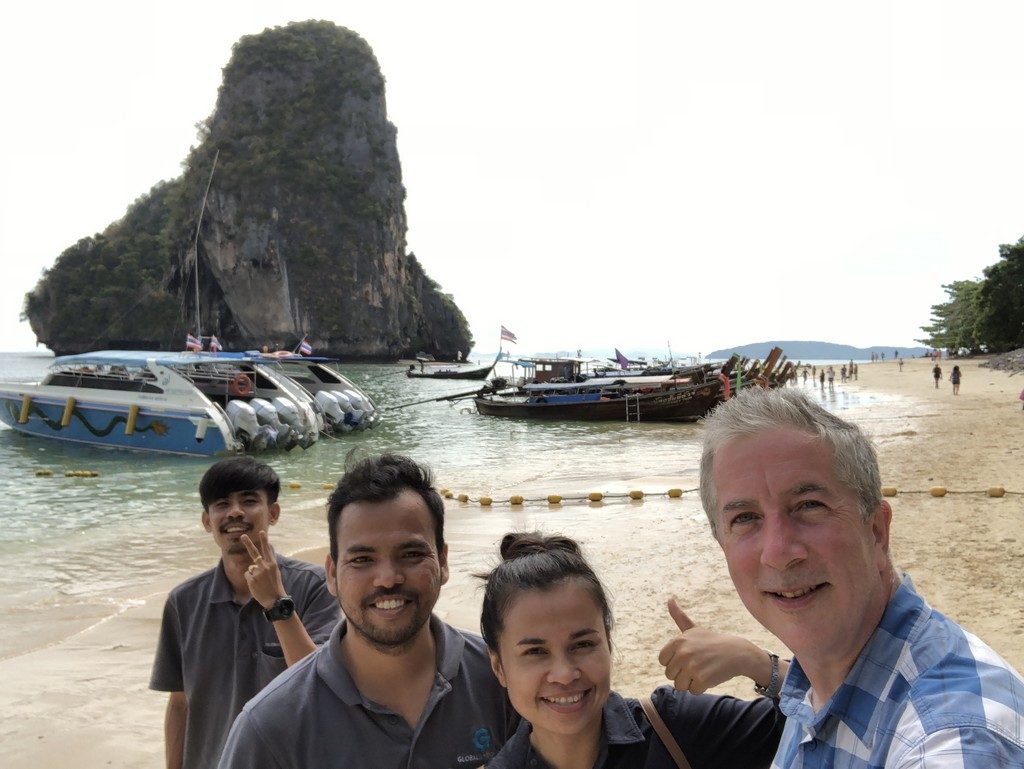
And yet another beautiful view of Railay Beach.
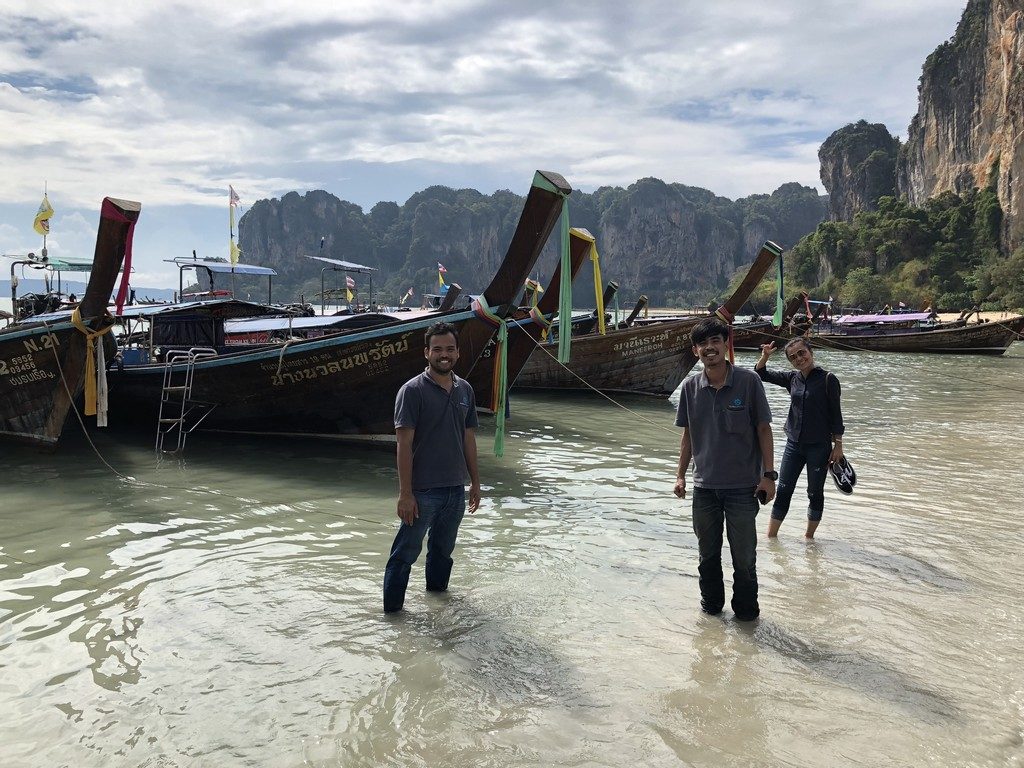
Departing from Railay Beach. Sad to go!
The Results:
When we got back to Bangkok, the team spent a few days merging scan files and making sure all the data was watertight, so the artists could then 3D print and do other processes to create their artwork.
Remember long ago in the story, this is what the roots looked like….

Ek uses the Artec scanner. Fast and very easy to use.
After we 3D laser scan, it takes several days of work to edit and merge all the data we collected. We have the fastest computers available with 64GB of RAM and it will still take many hours to merge and align all this data. We scanned everything at very his resolution, typically 0.05mm to 0.10 mm. In our office, we have tools that measure to 0.005mm accuracy. The 3D models generated by Creaform’s VXElements and Geomagic’s DesignX look like this!
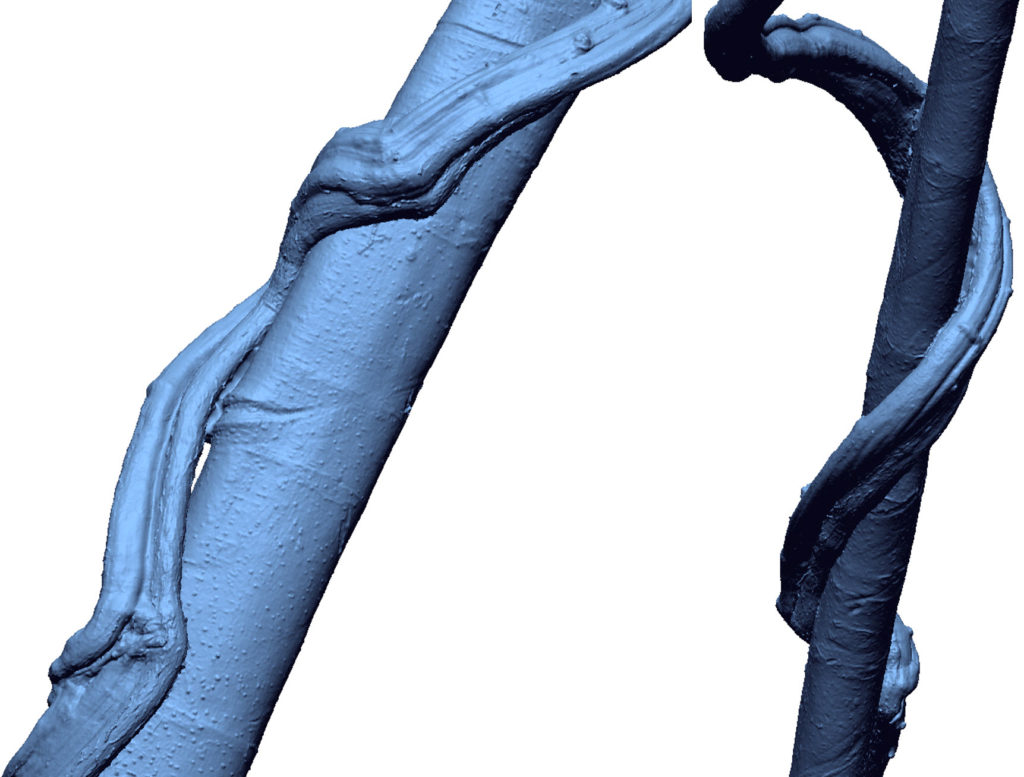
3D scanned vines and roots using Creaform Metra scanner.
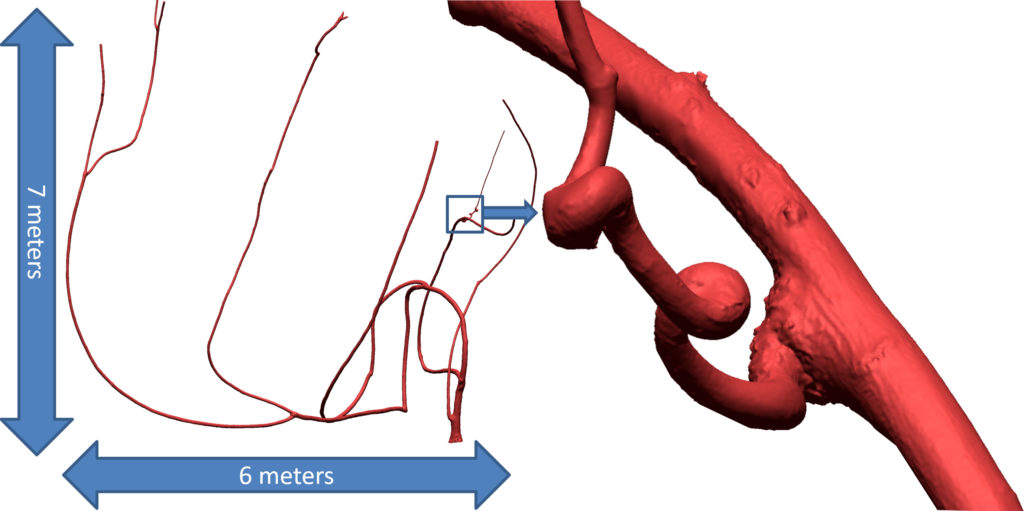
The big root/vine 3D laser scanned by Creaform Metra.
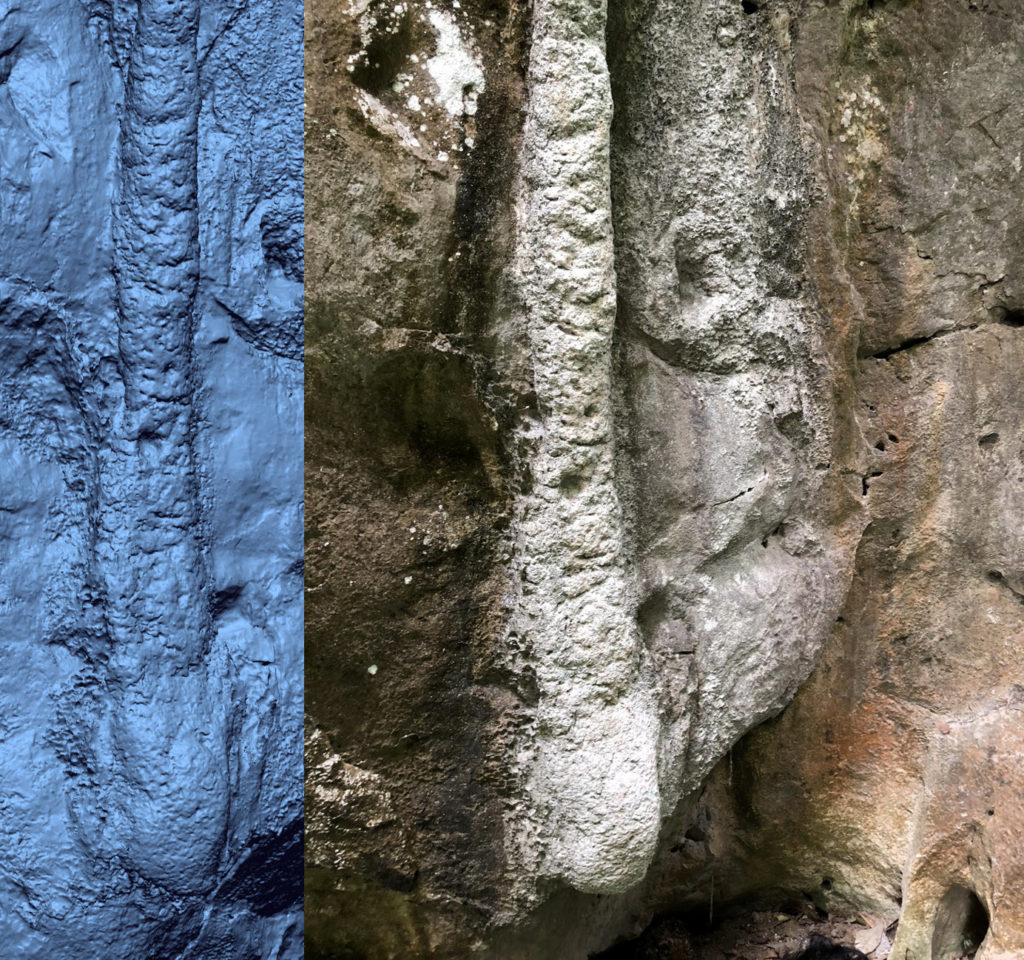
Rock face 3D laser scanned.
The rock turned out well. It looks like a rock. But bright green! From the data we calculate the EXACT volume to be 1.141822 cubic m. and surface area 7.186319 m2. Computers are amazing!
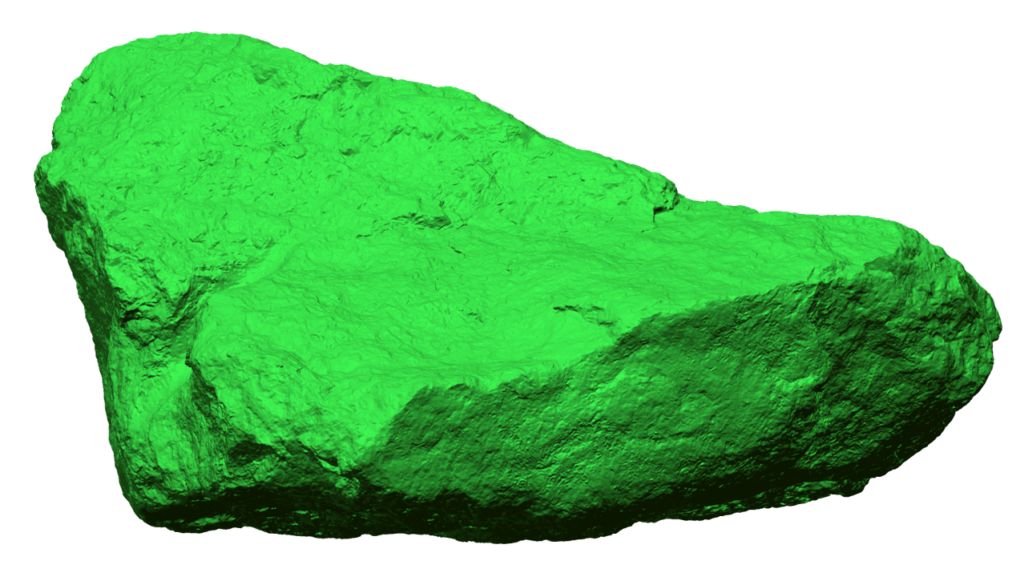
3D scan data of a rock laser scanned with Creaform Metra. Very high resolution.
Laser scanners and software tools we used on the project:
- Creaform for making the 3D laser scanner of Metra and C-Track, along with the VXElements software.
- Artec and their Eva scanner. So simple and easy to use.
- Geomagic DesignX
- SolidWorks
If you want to see the artworks that will be created from this data, you will need to go to Krabi for the Thailand Biennale from November 2018 thru February 2019. The Office of Contemporary Art and Culture (OCAC) puts this show together. More information about the event is located at this website http://thailandbiennale.org
Thank you for staying with us all the way to the end.

